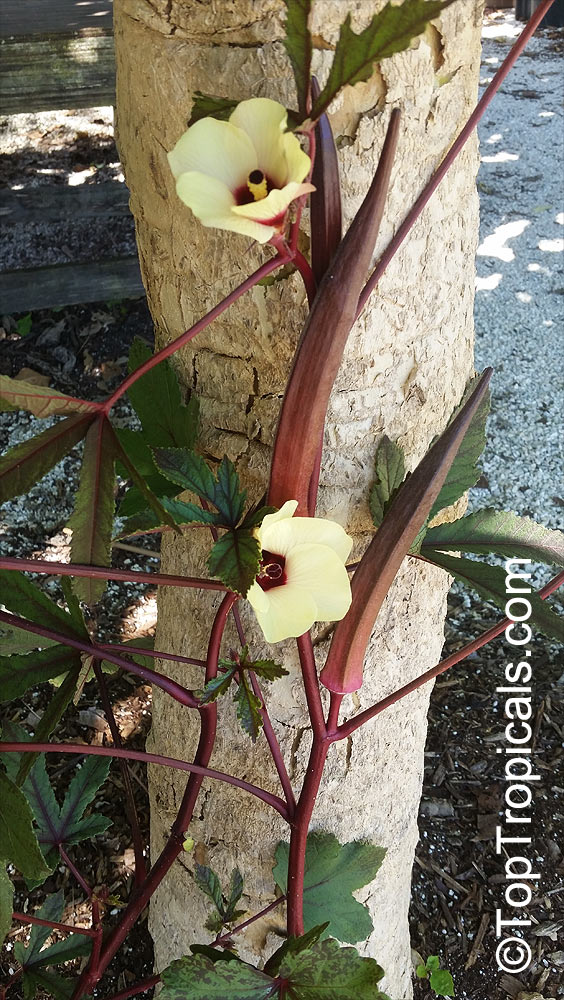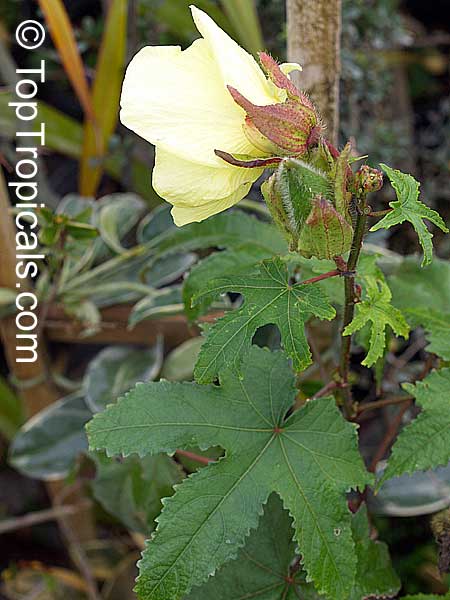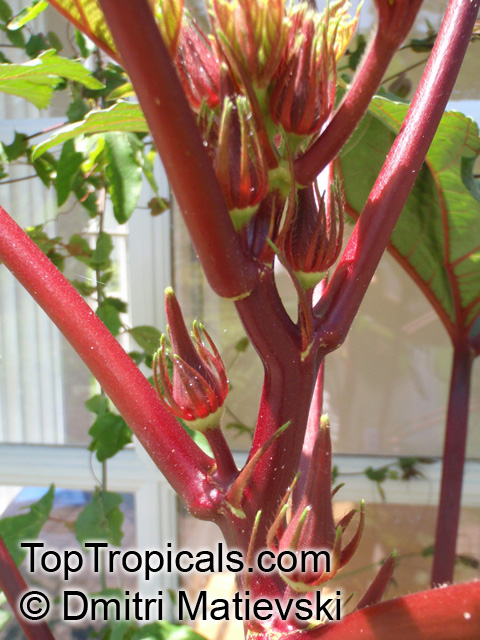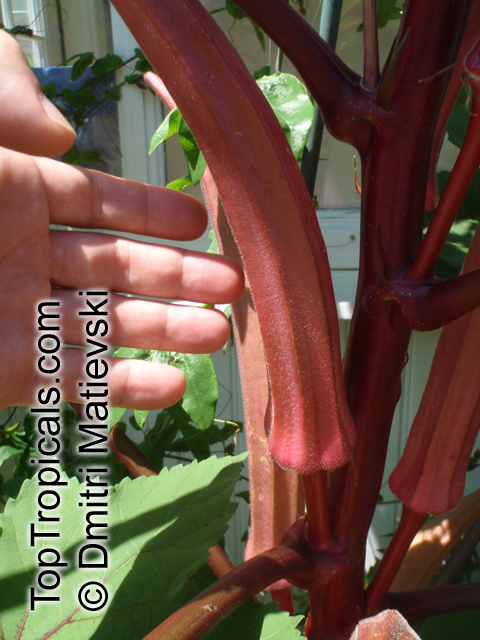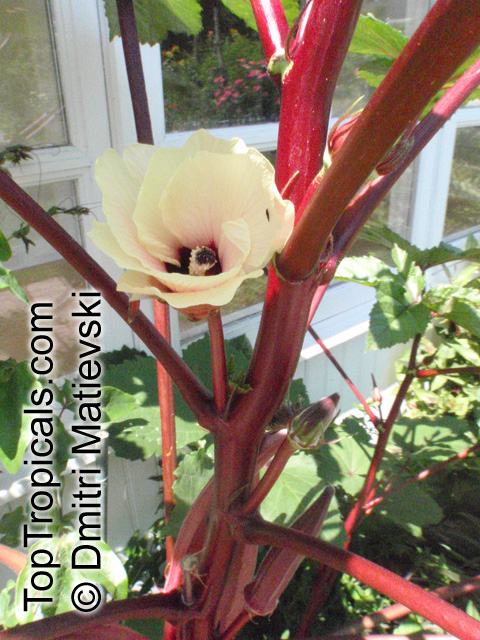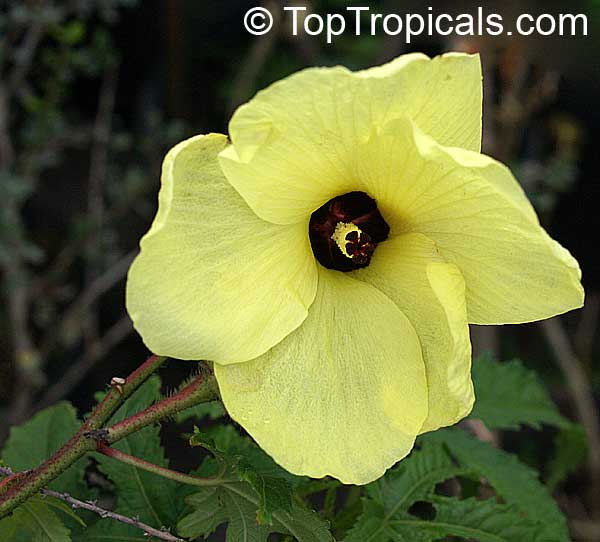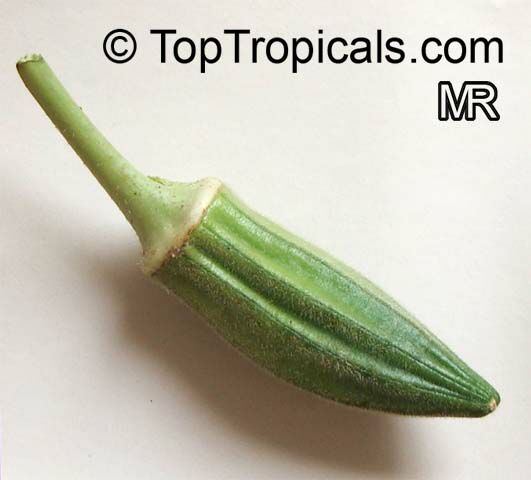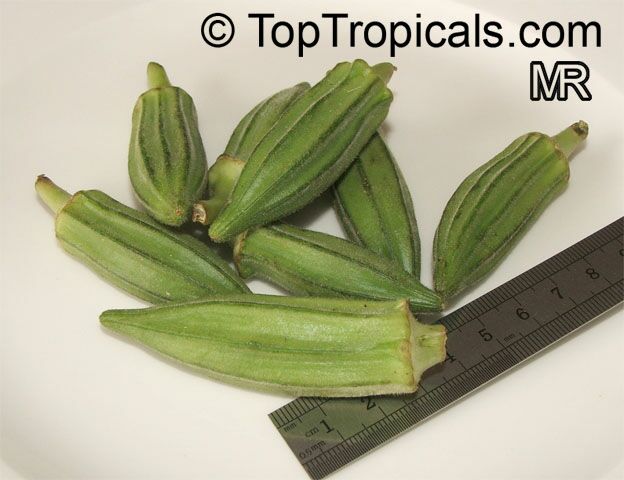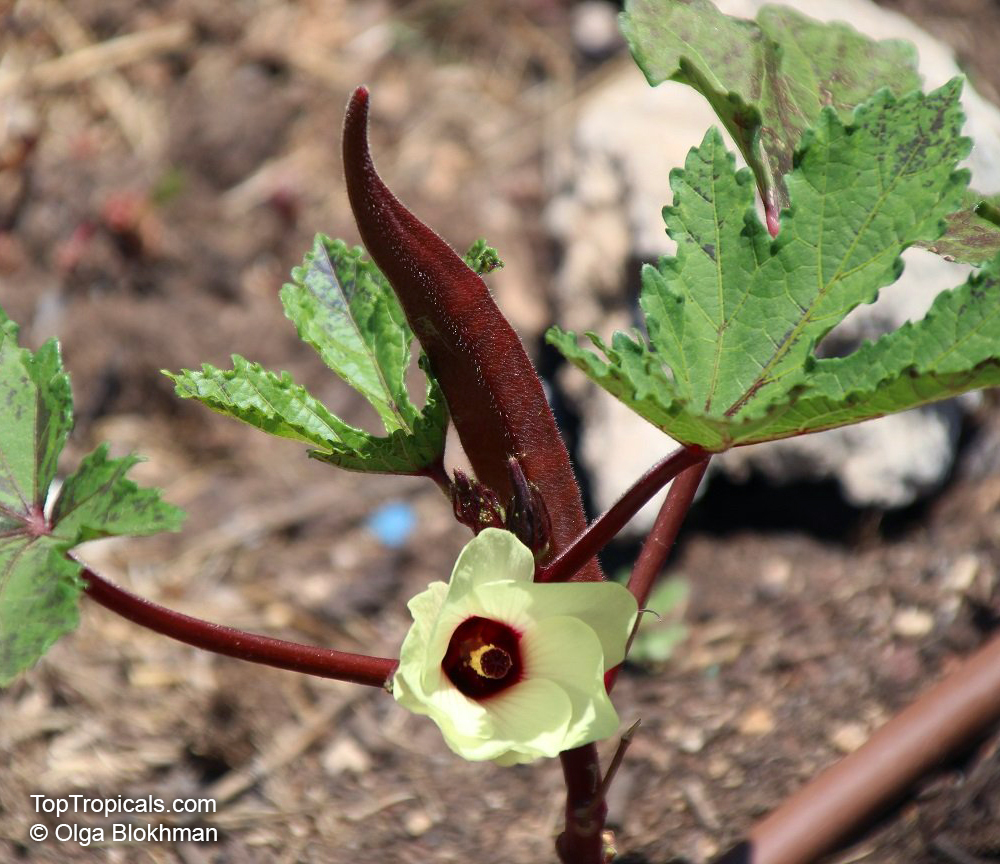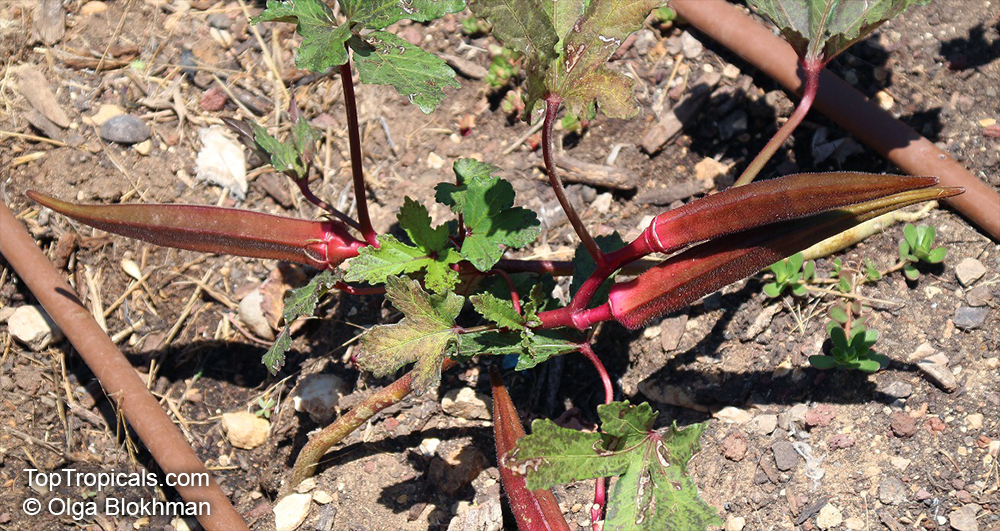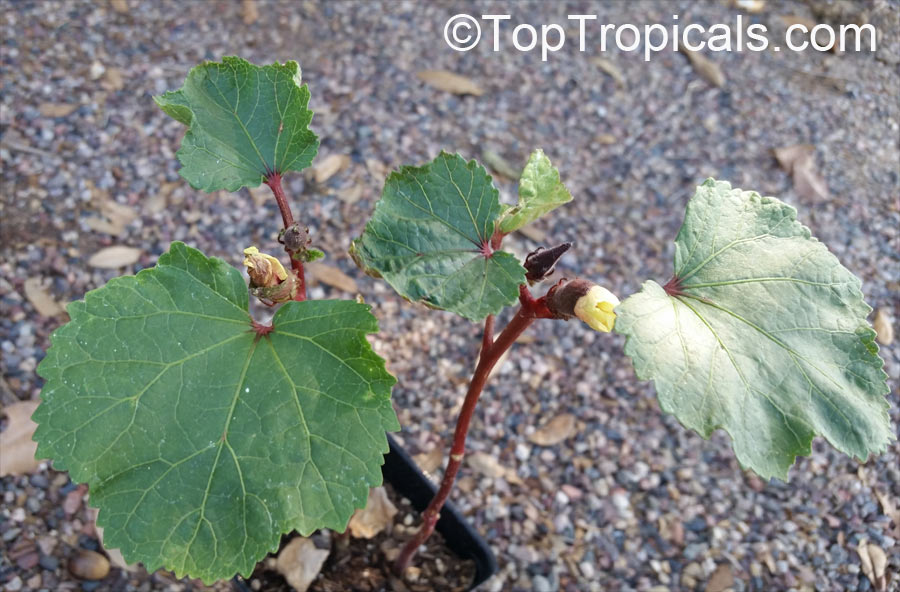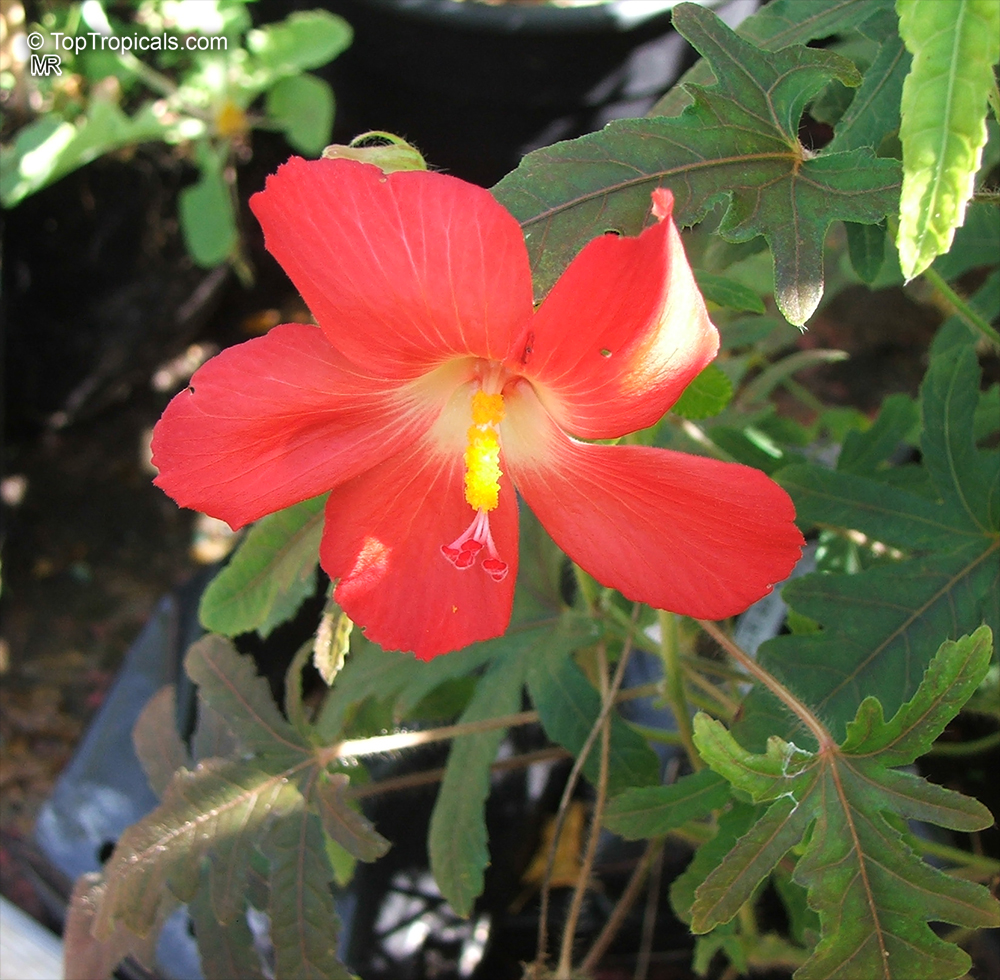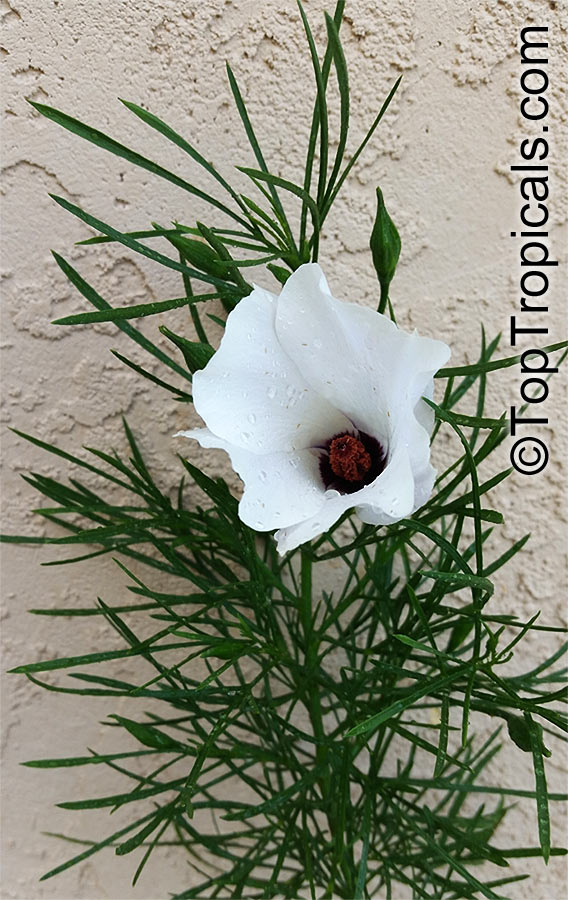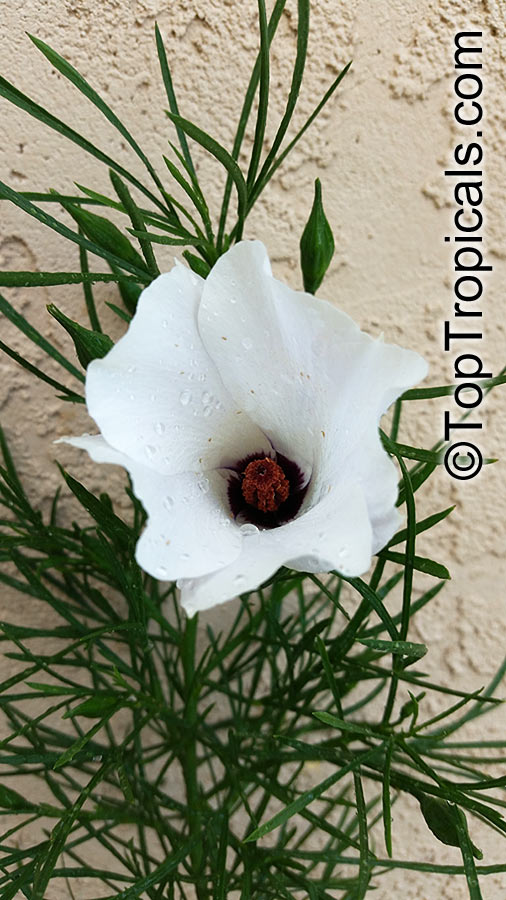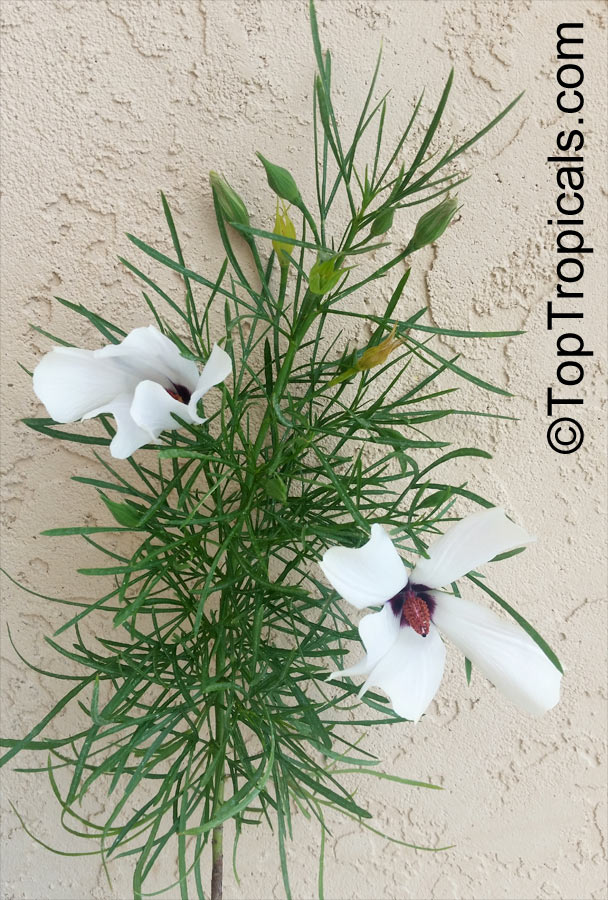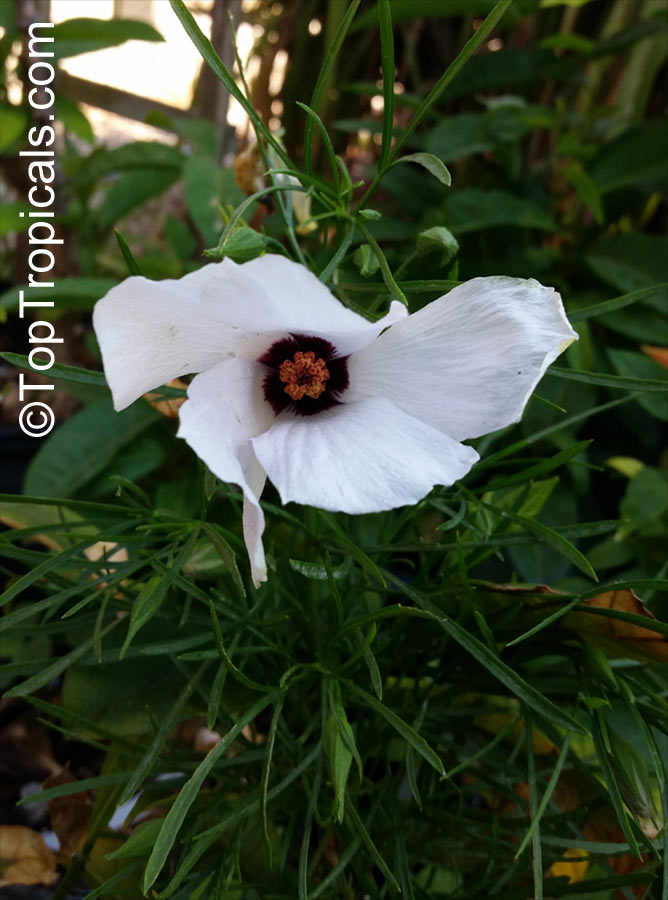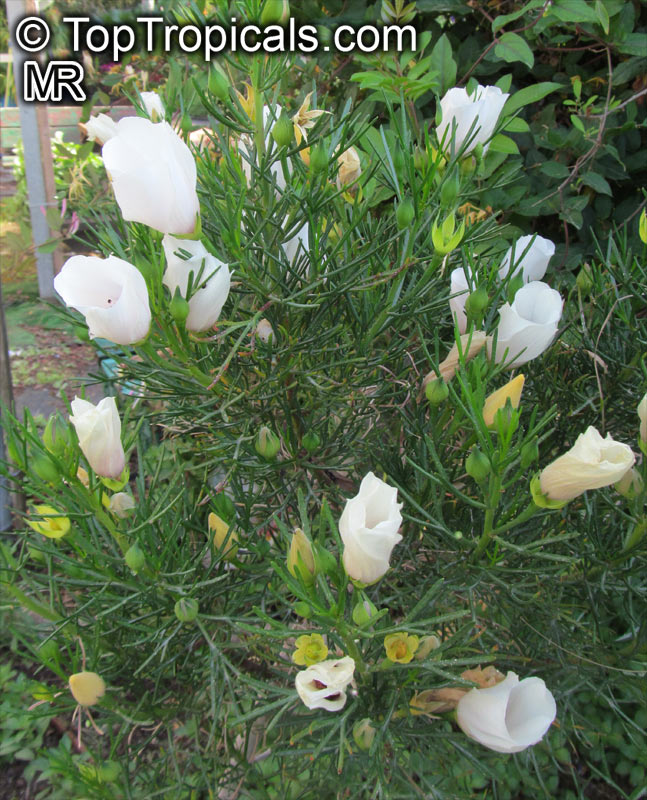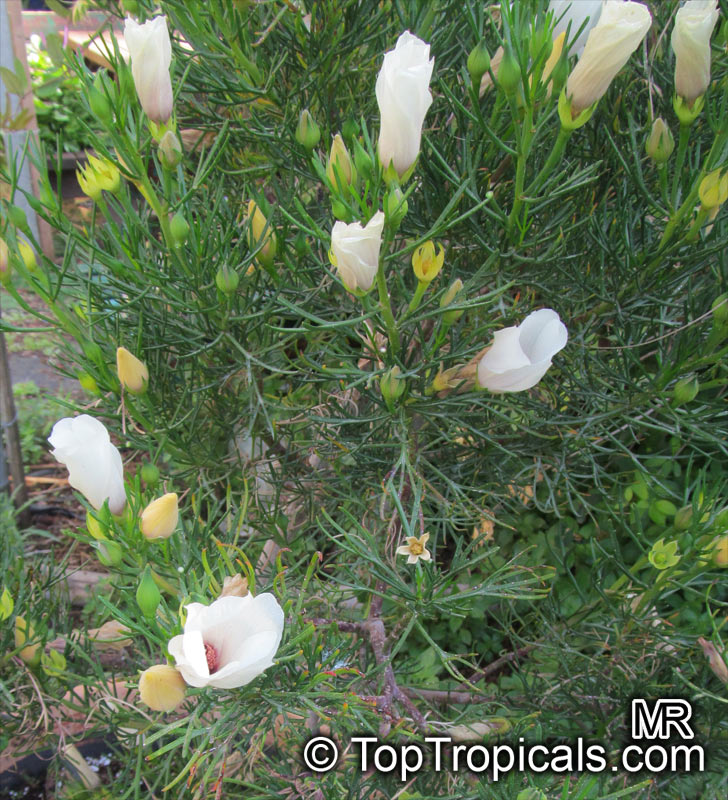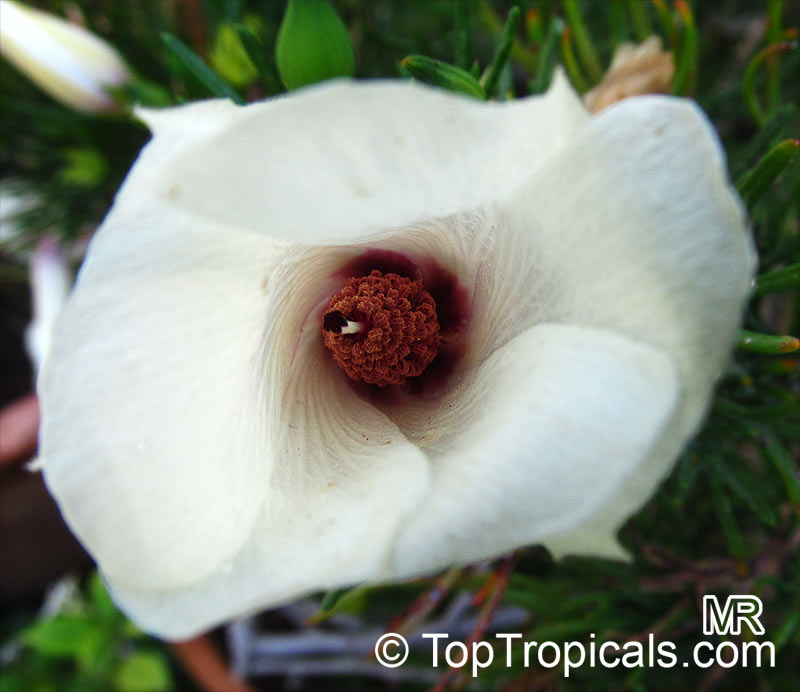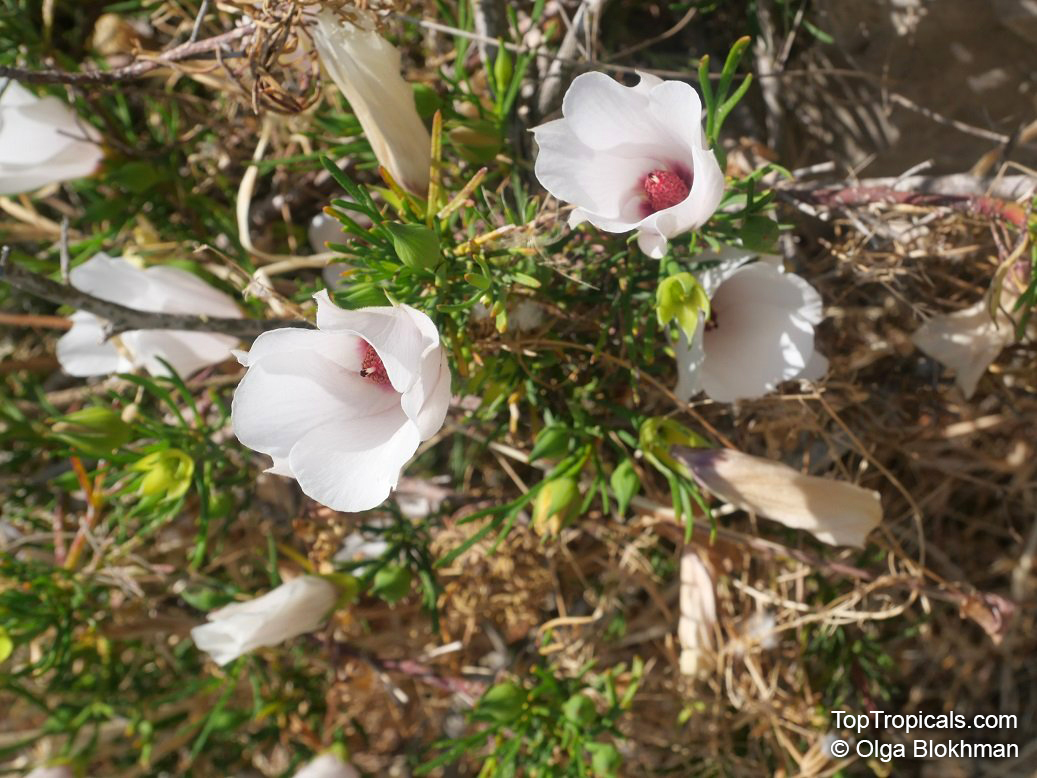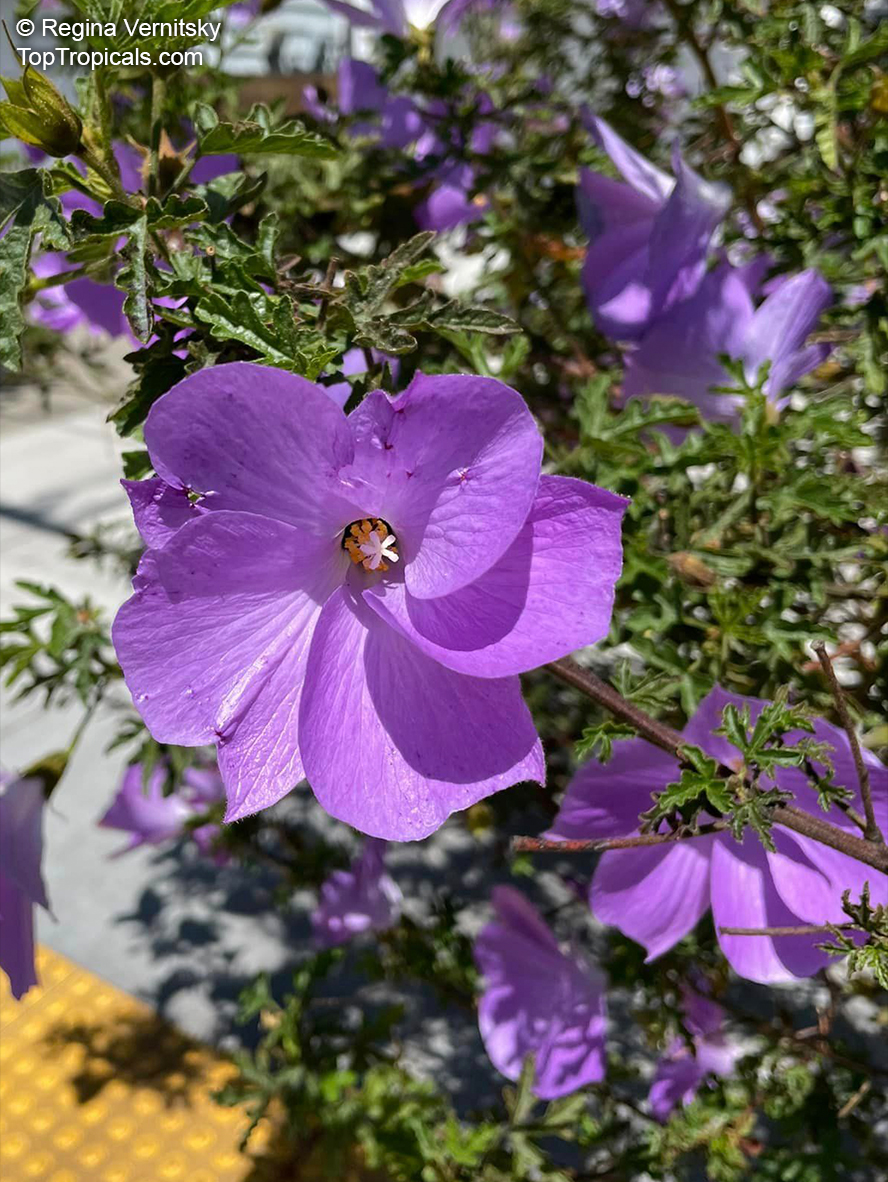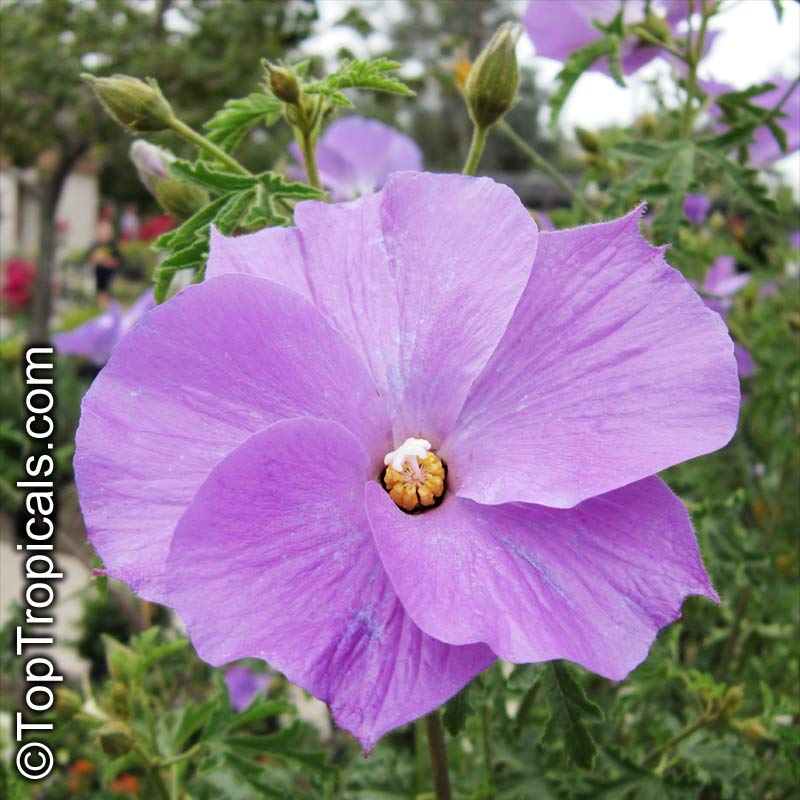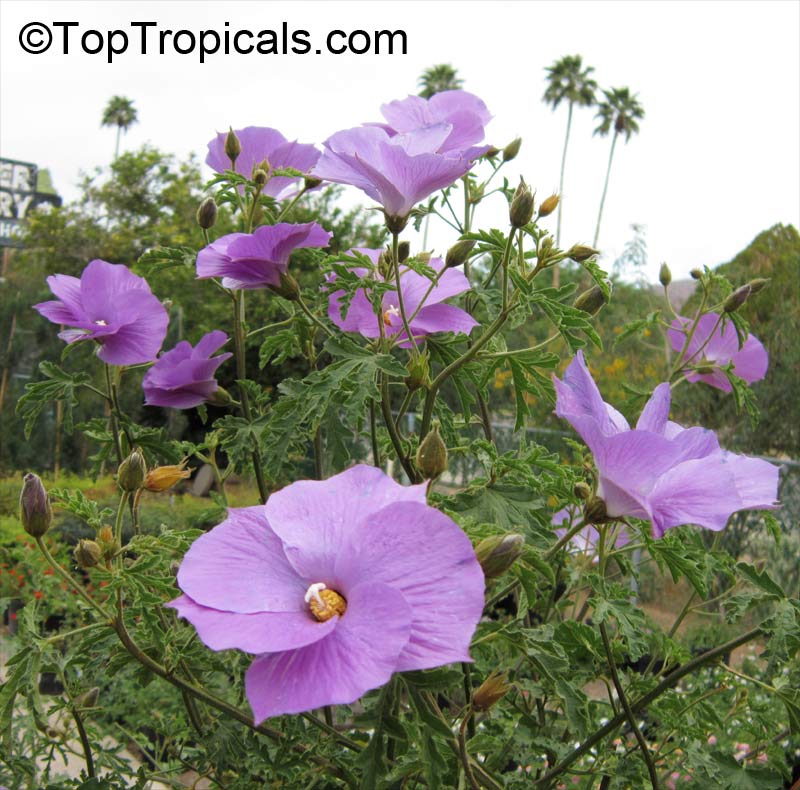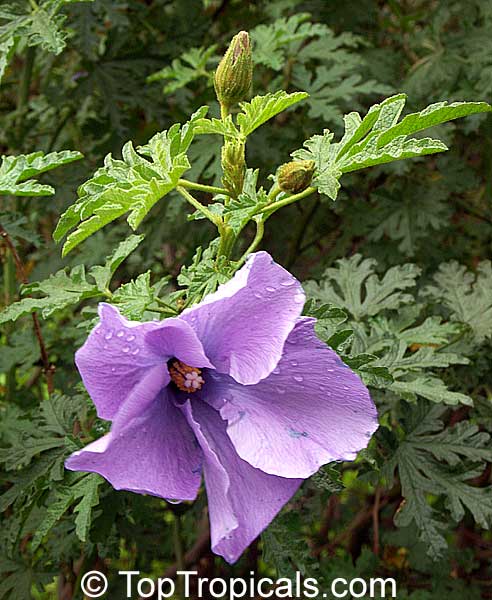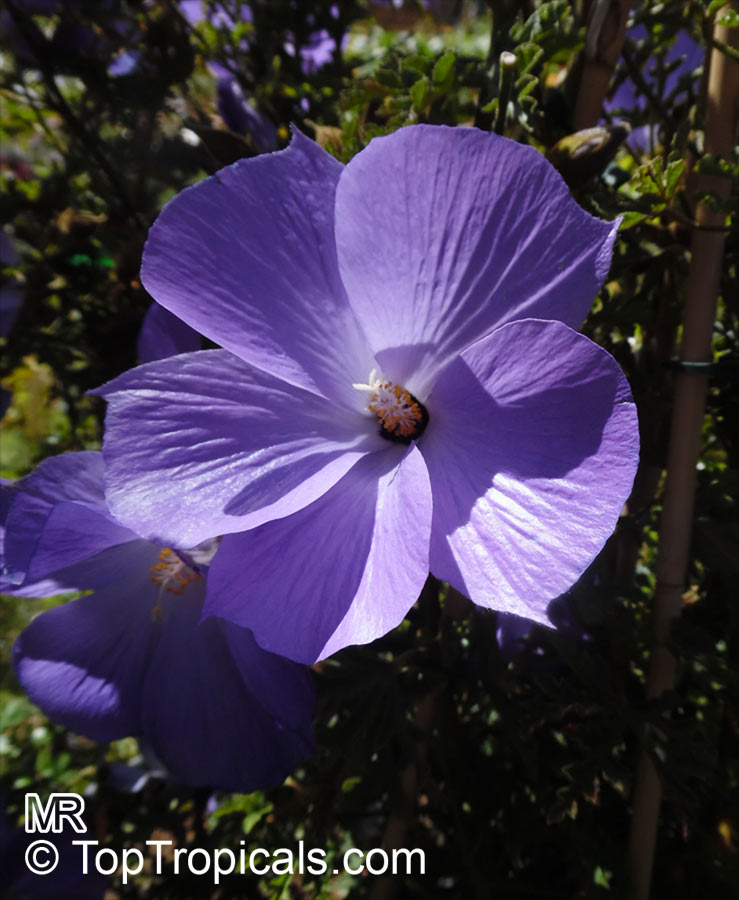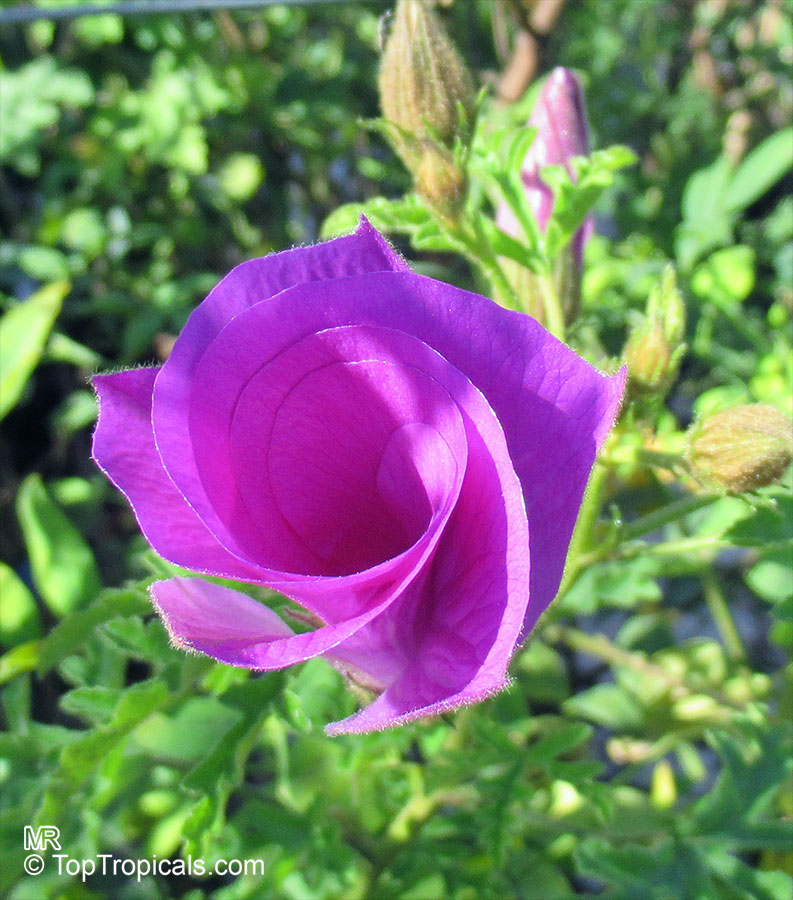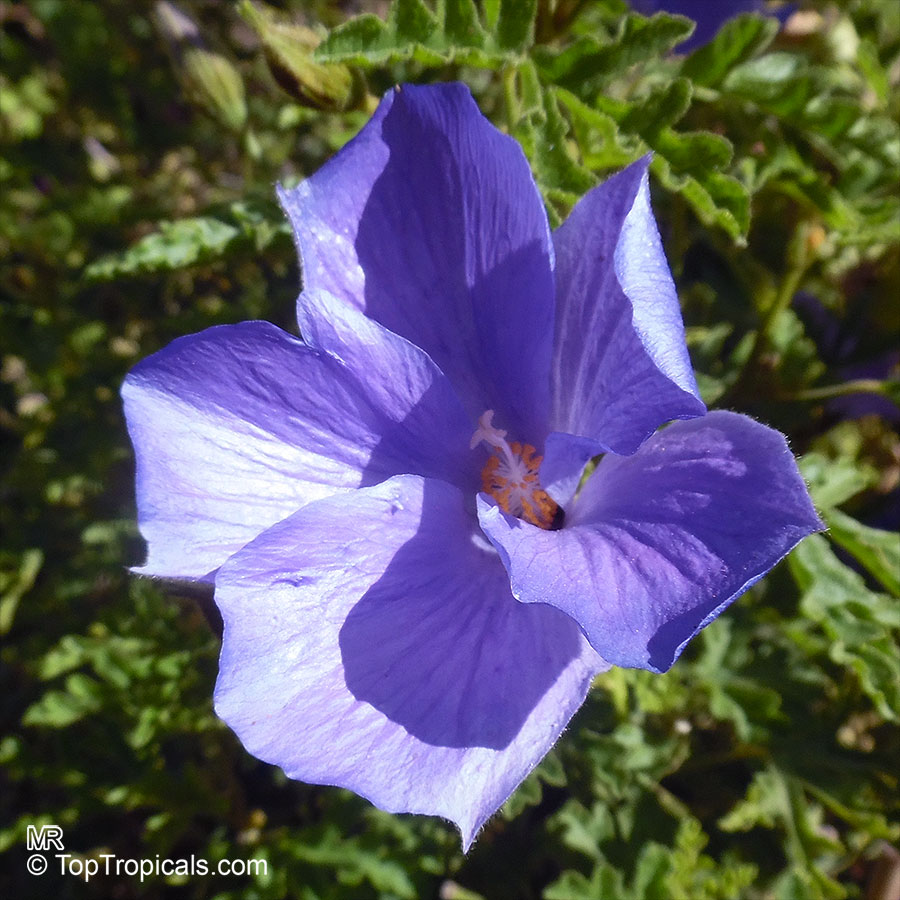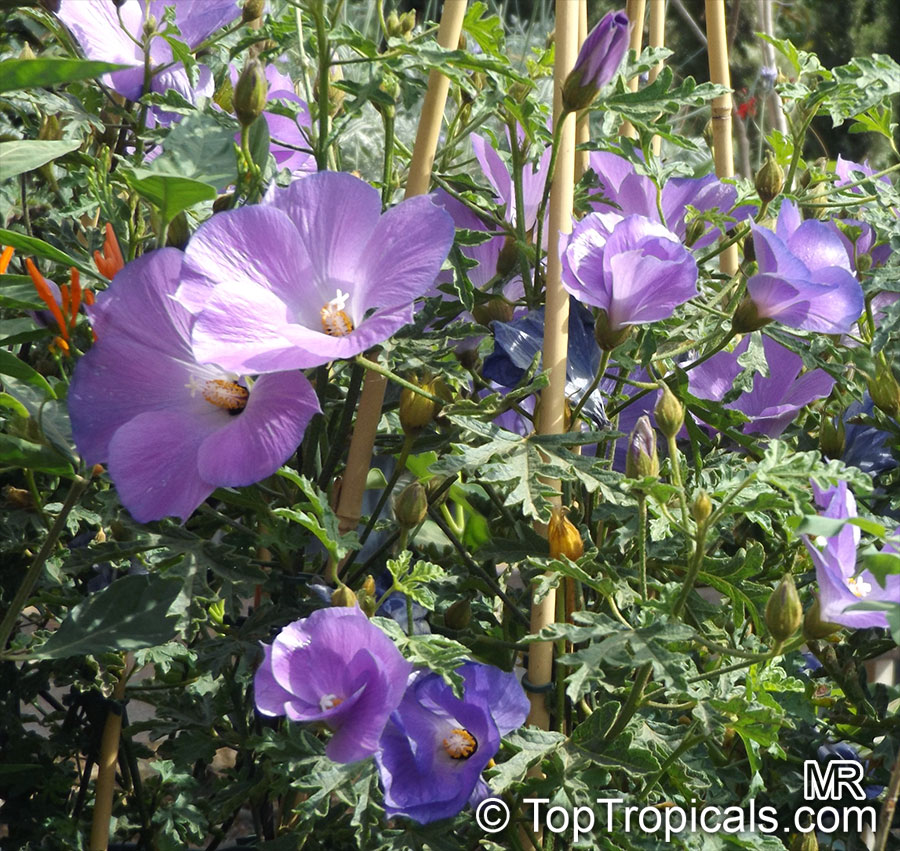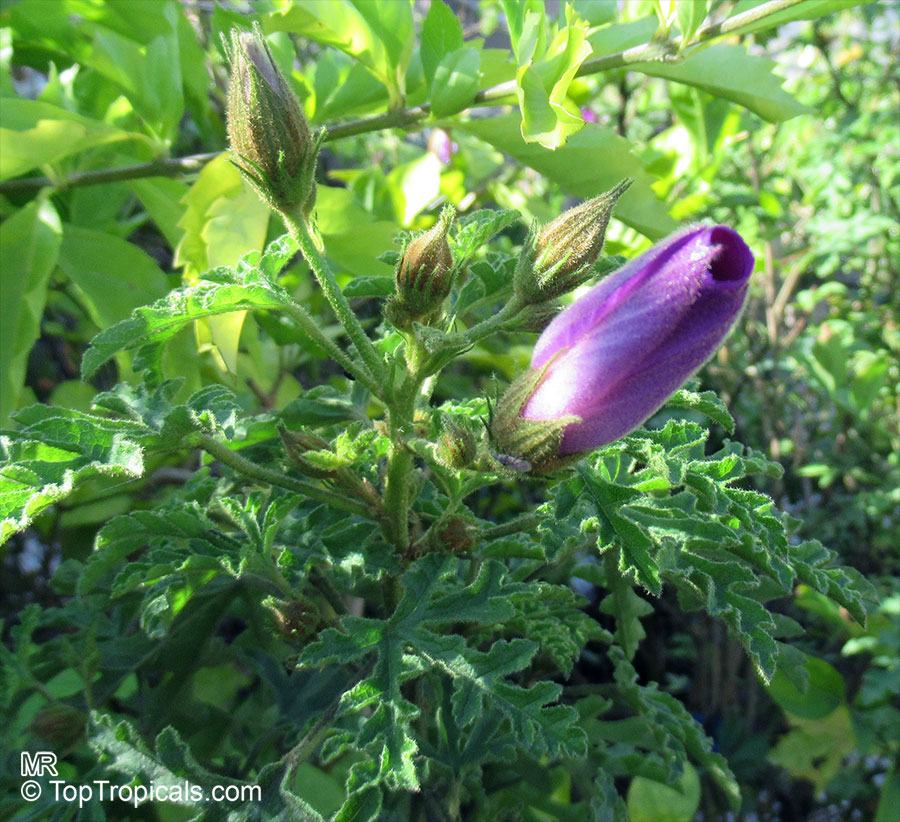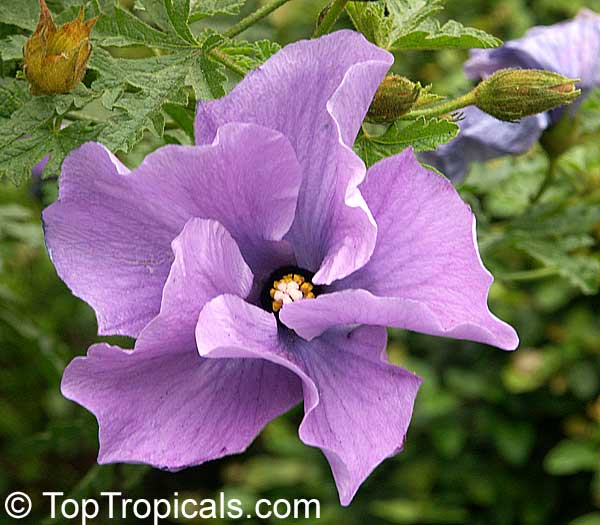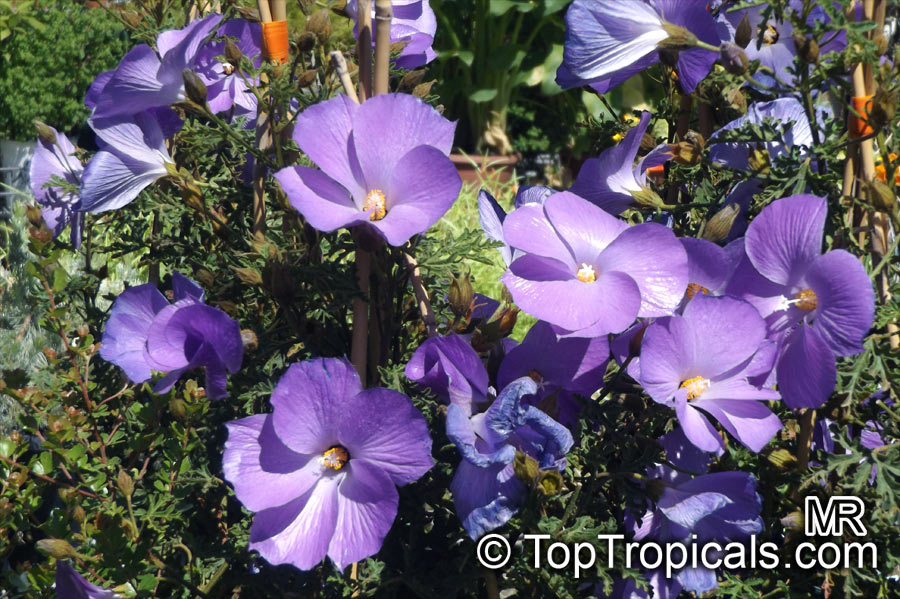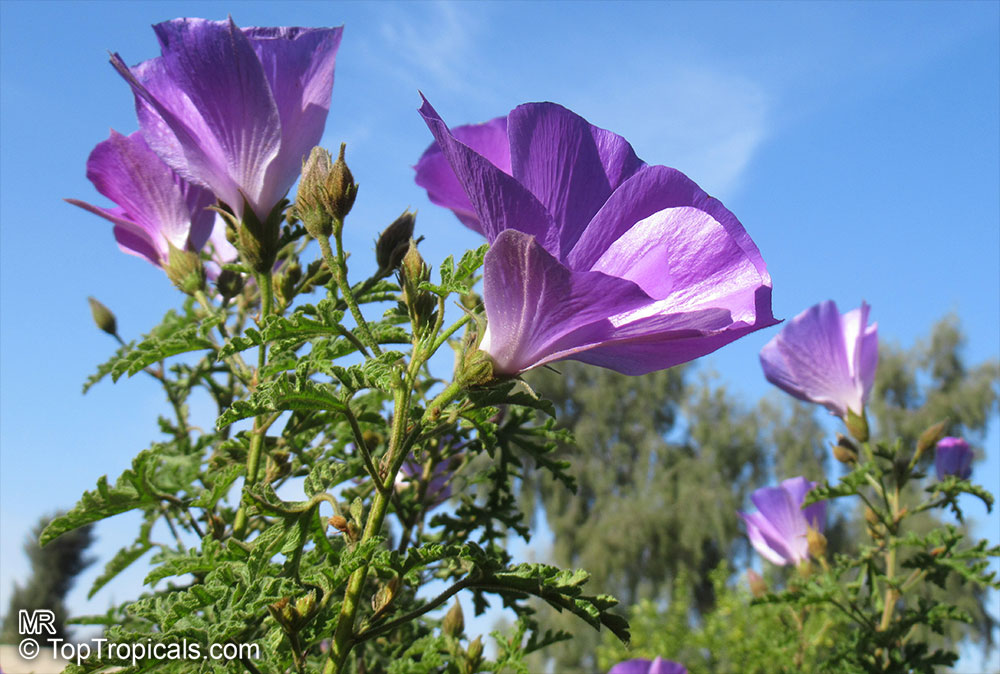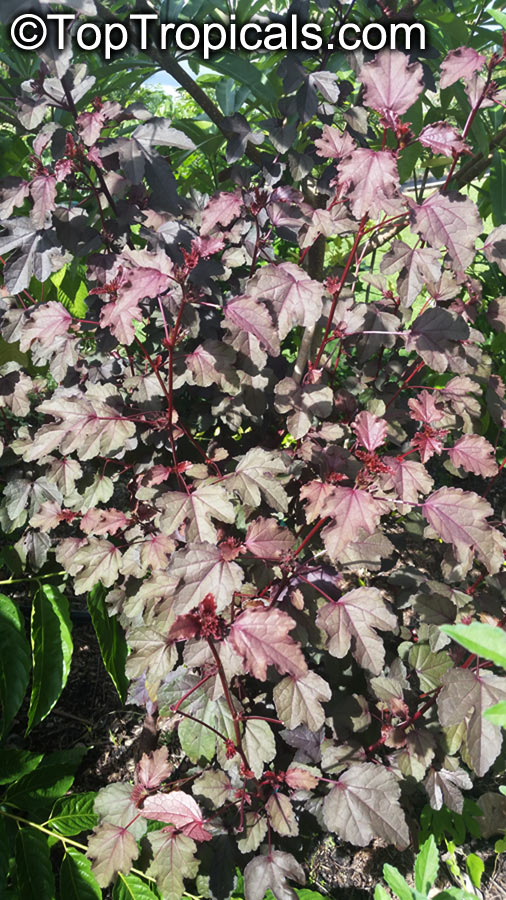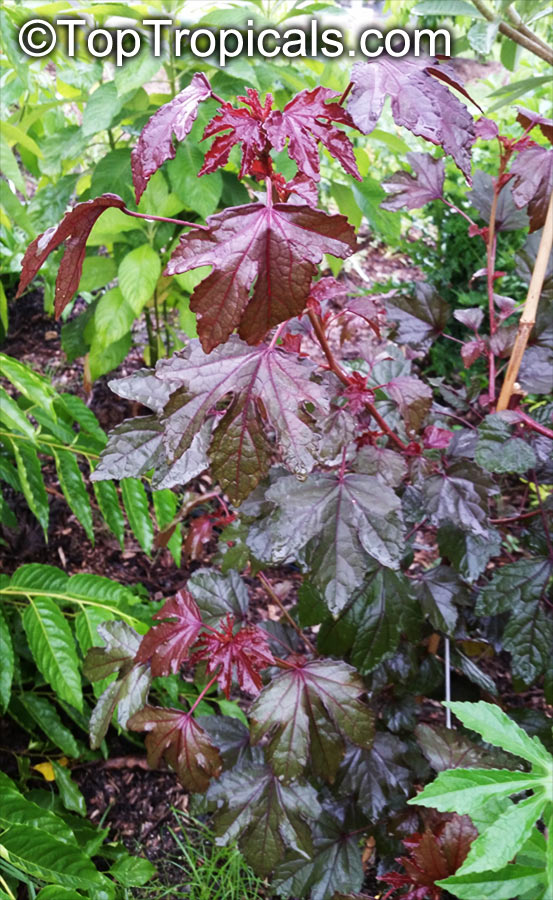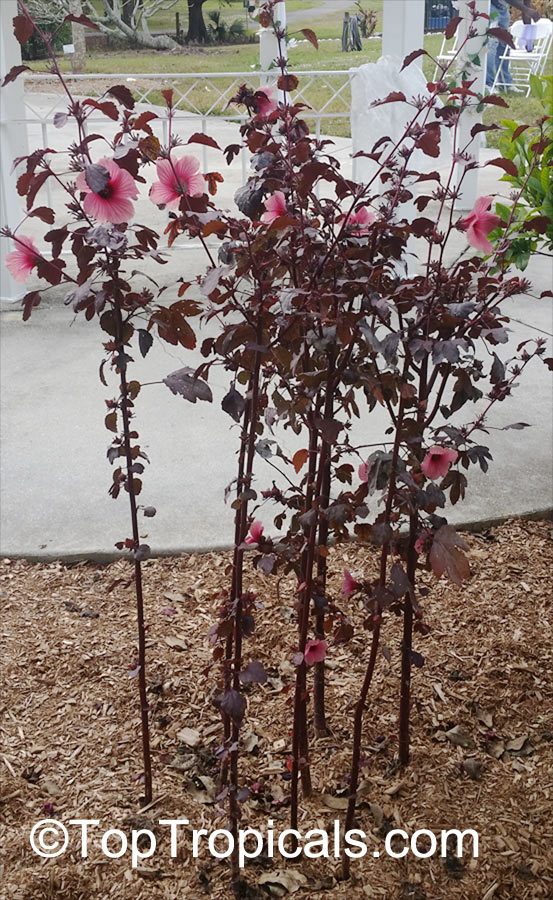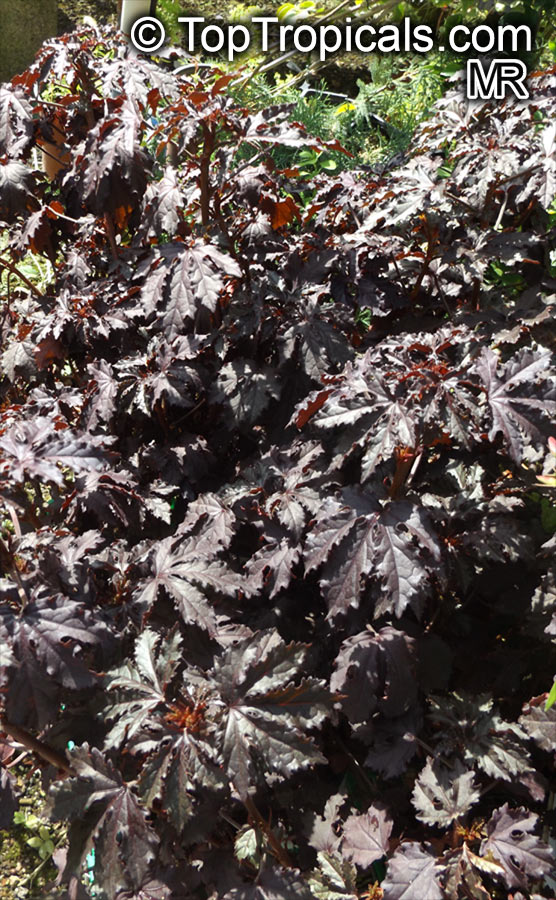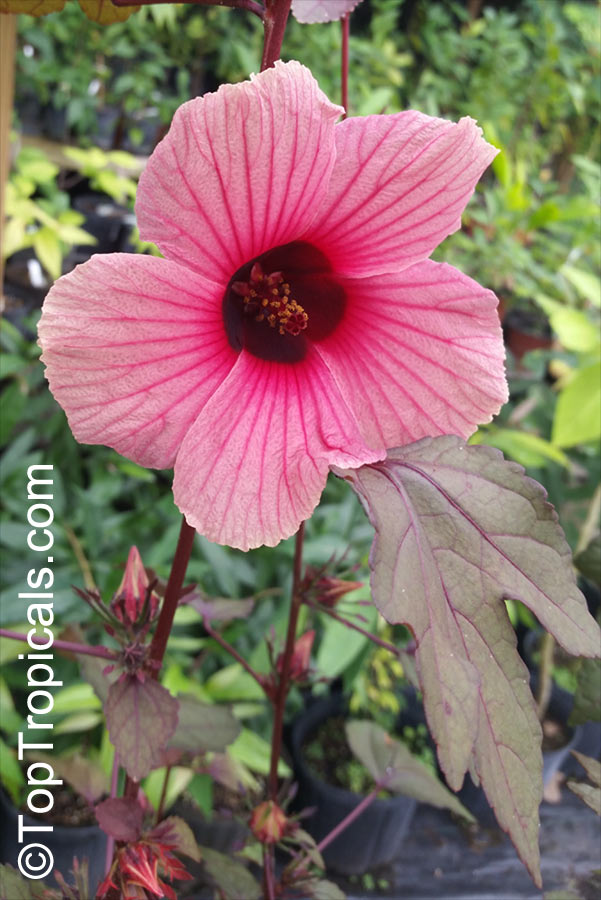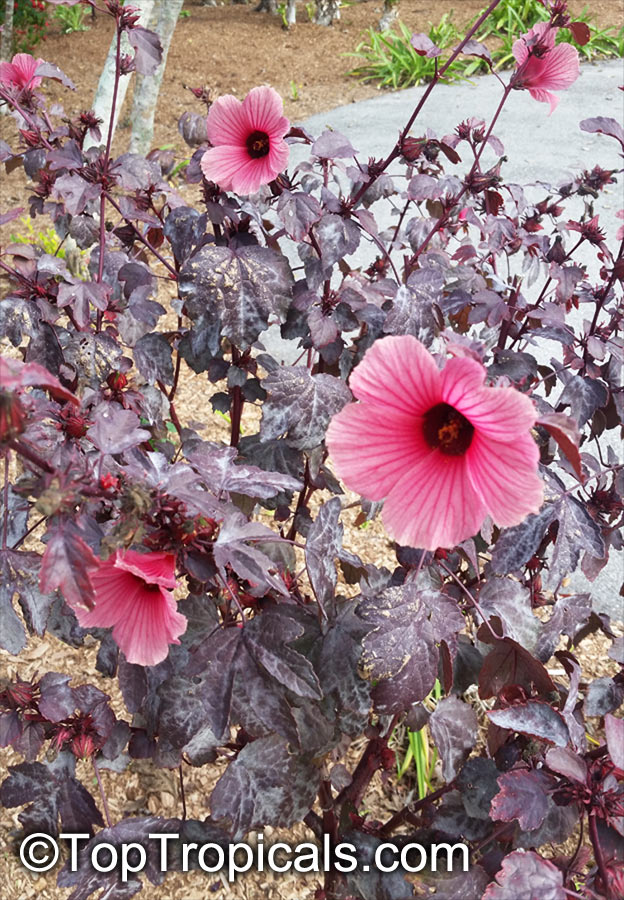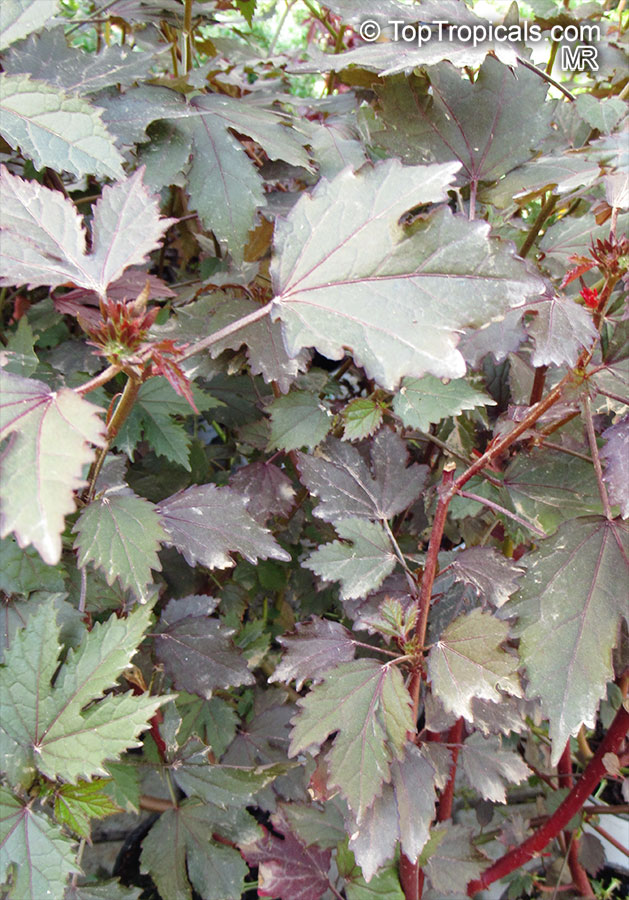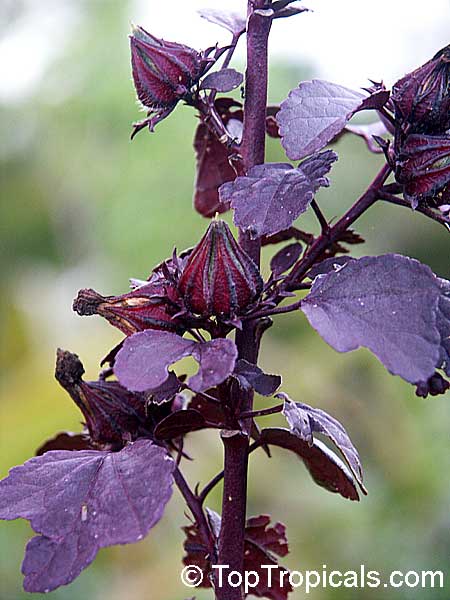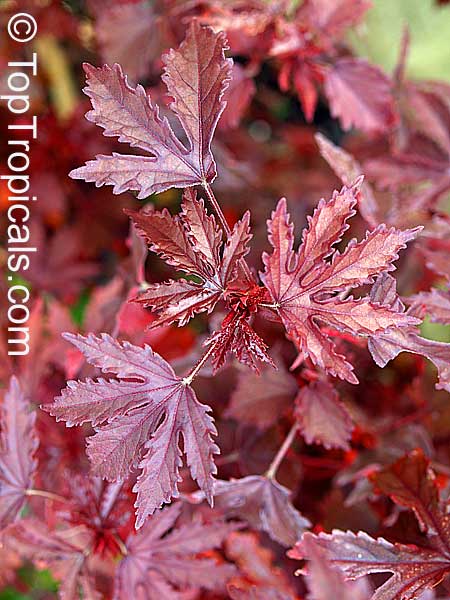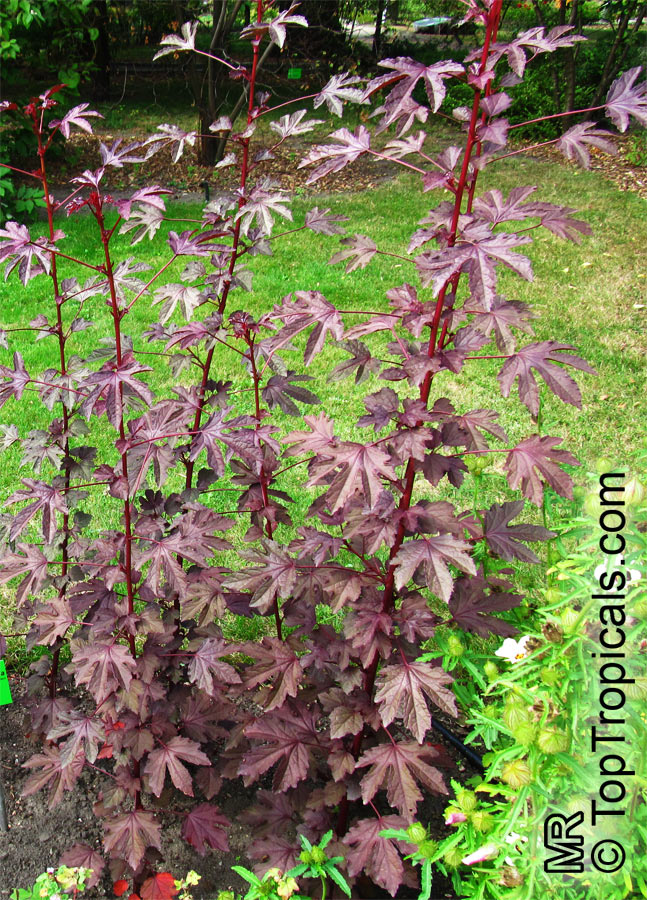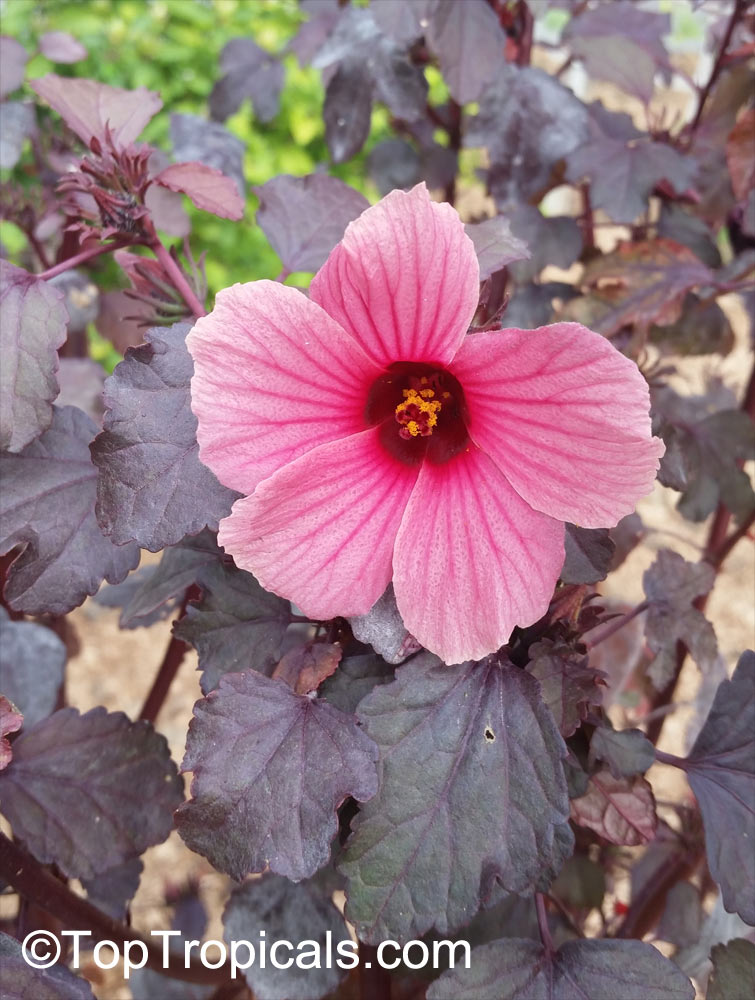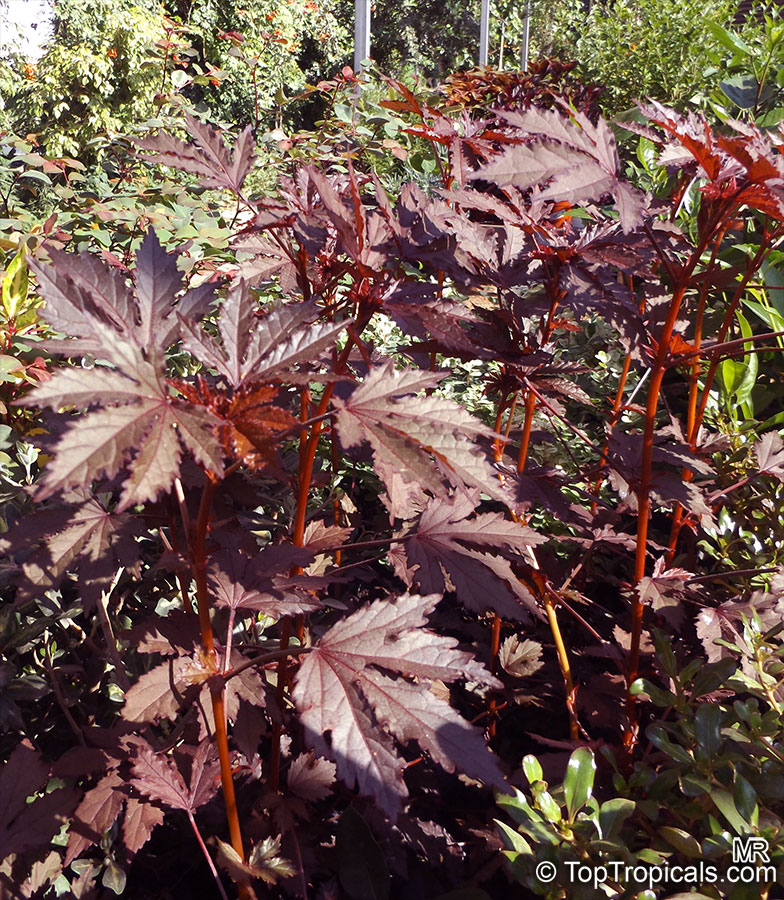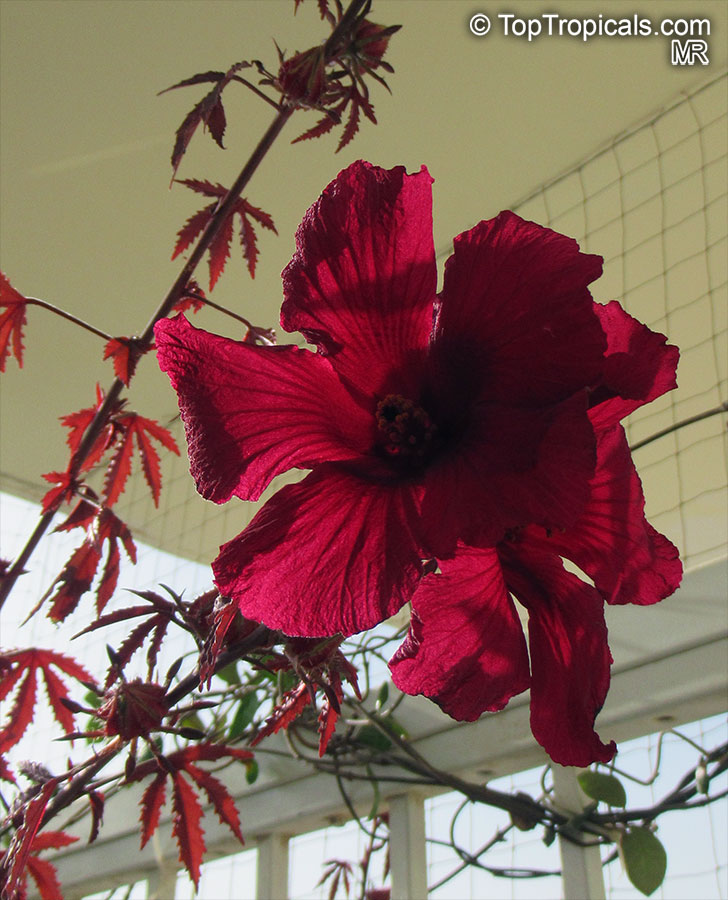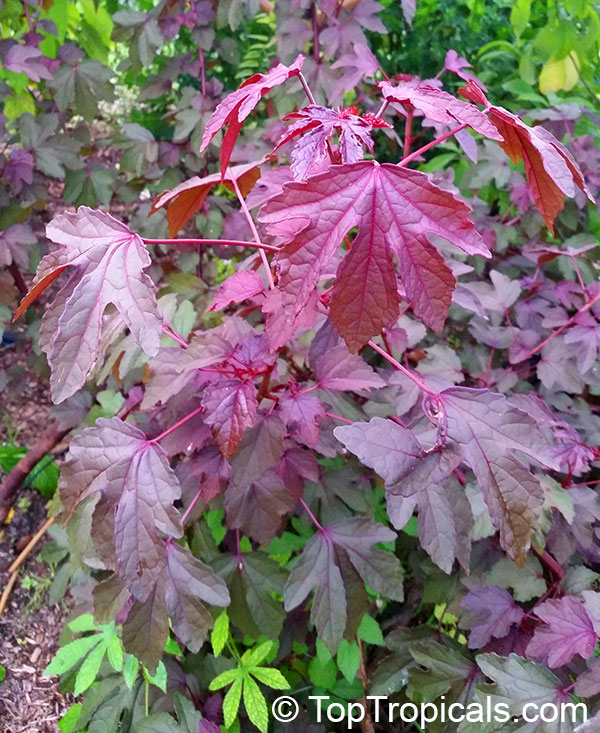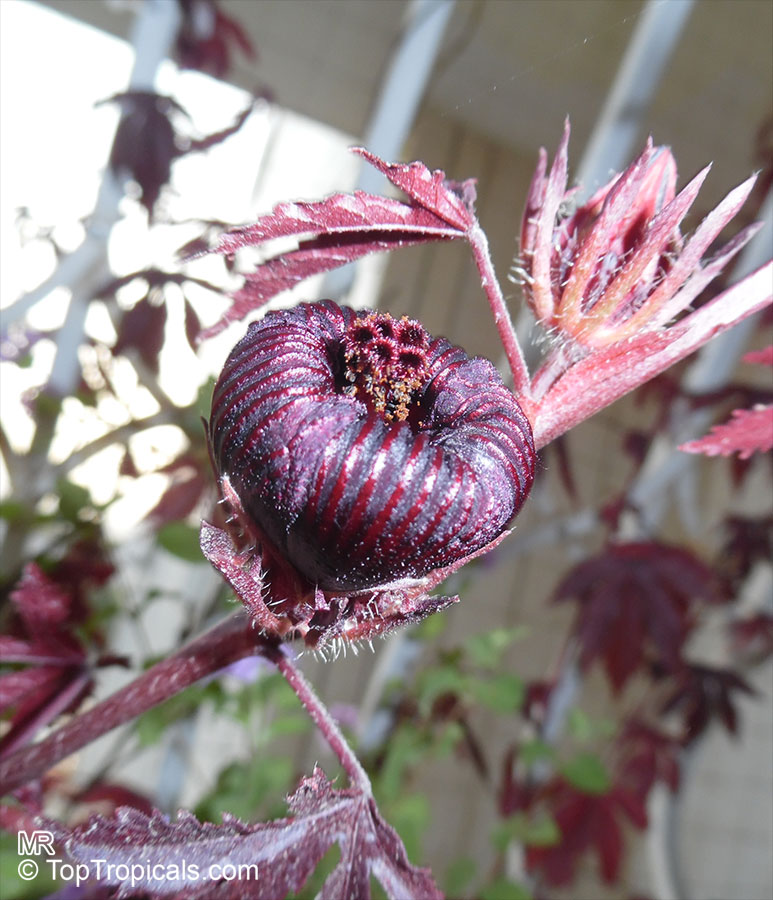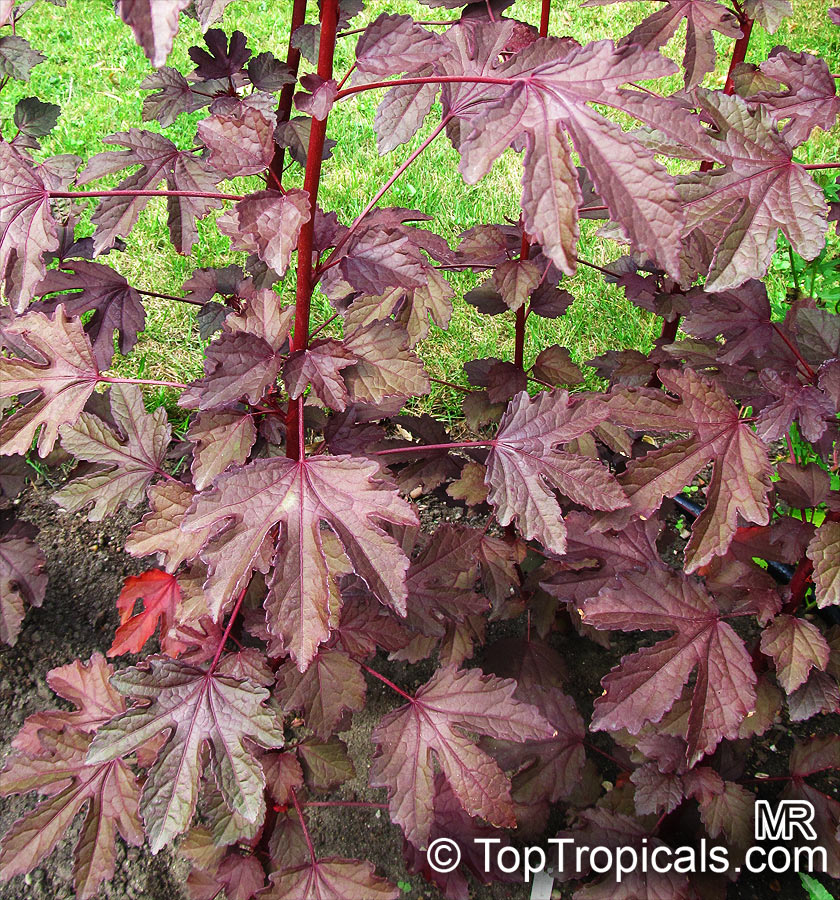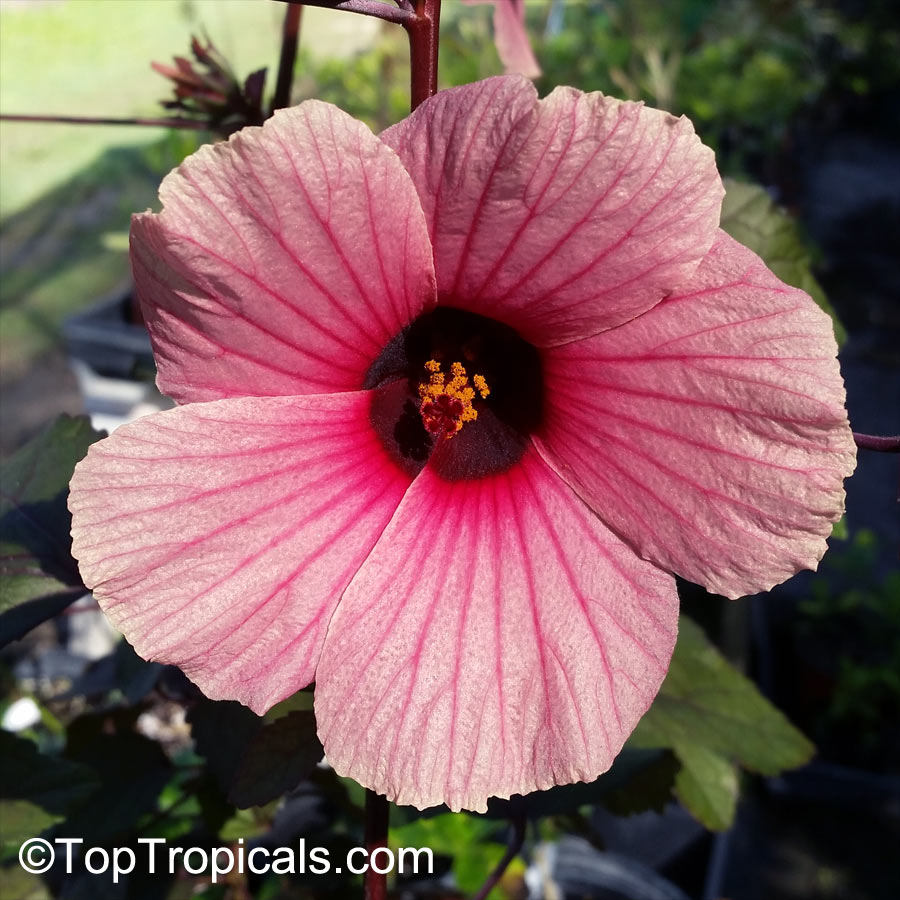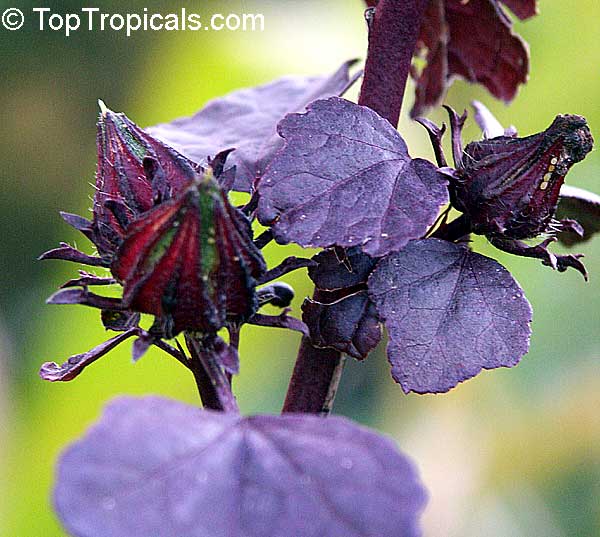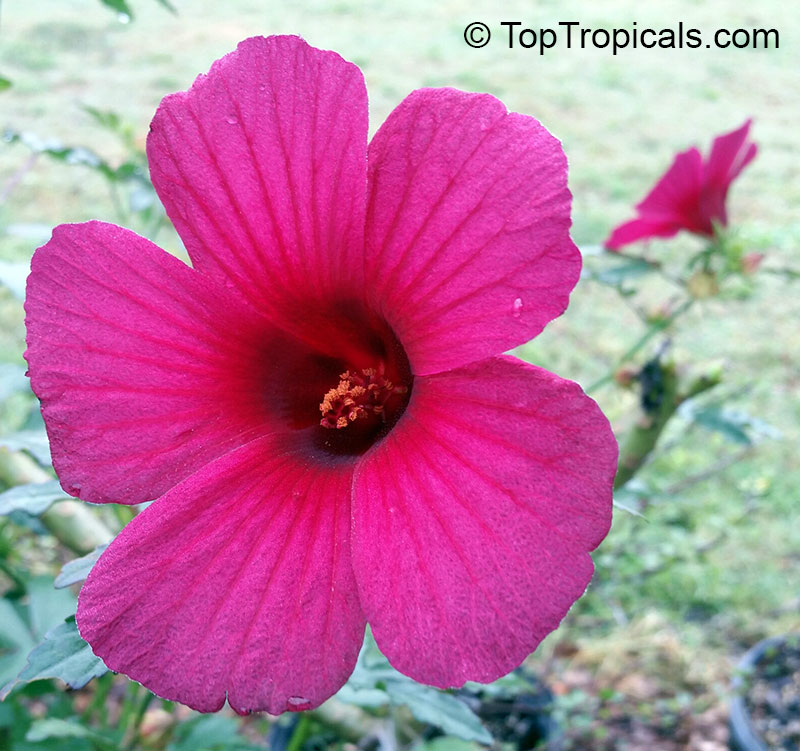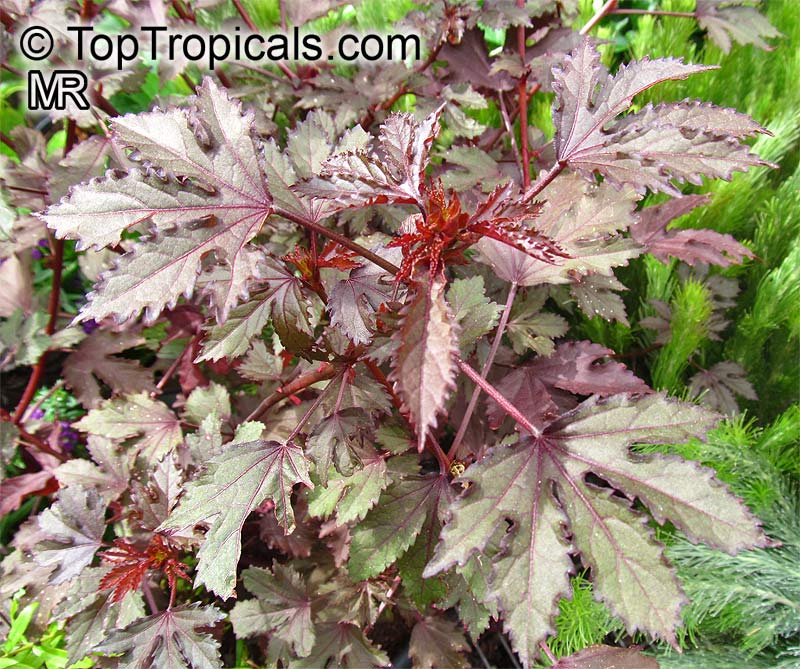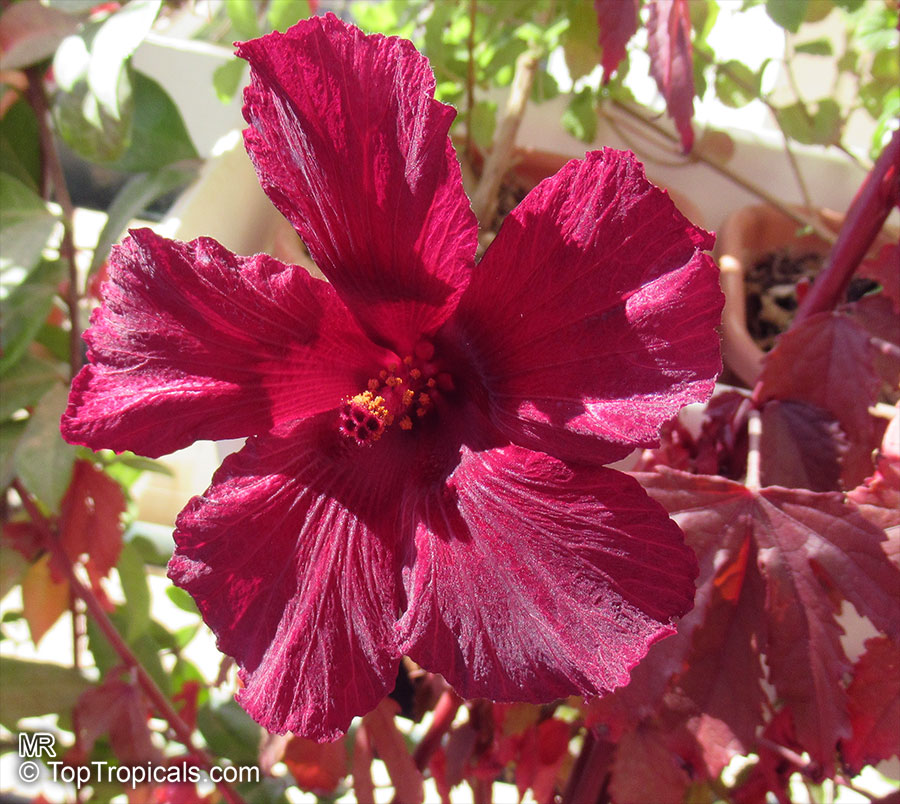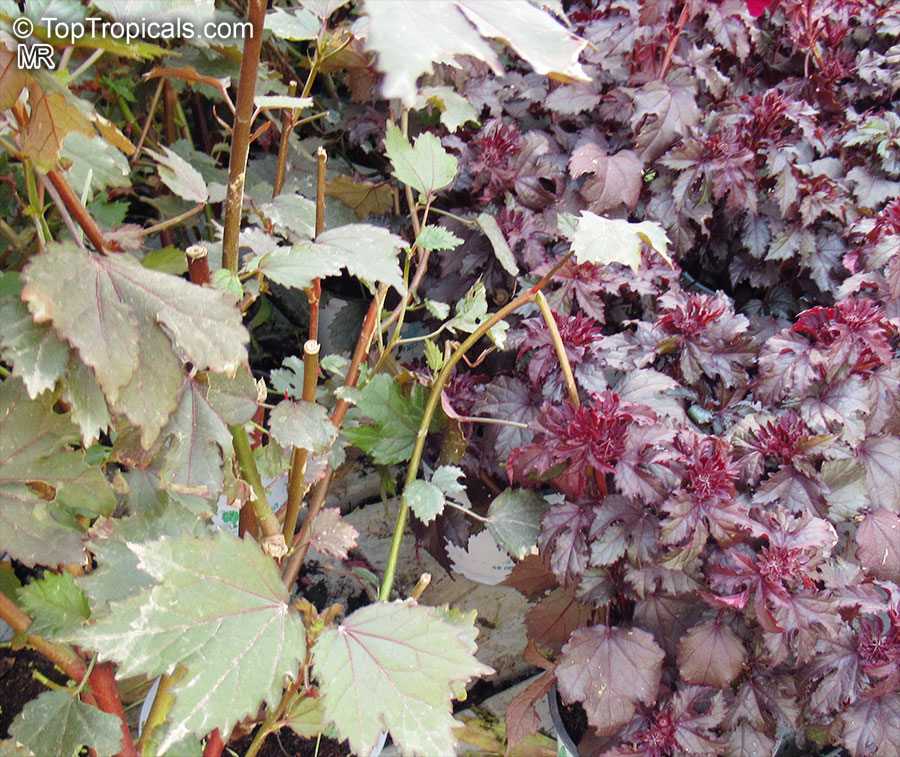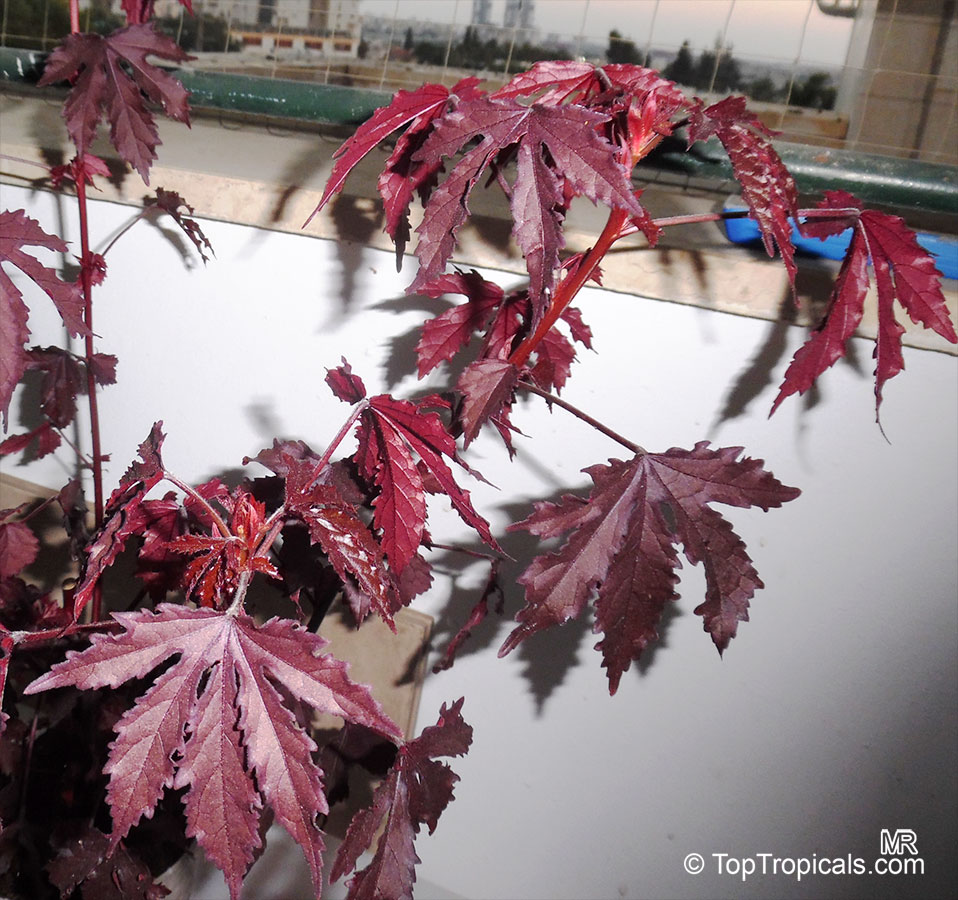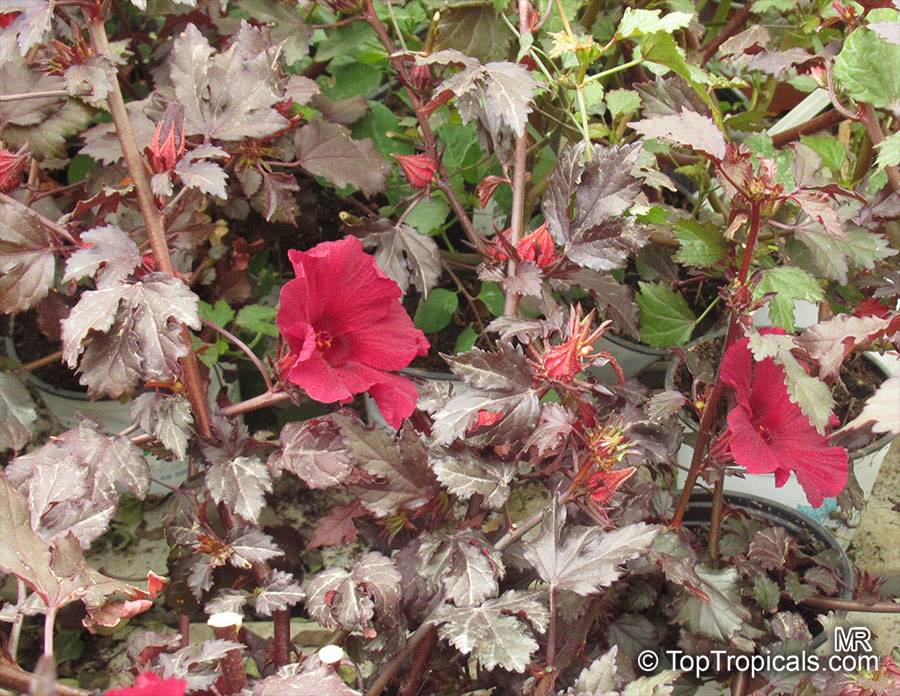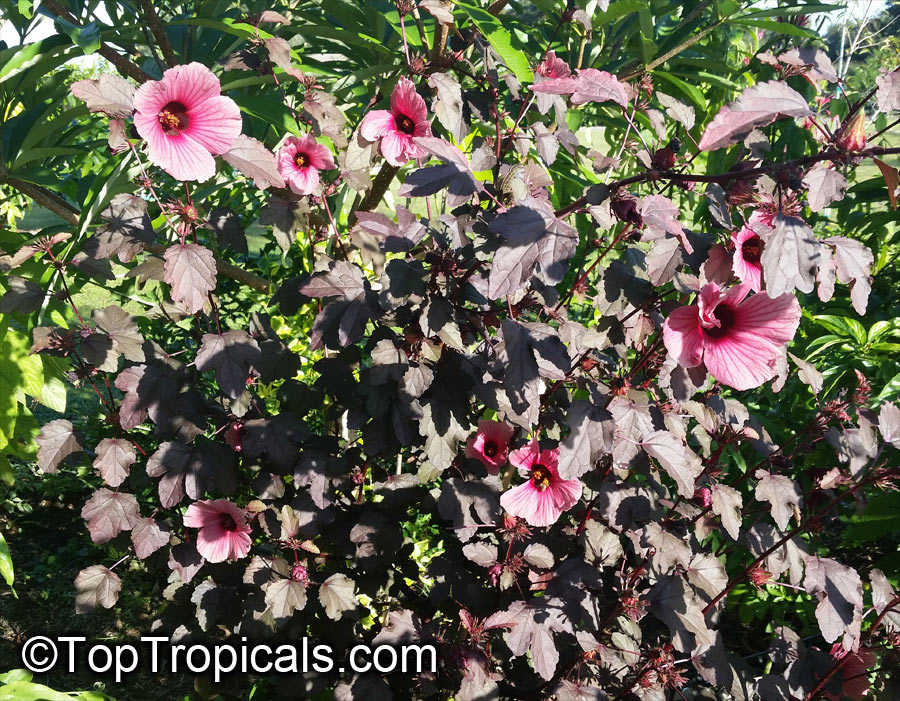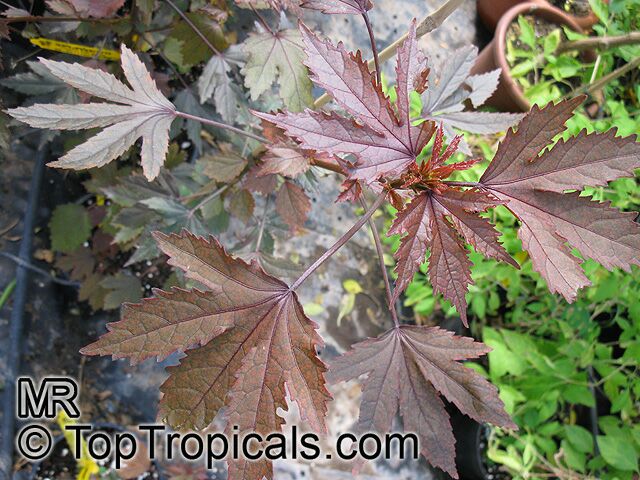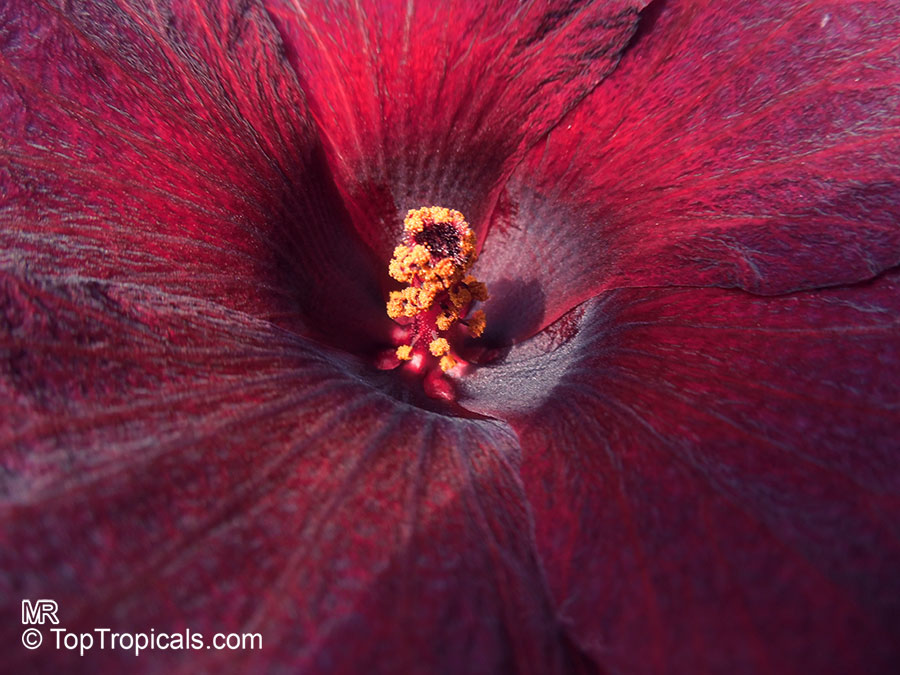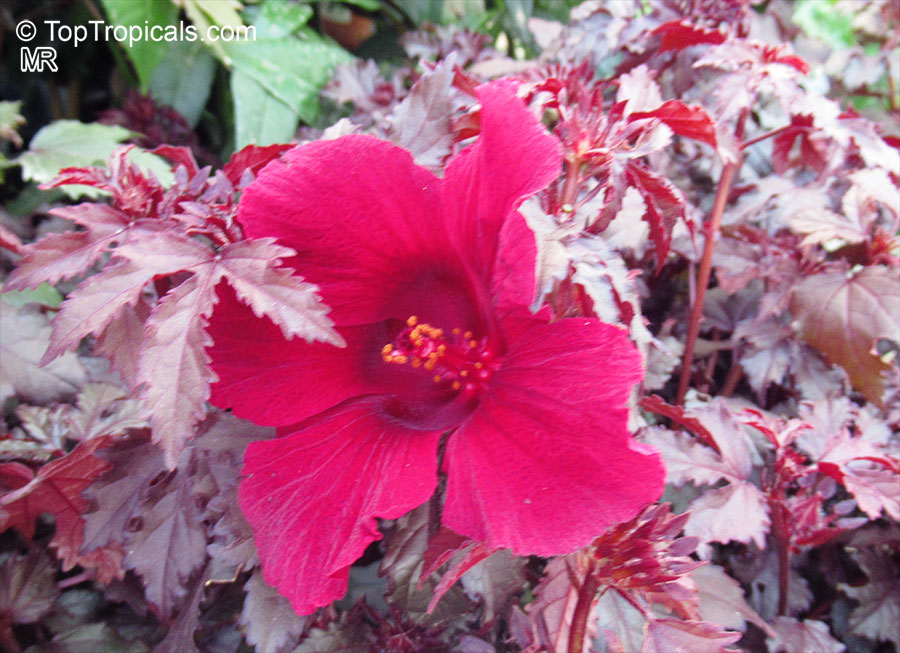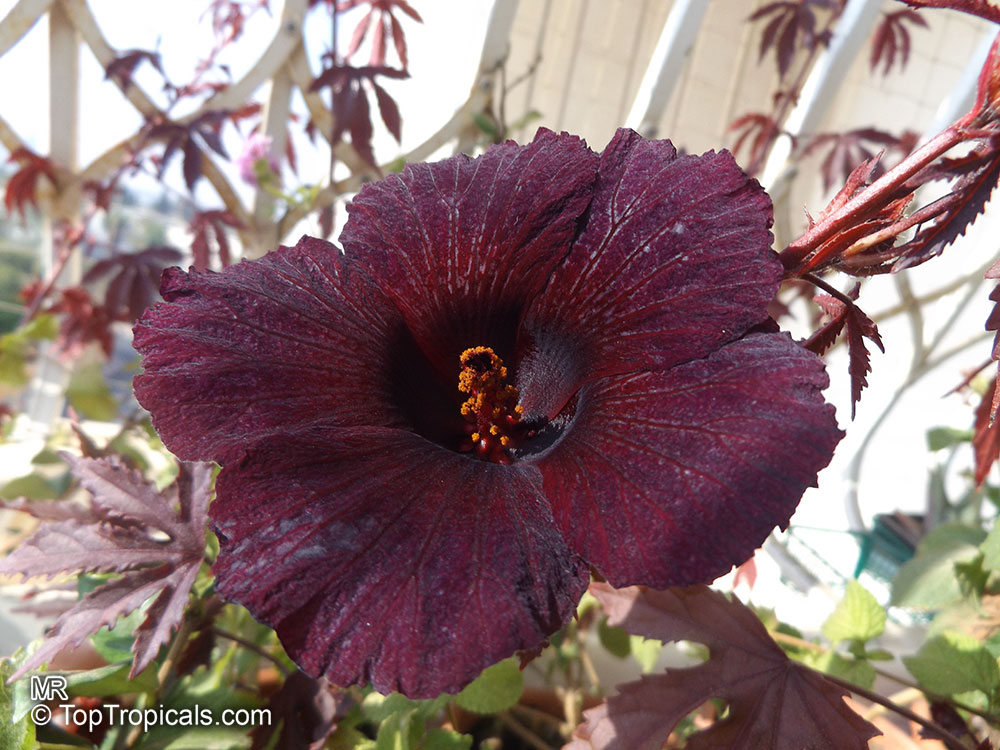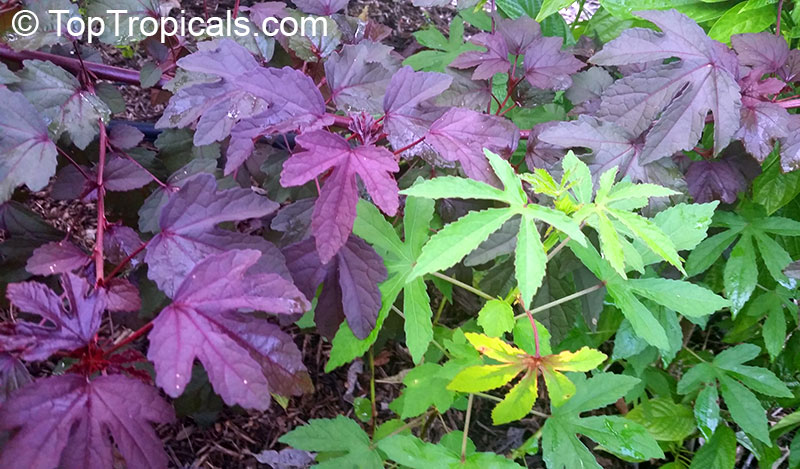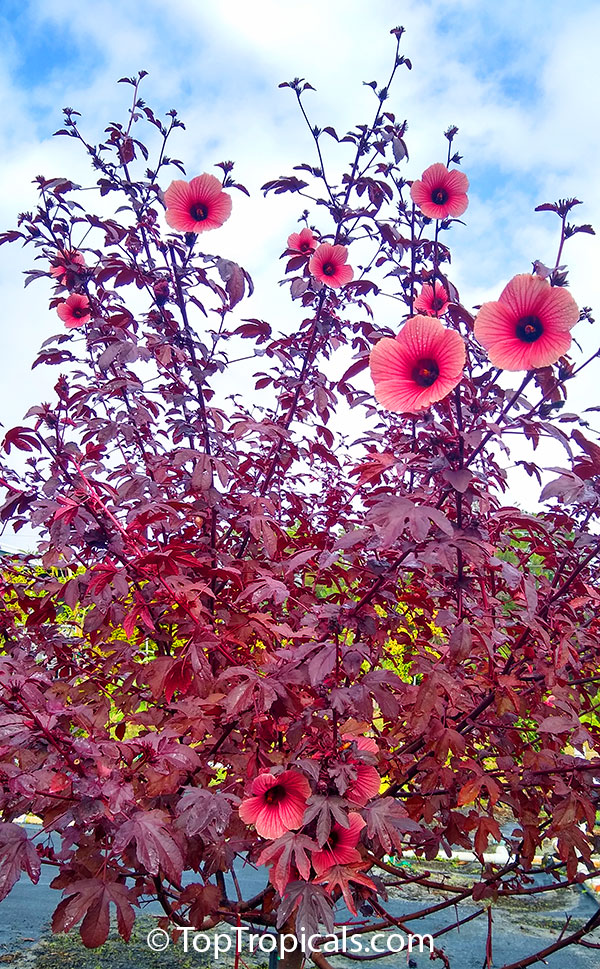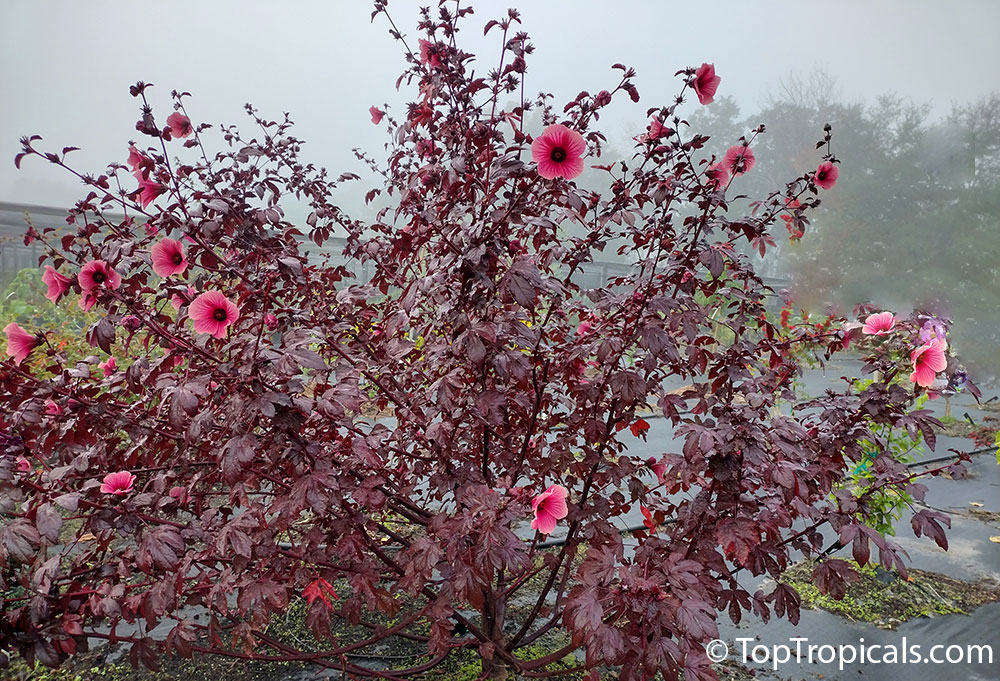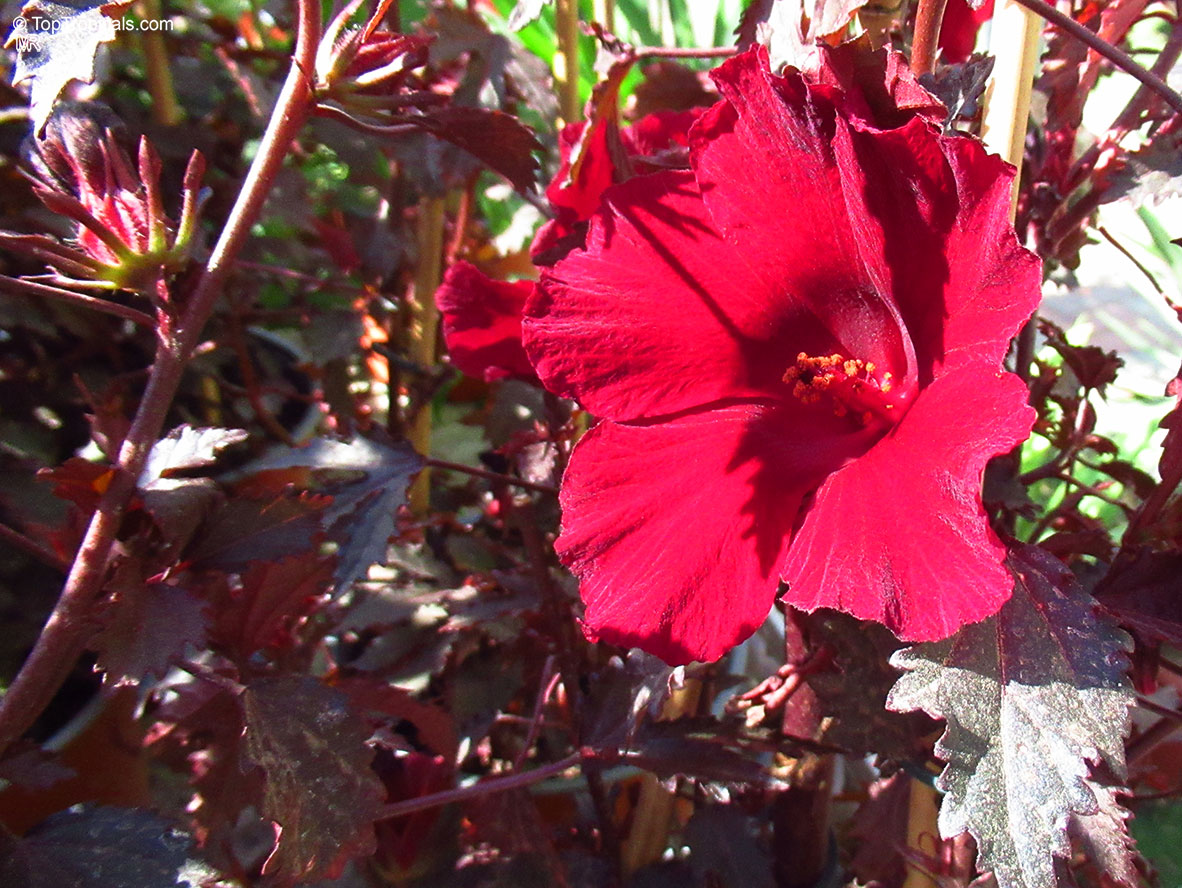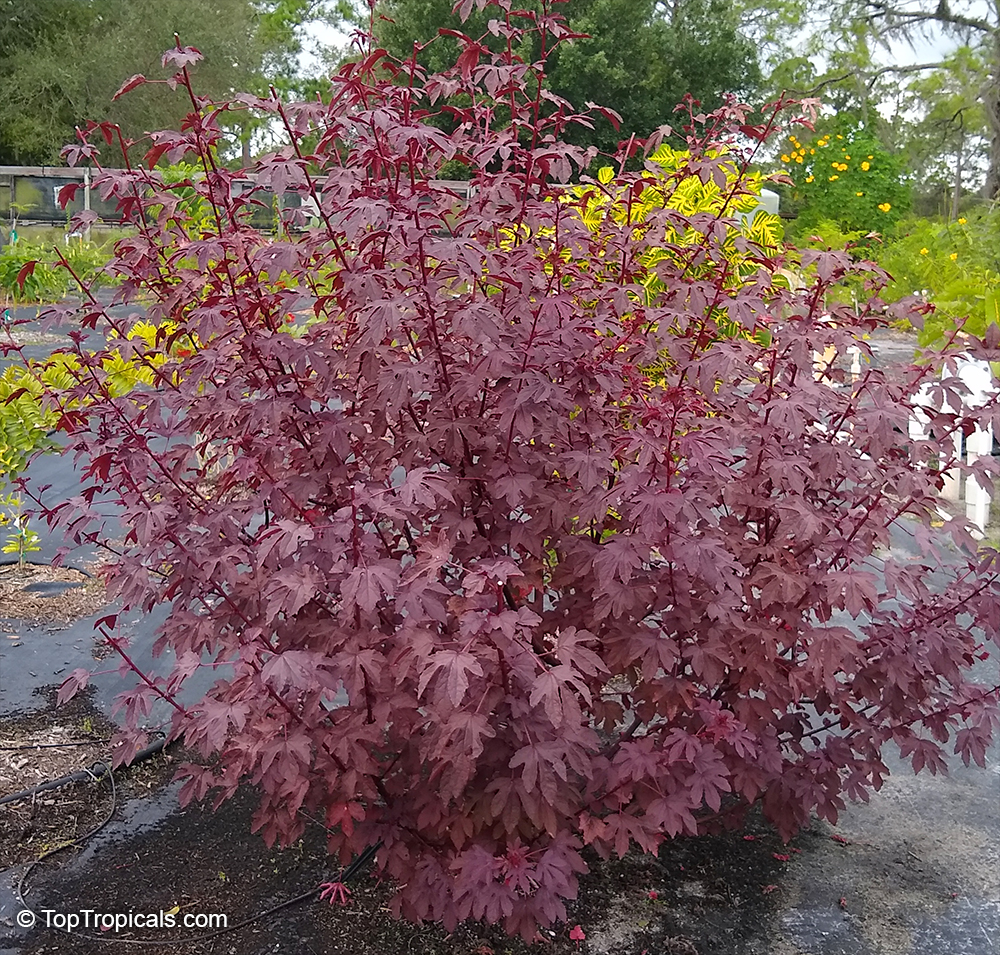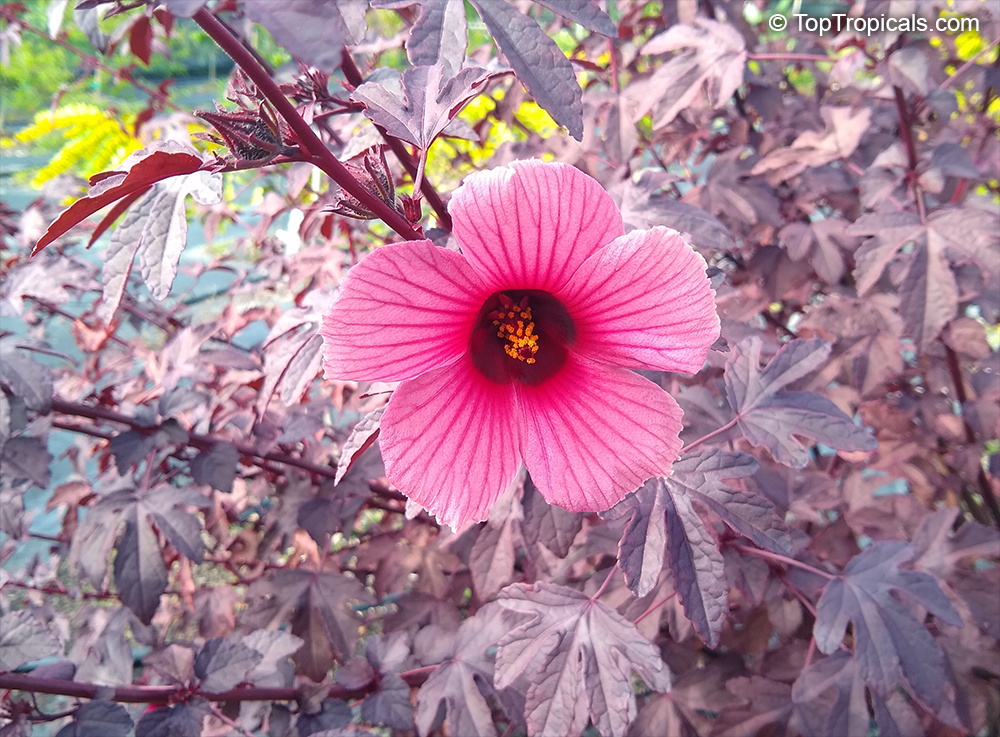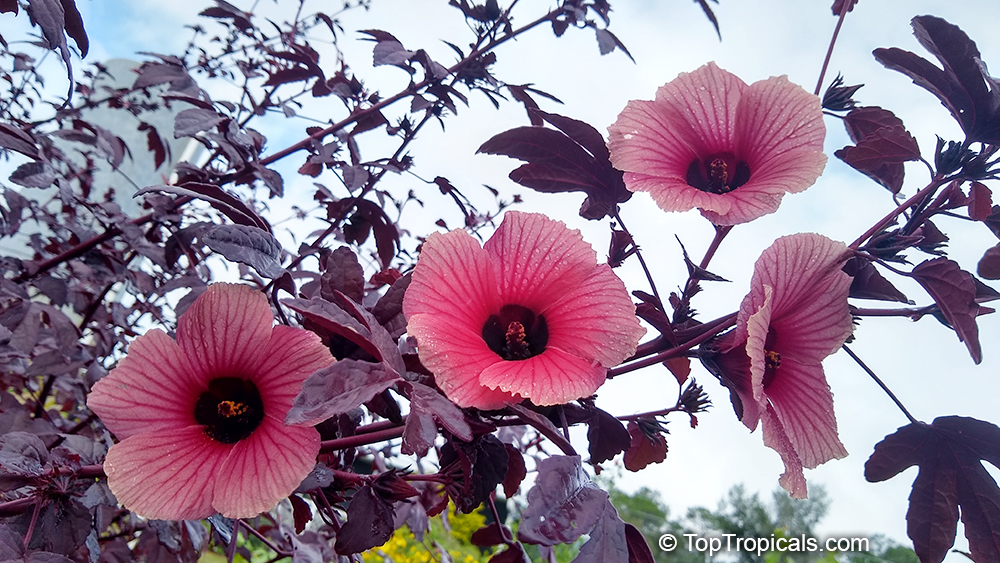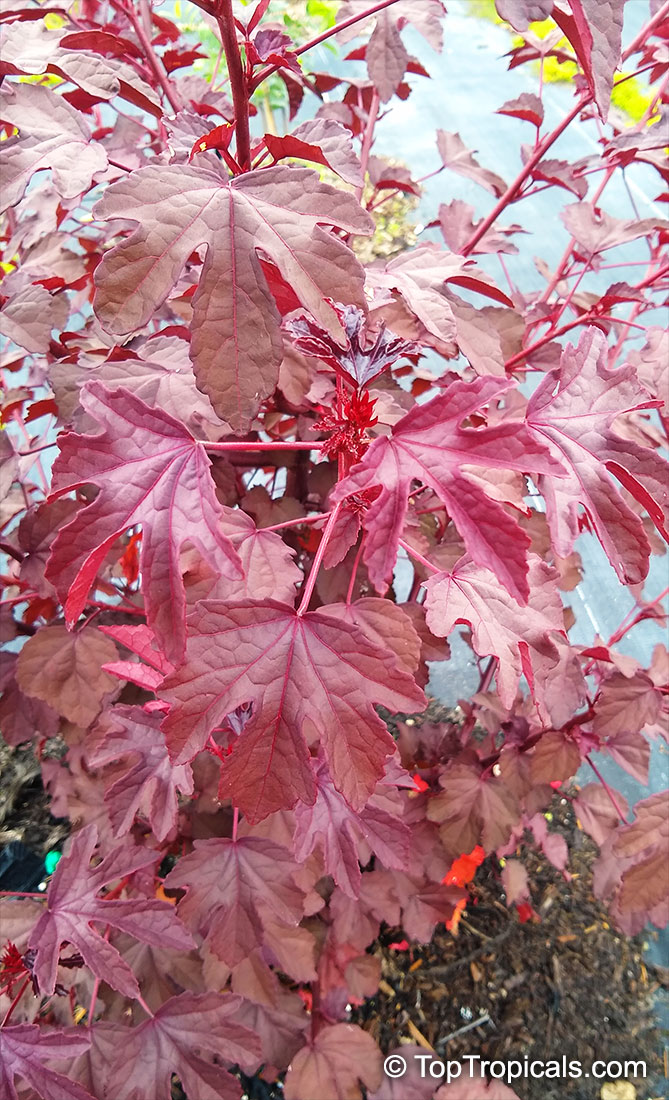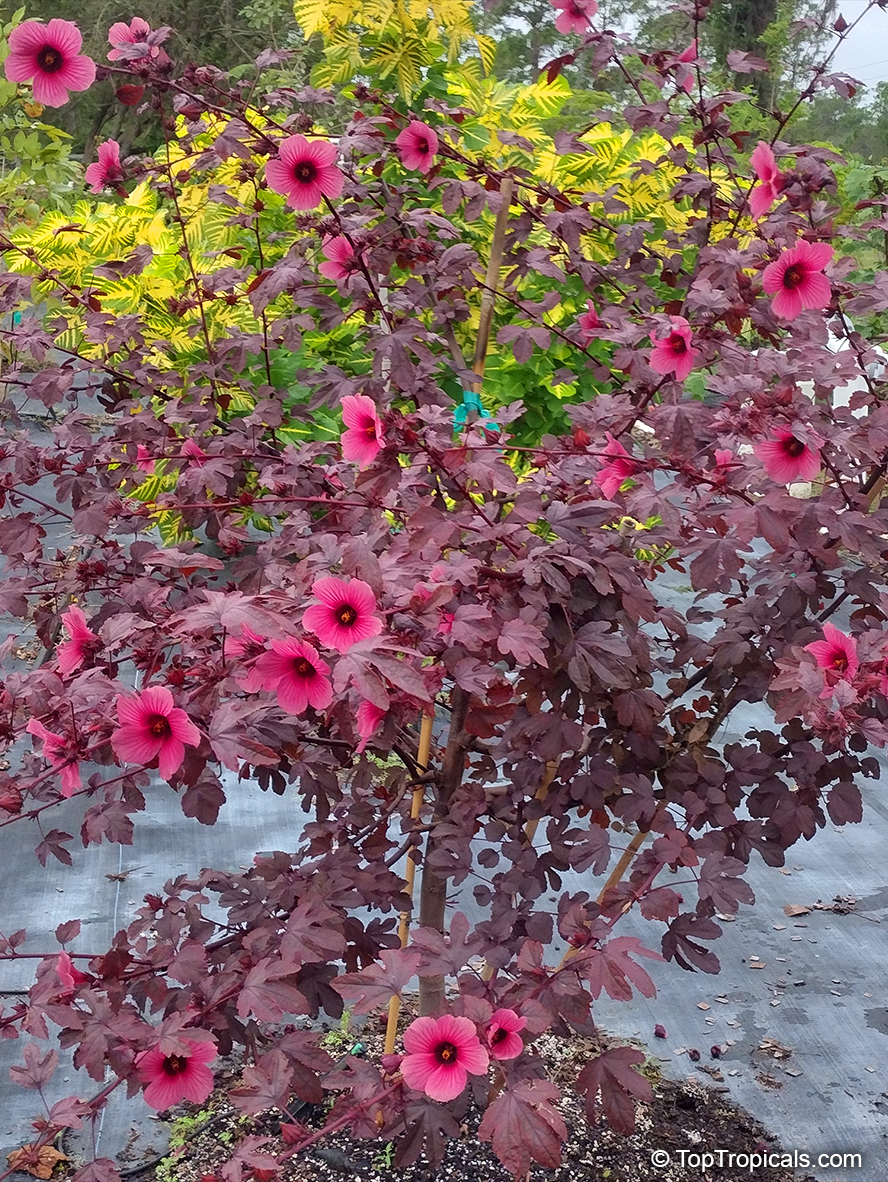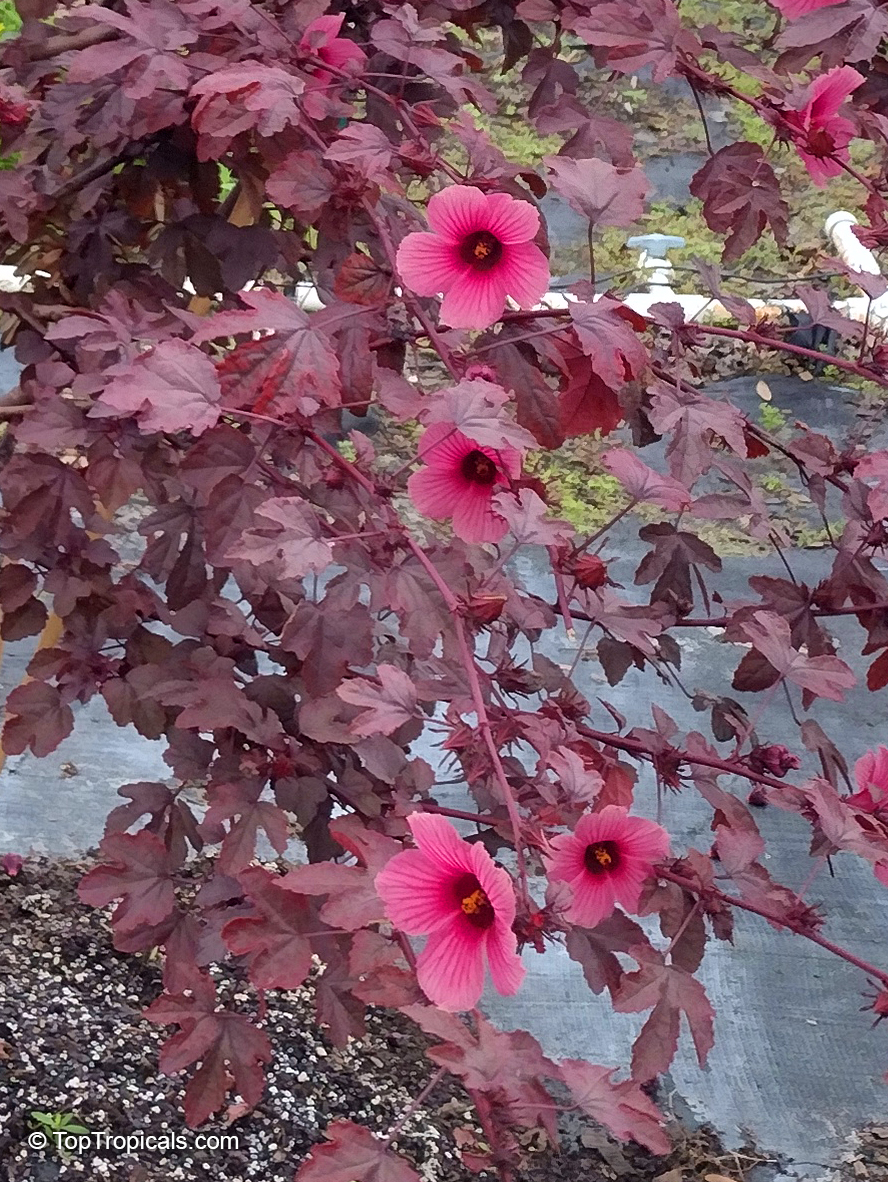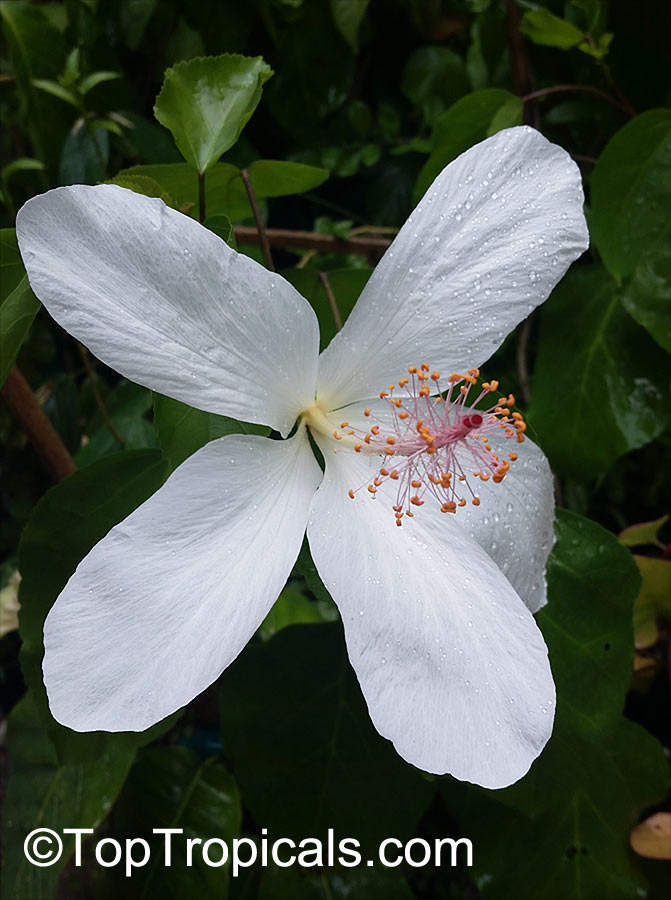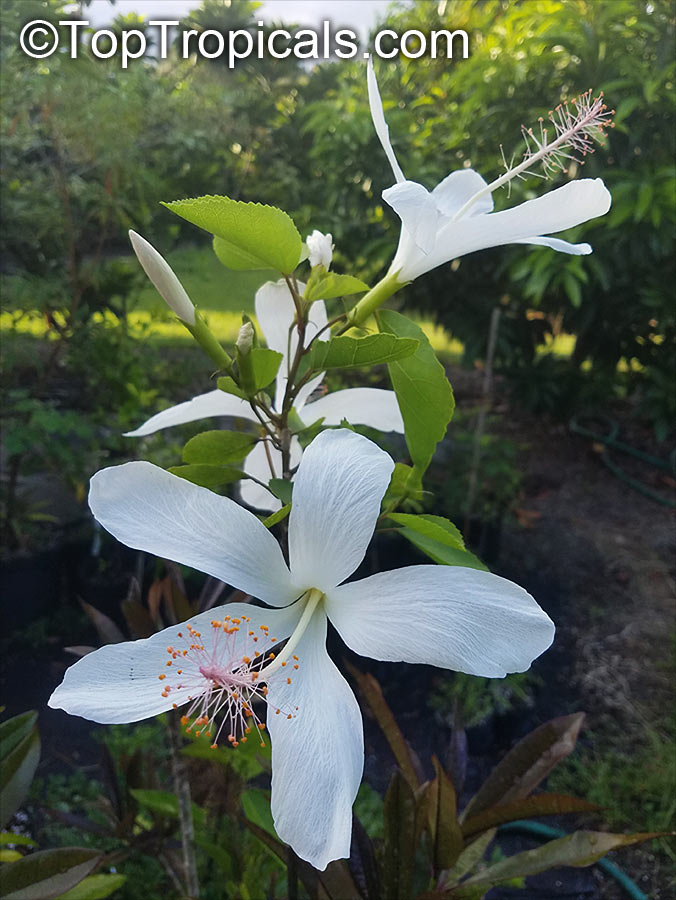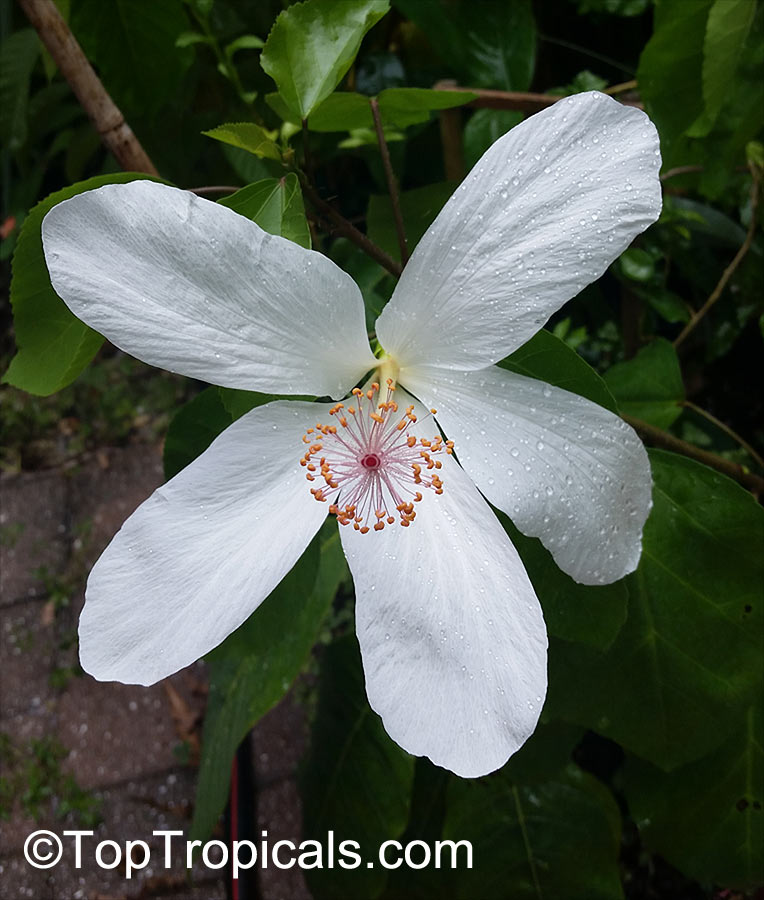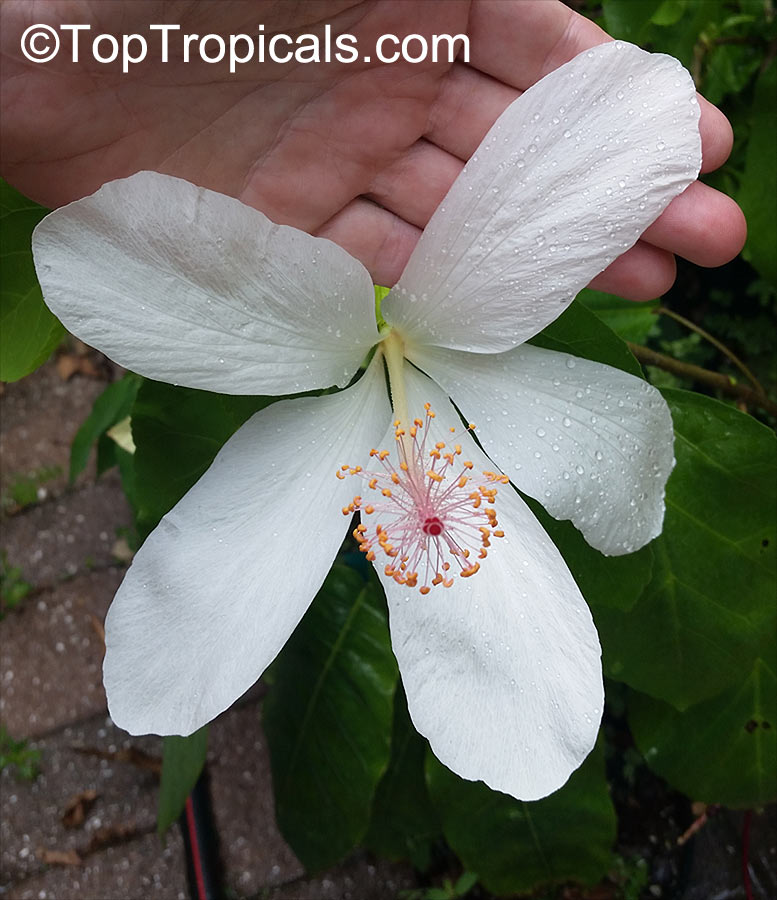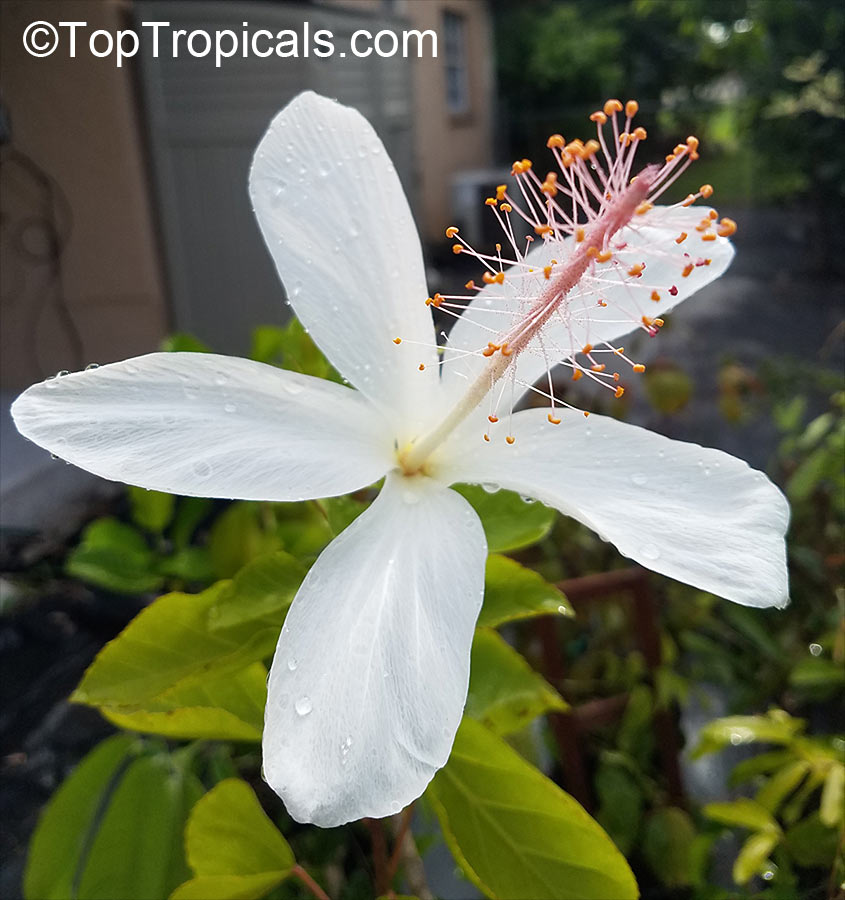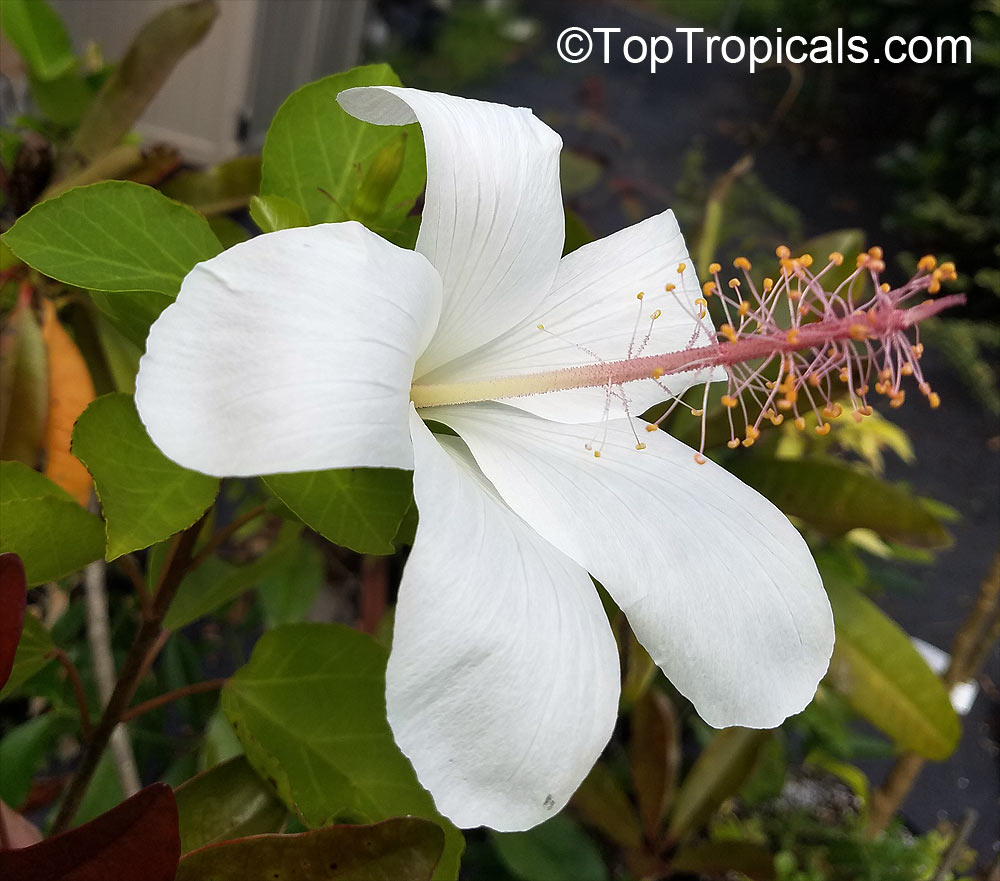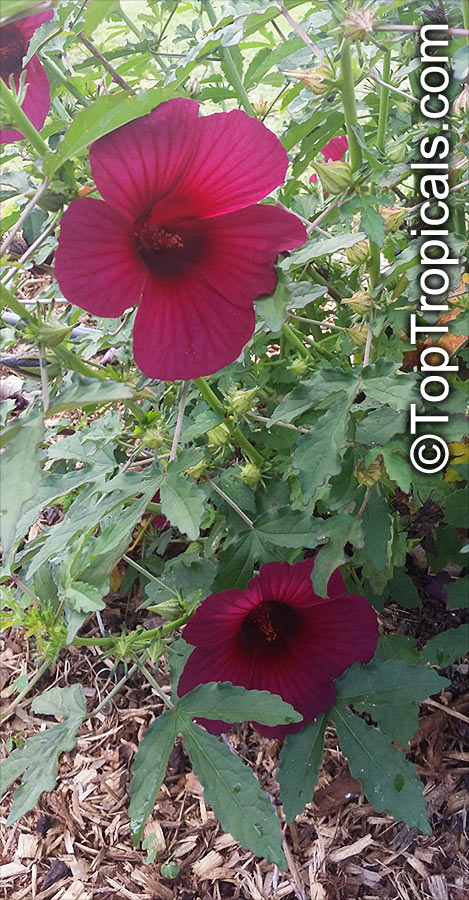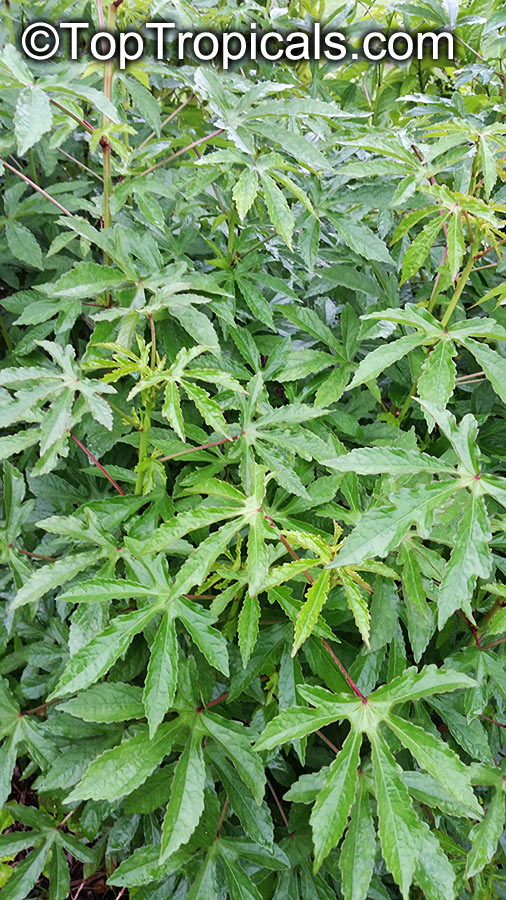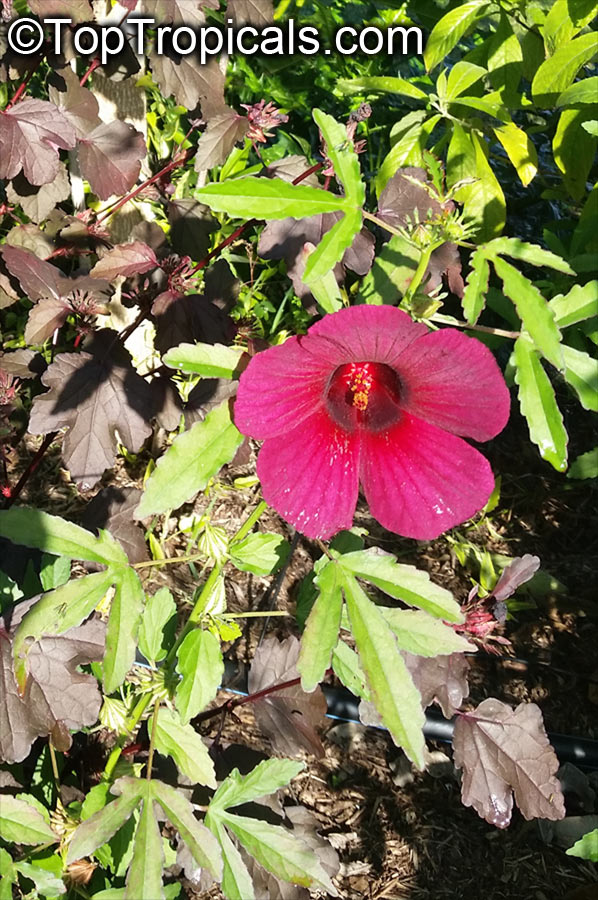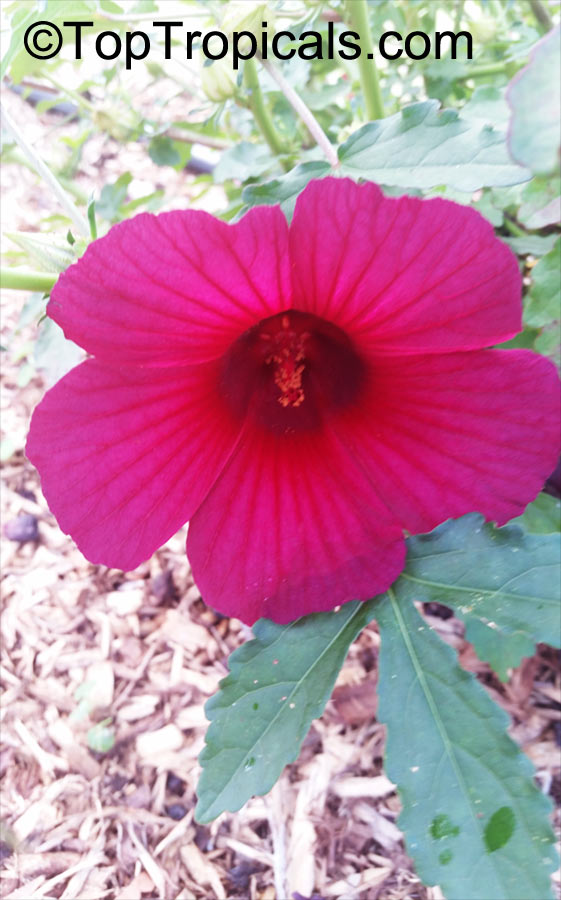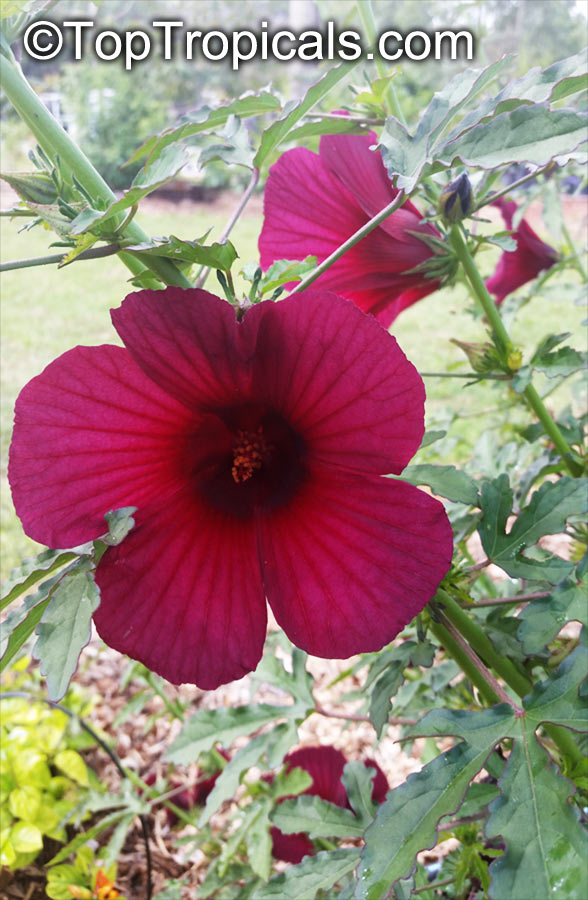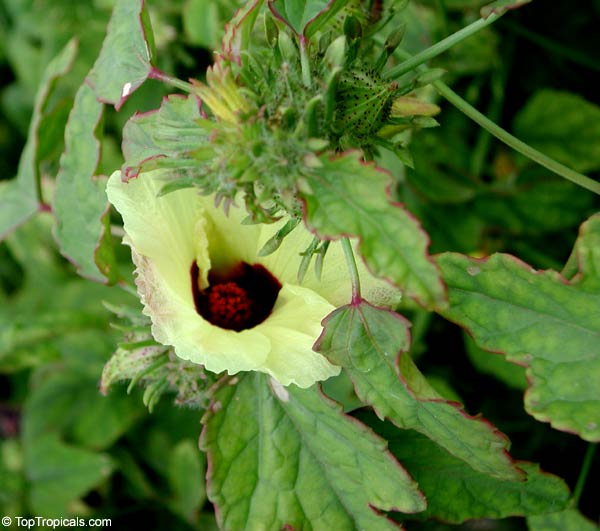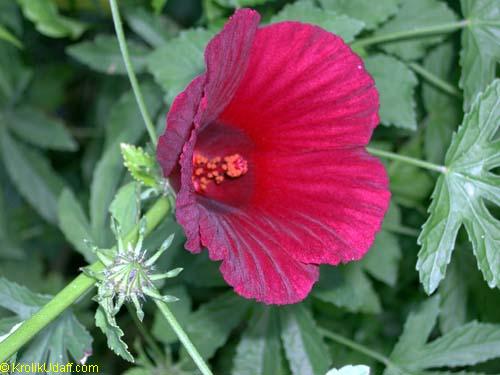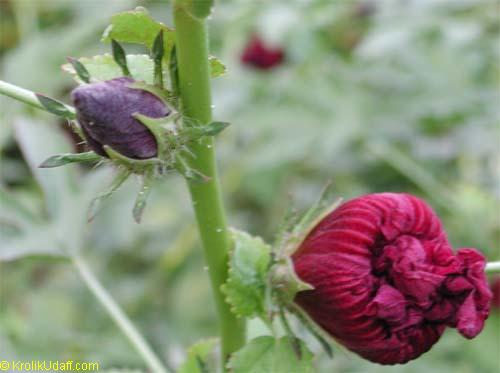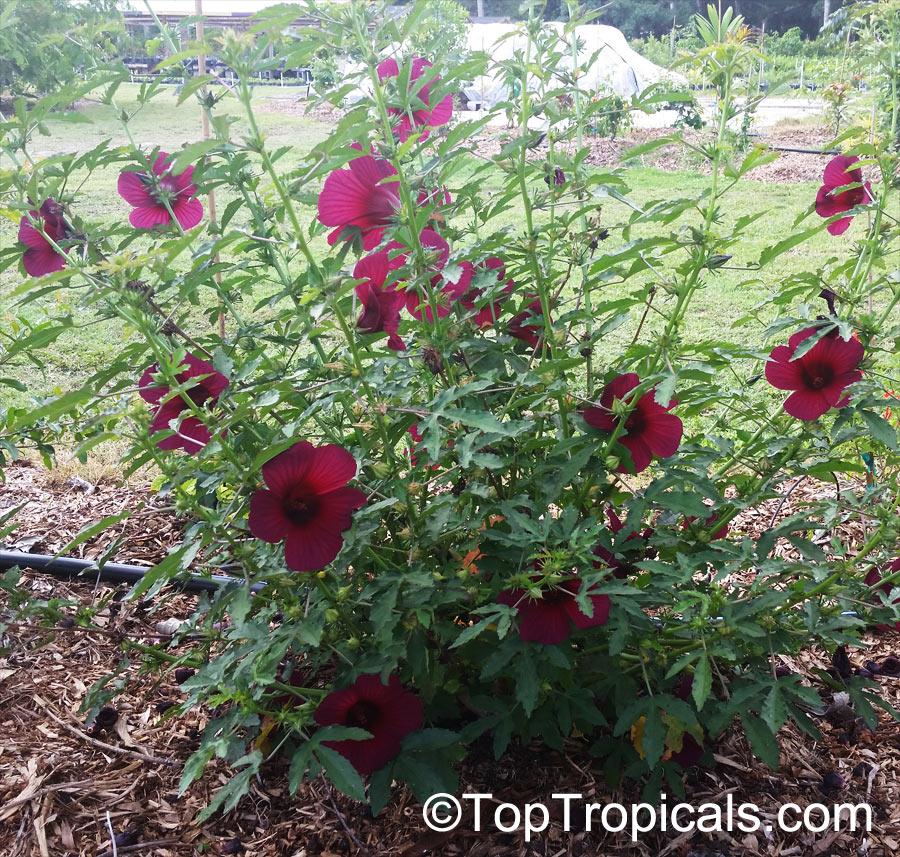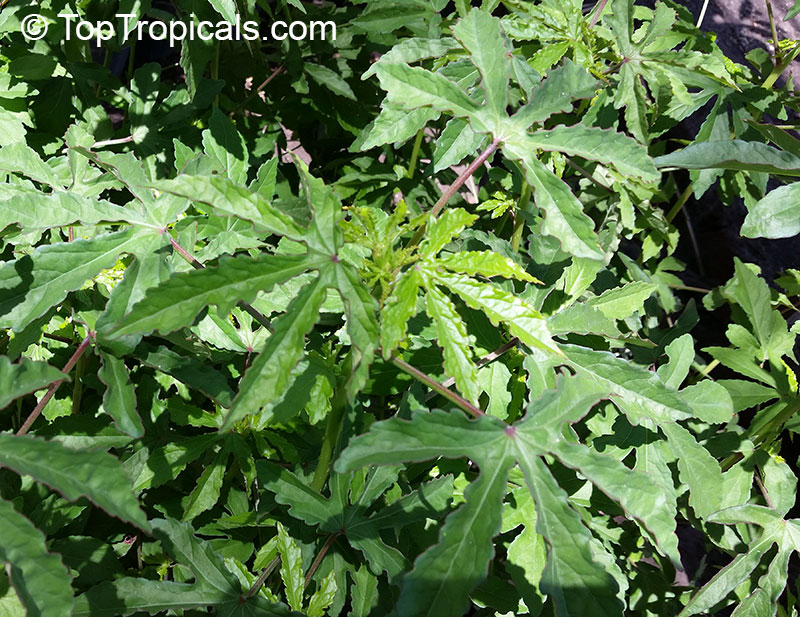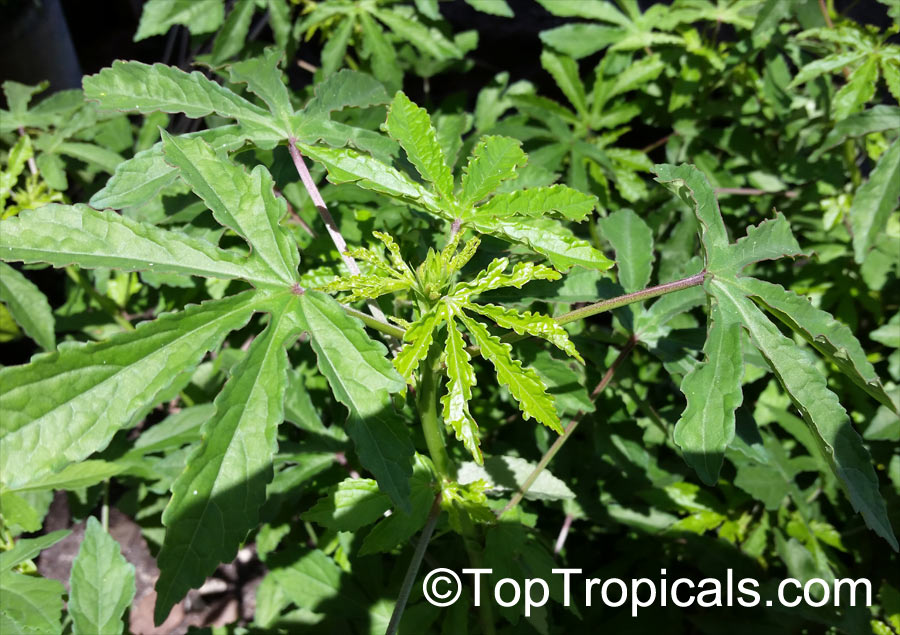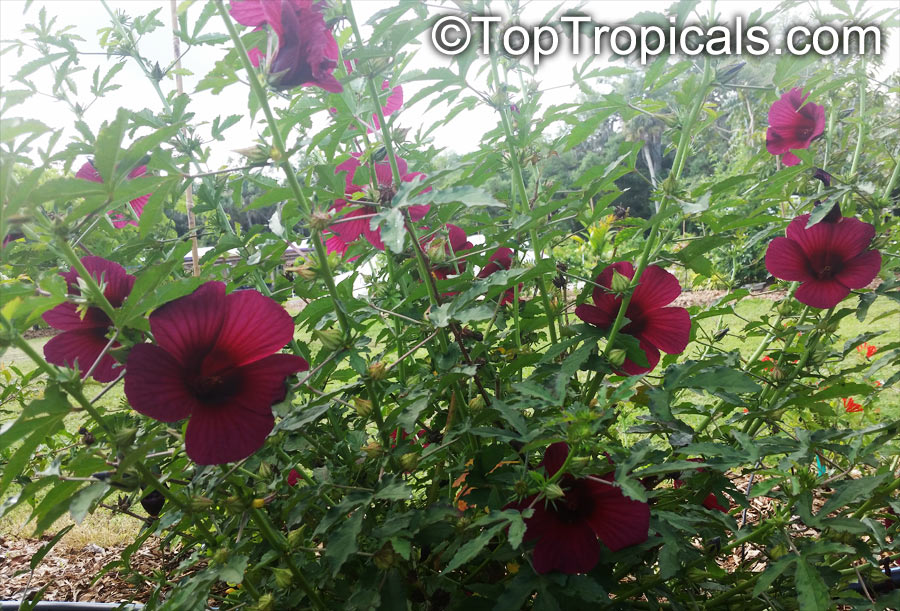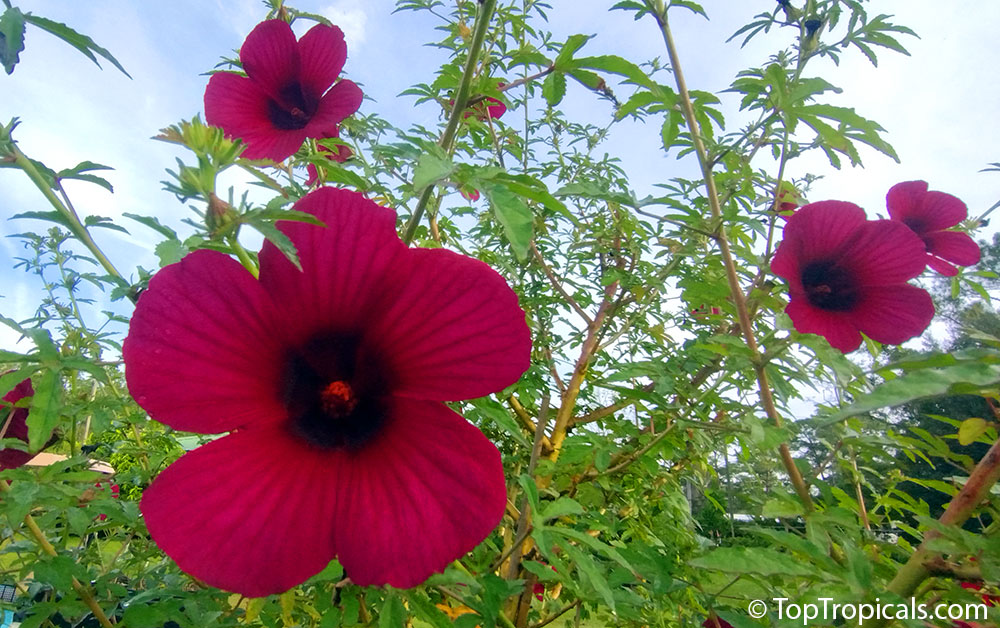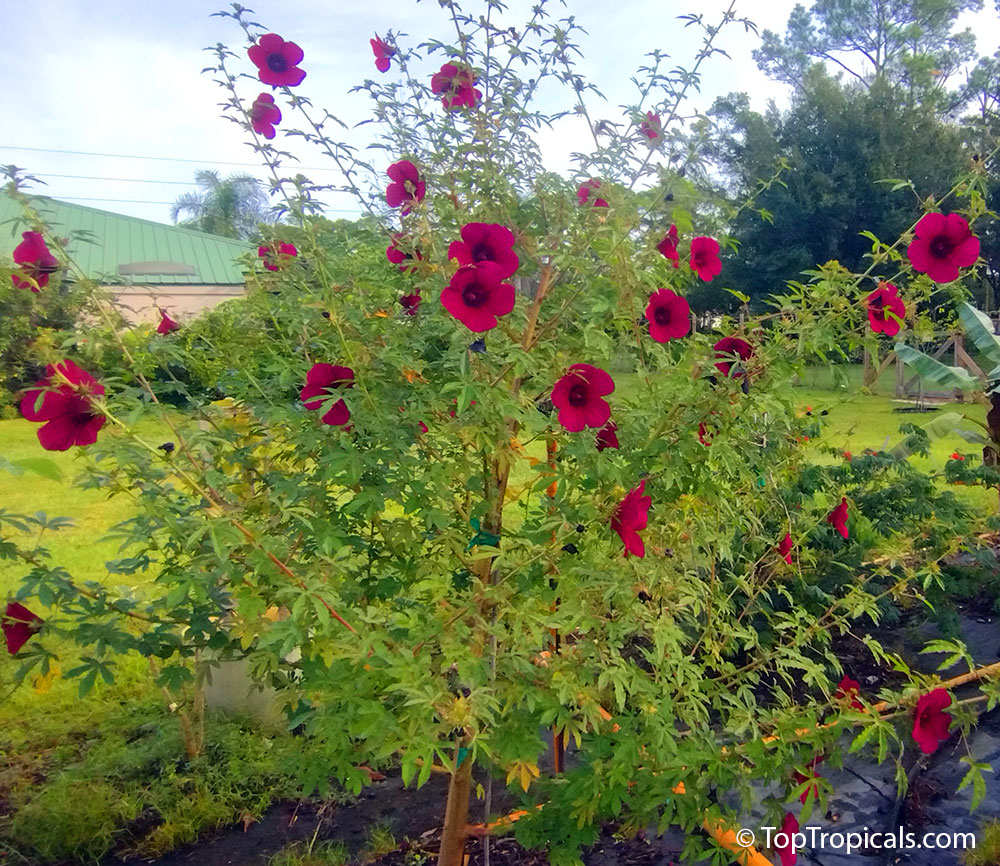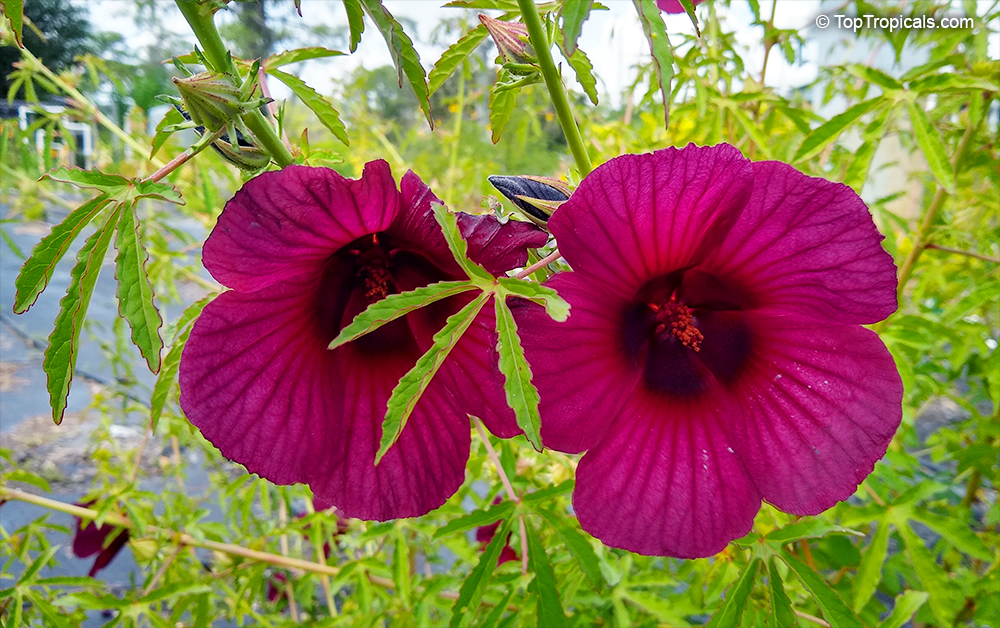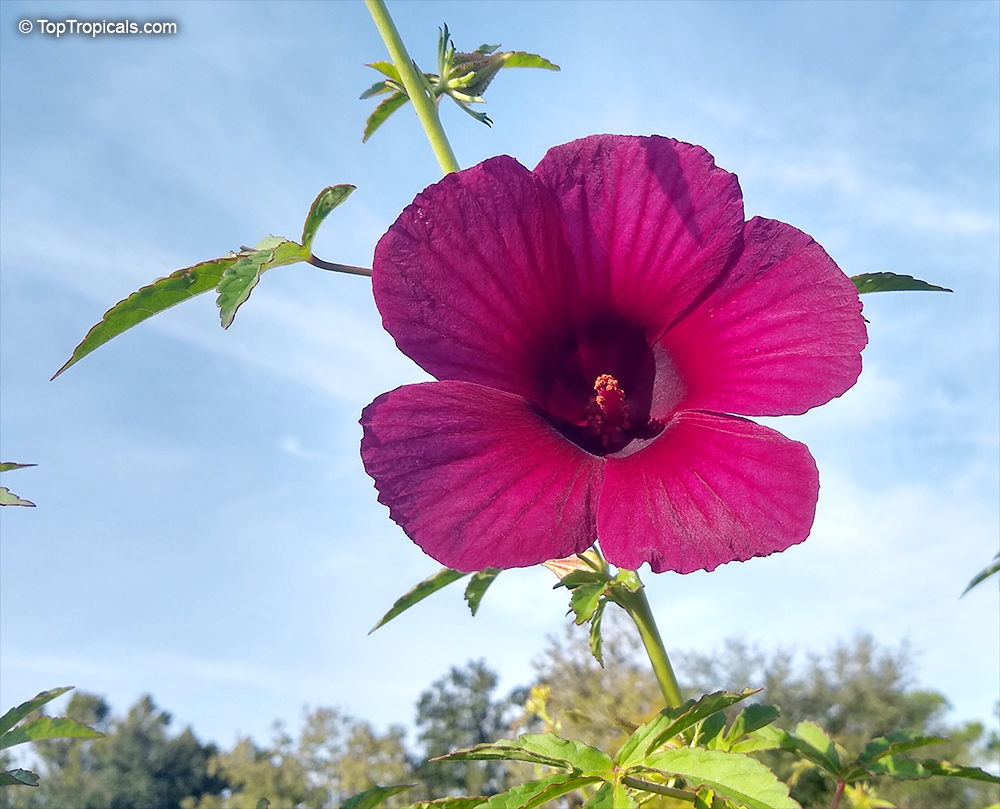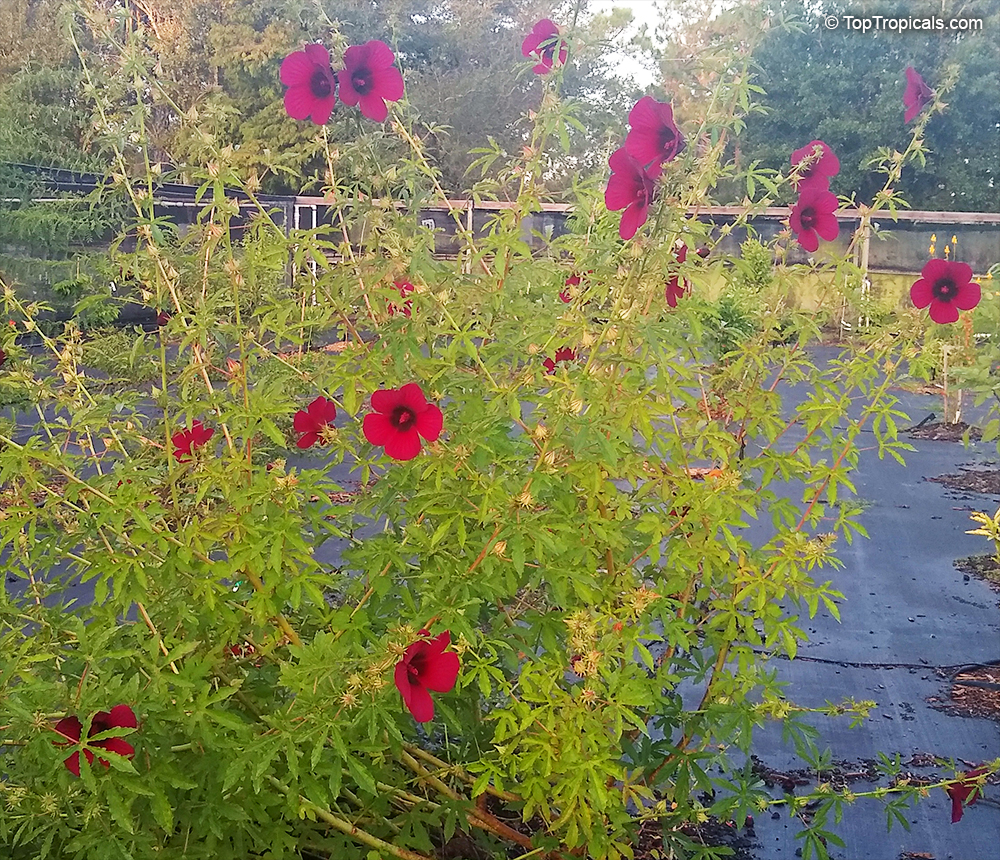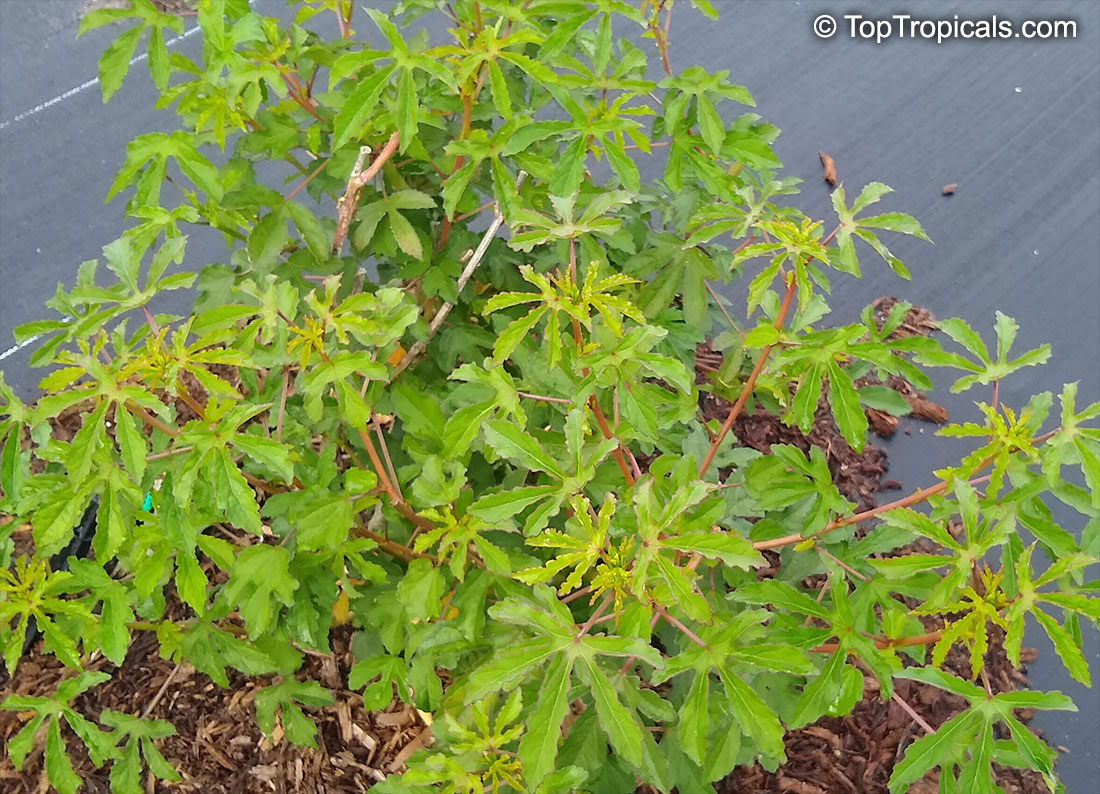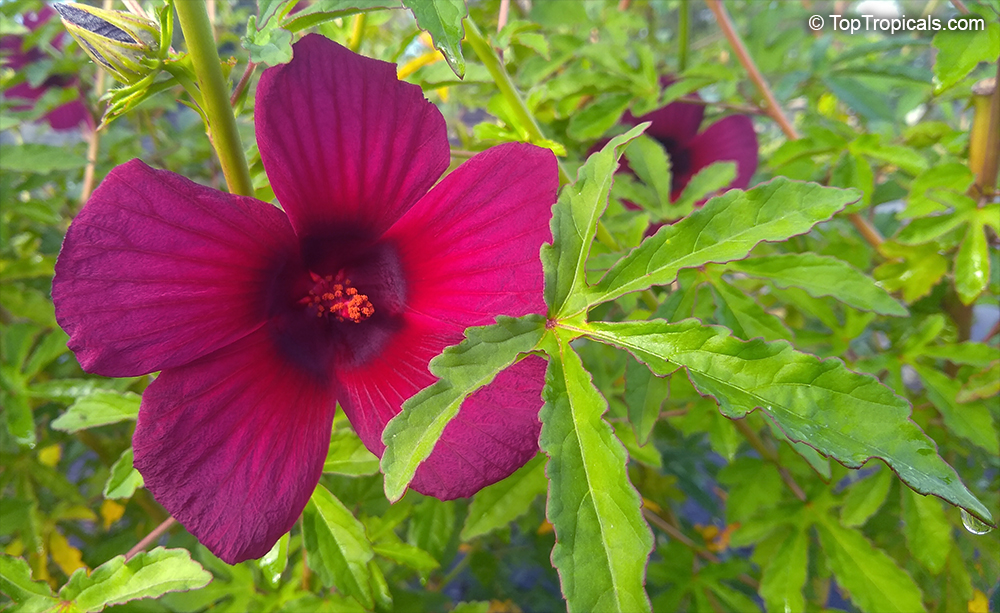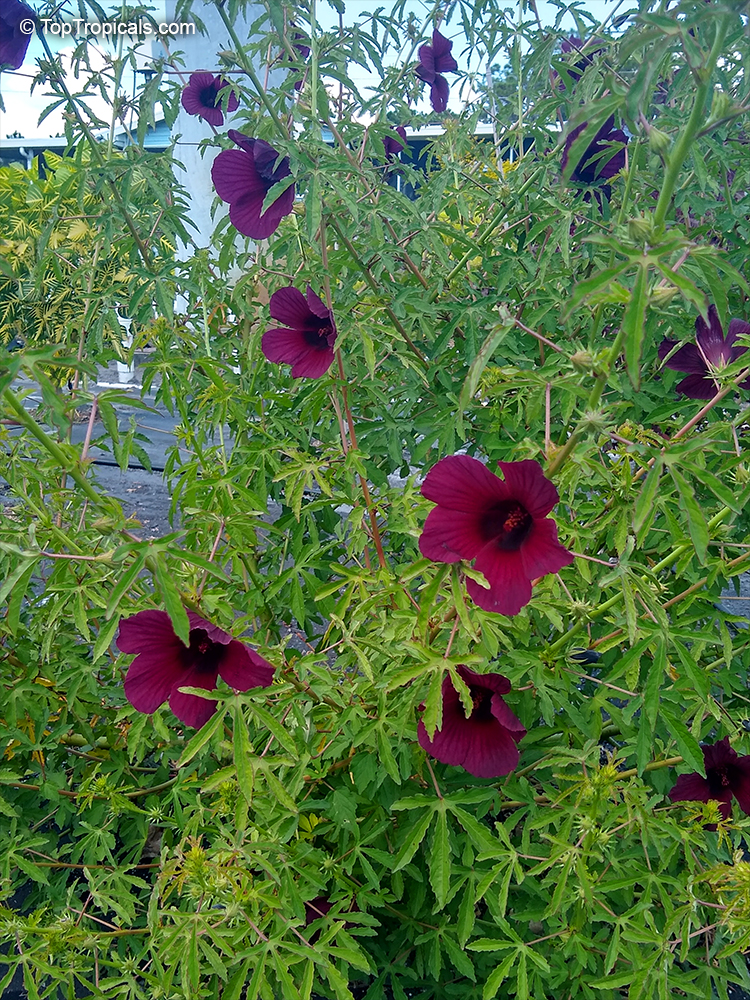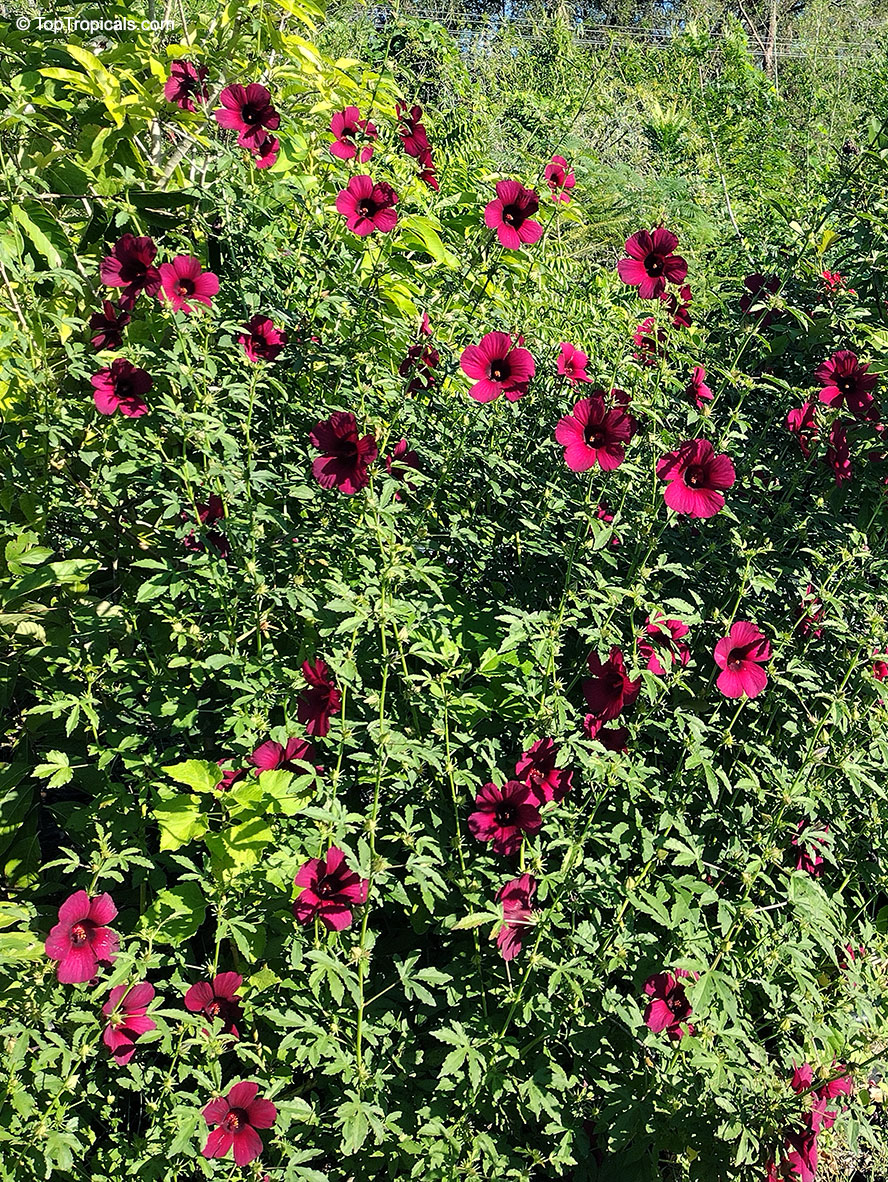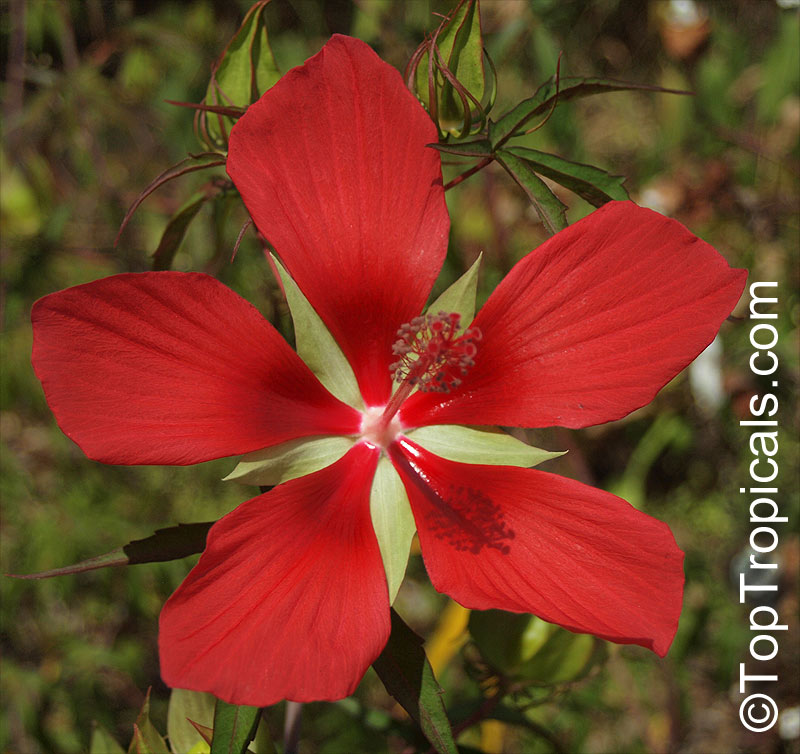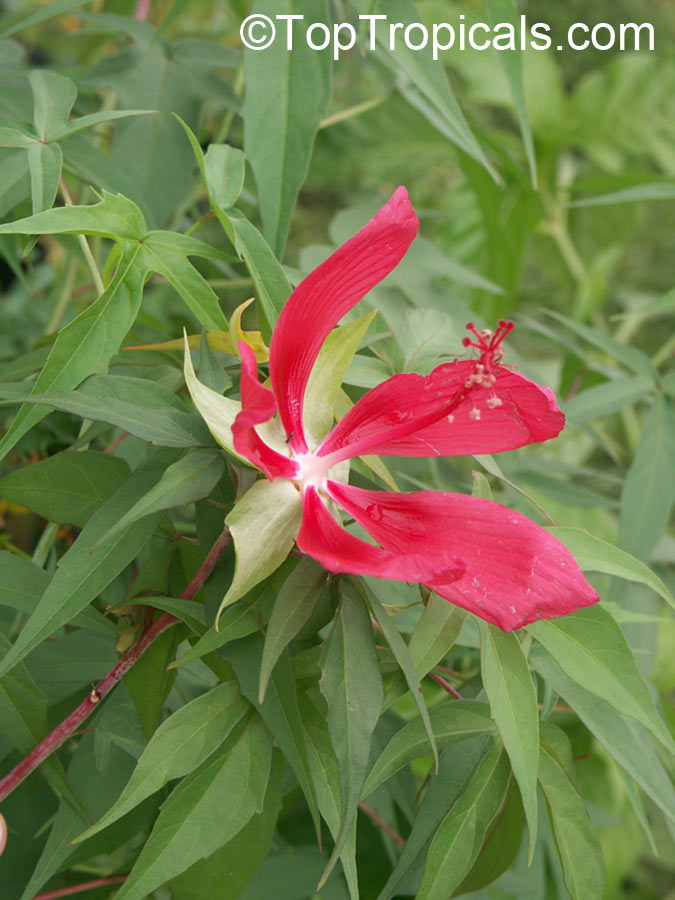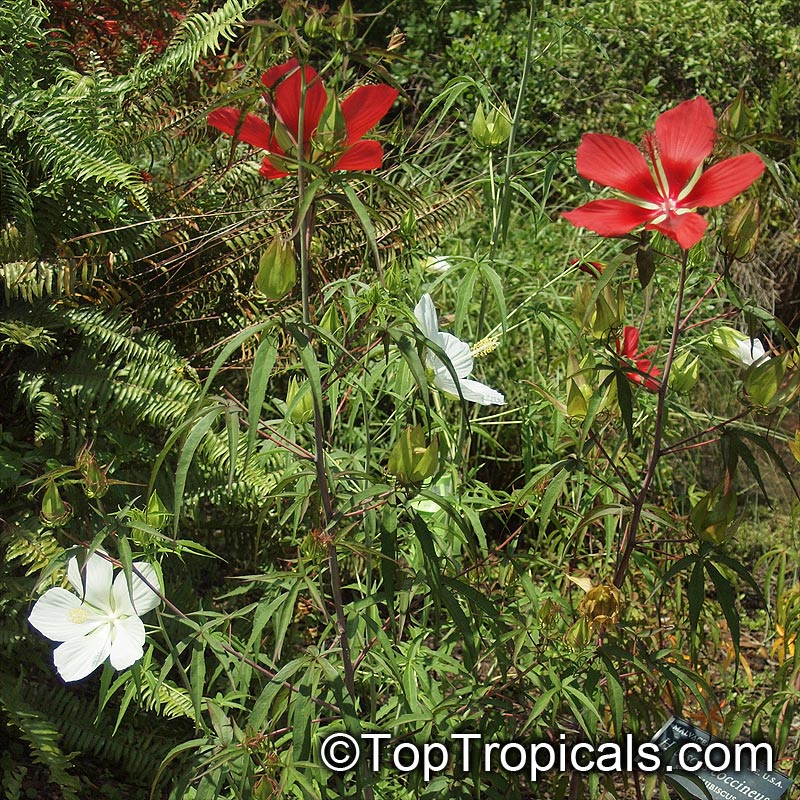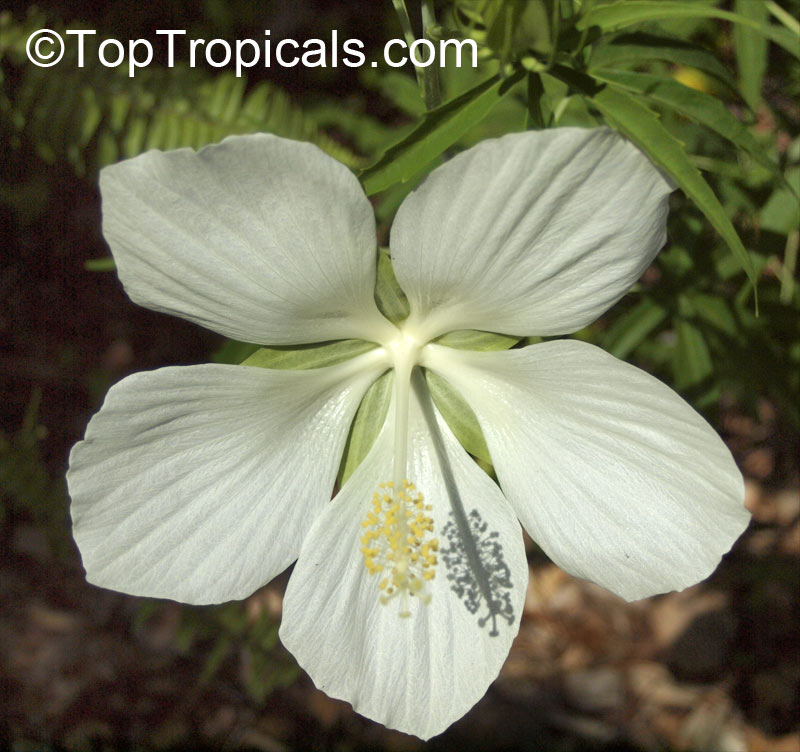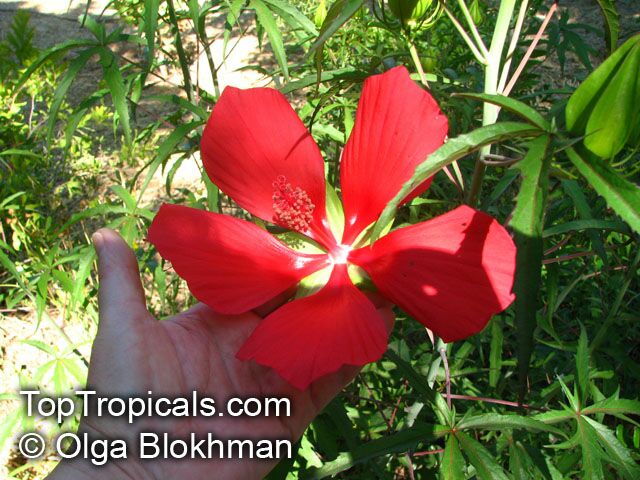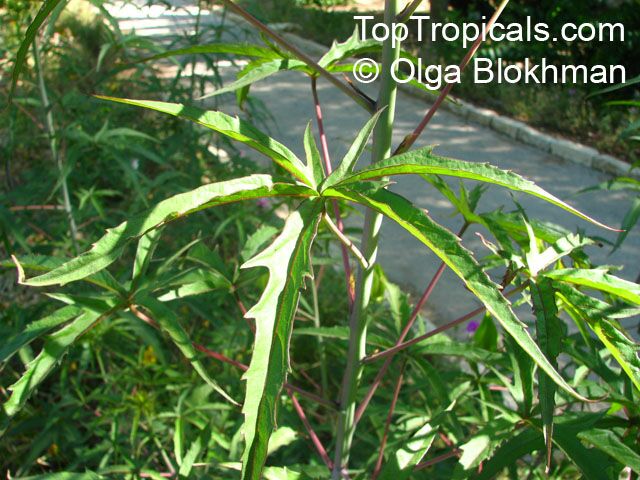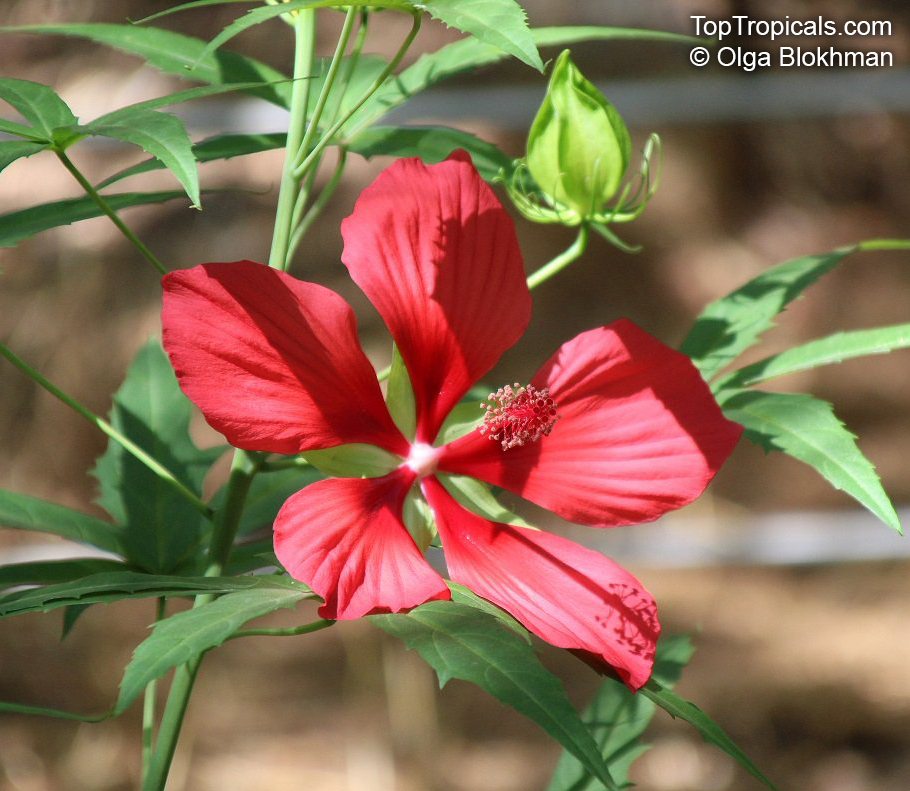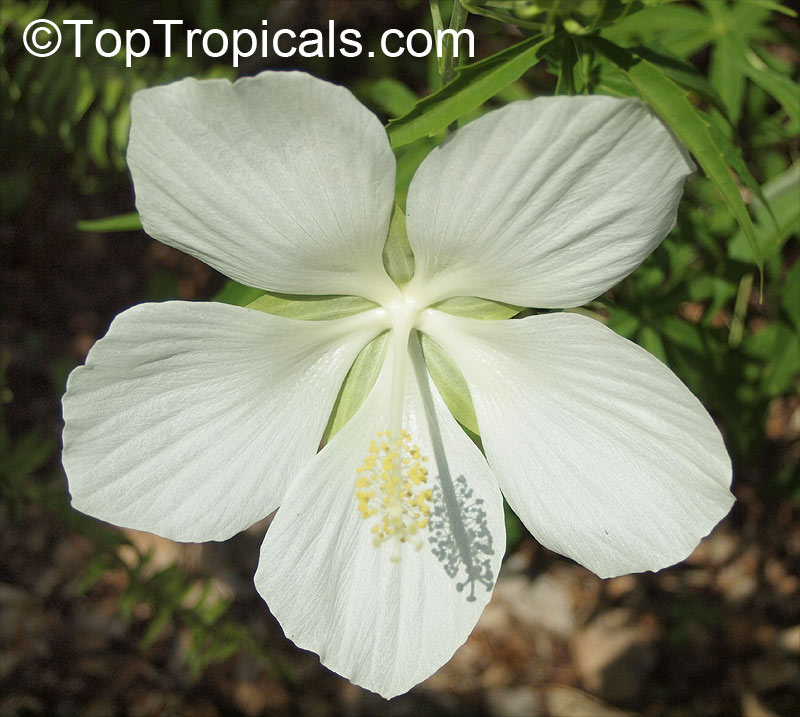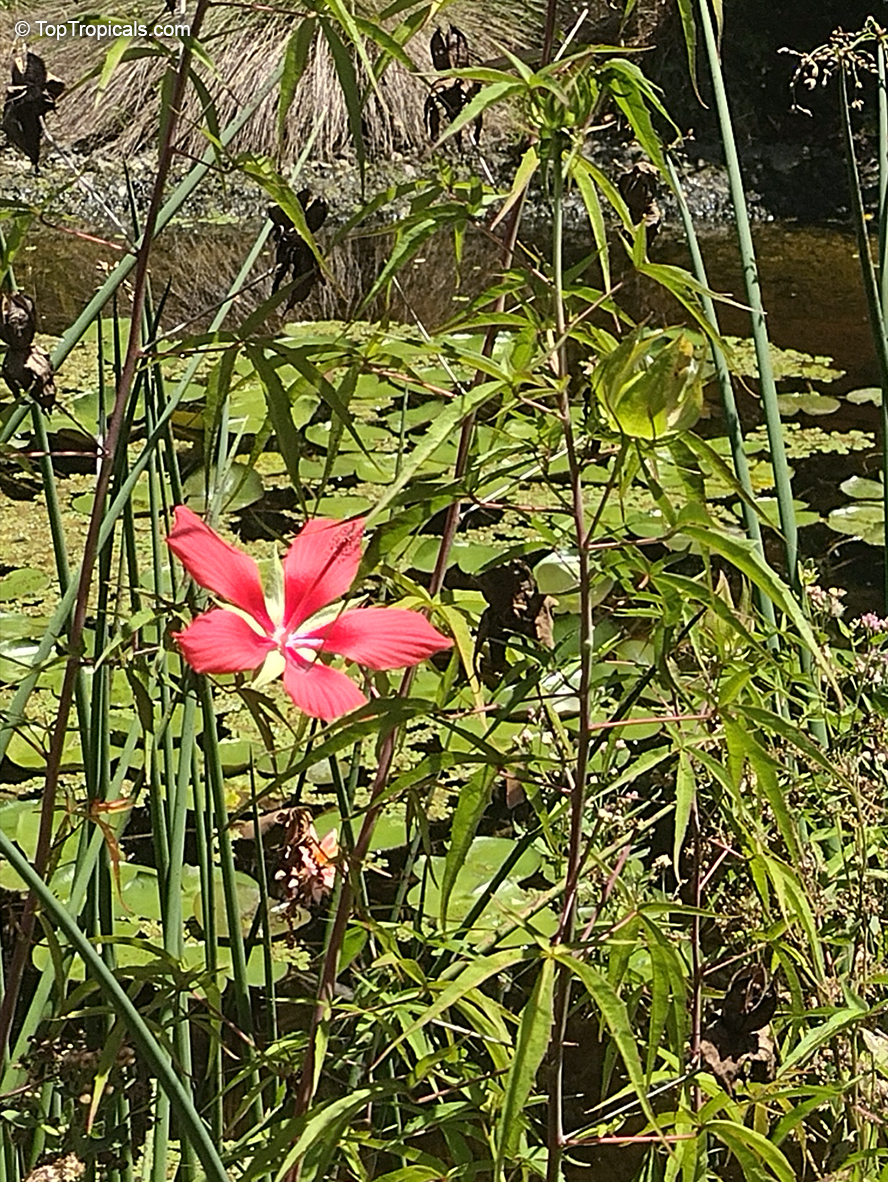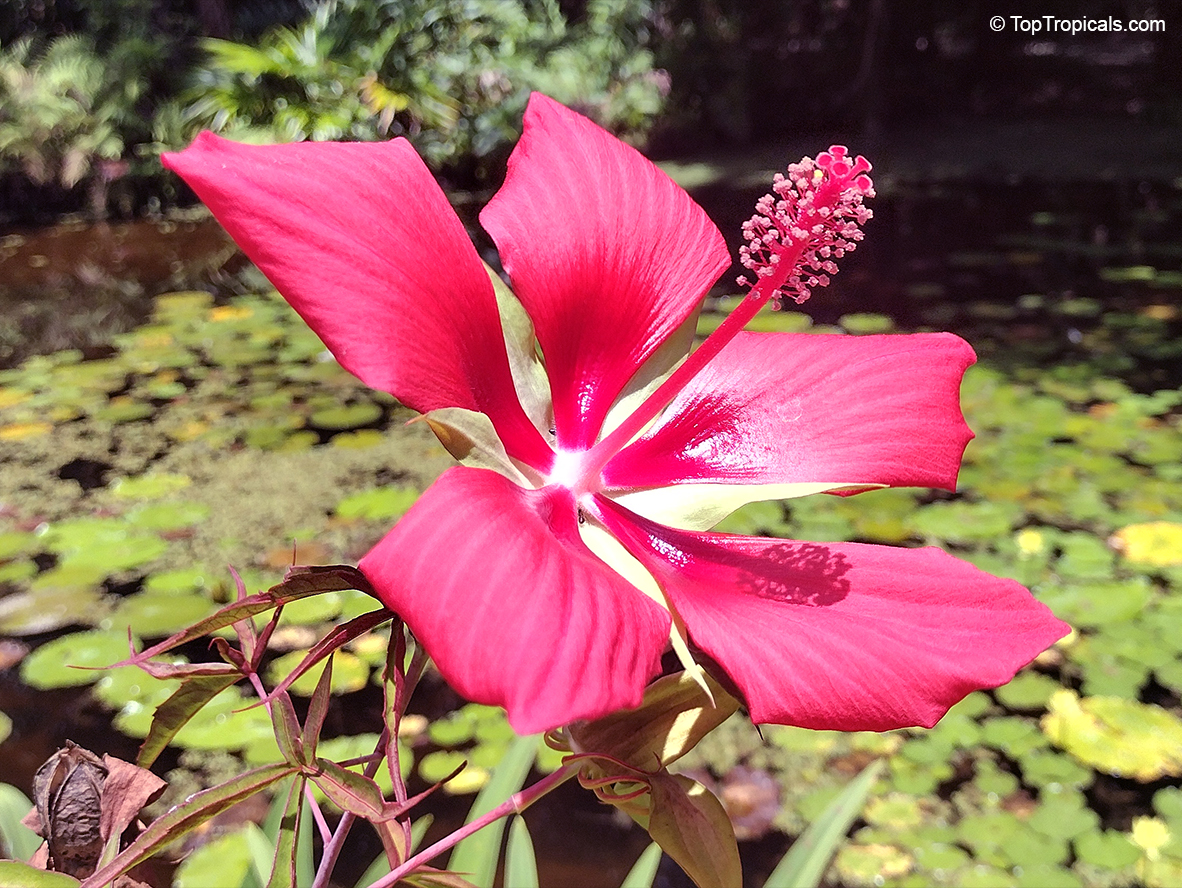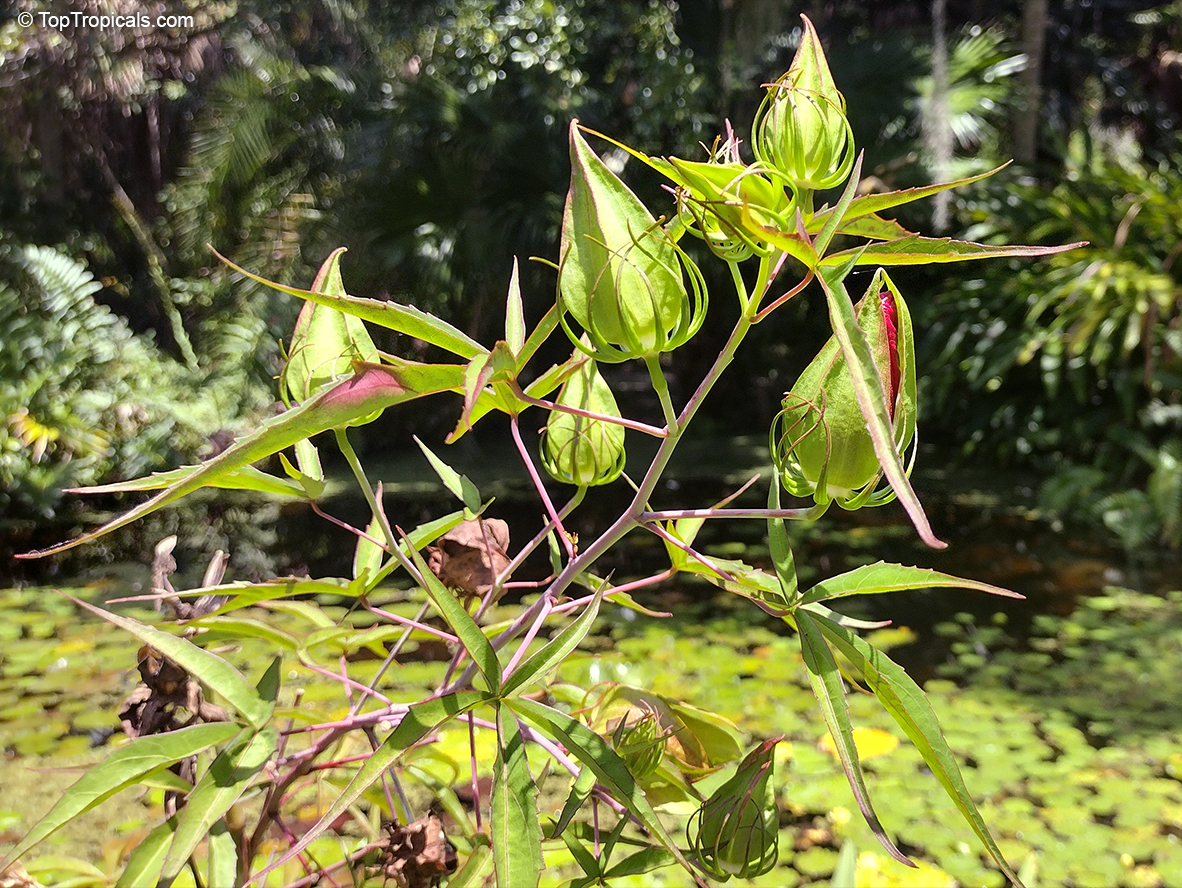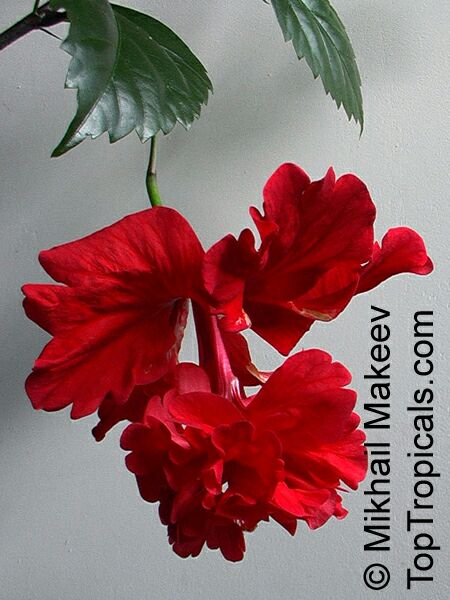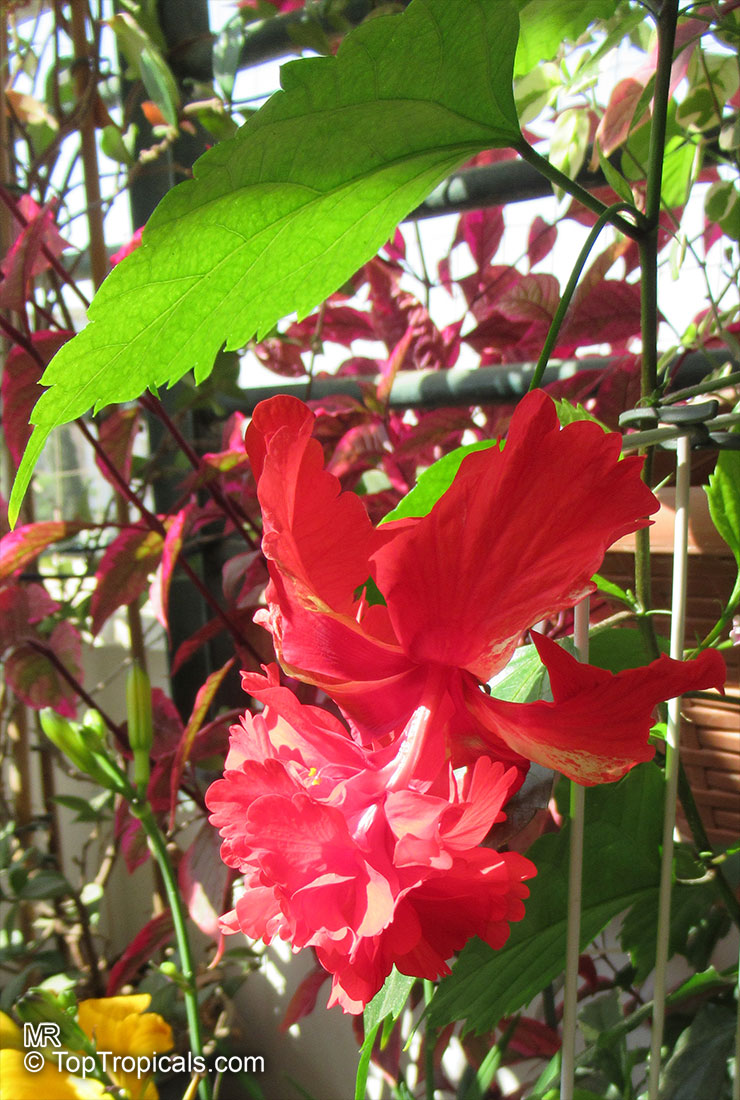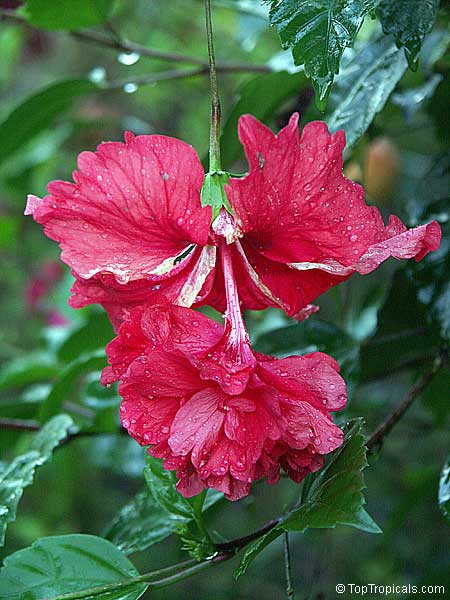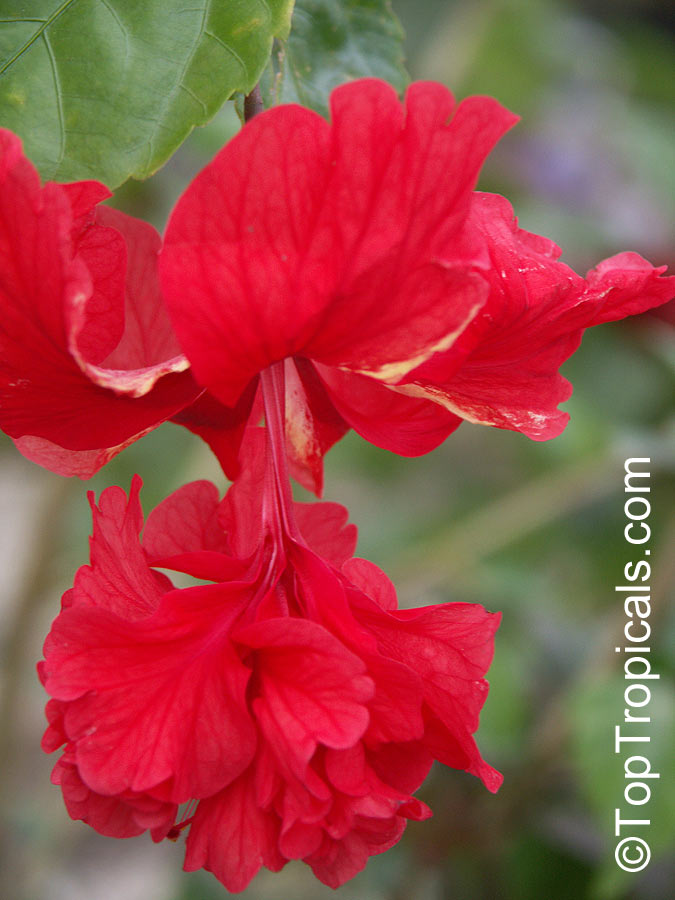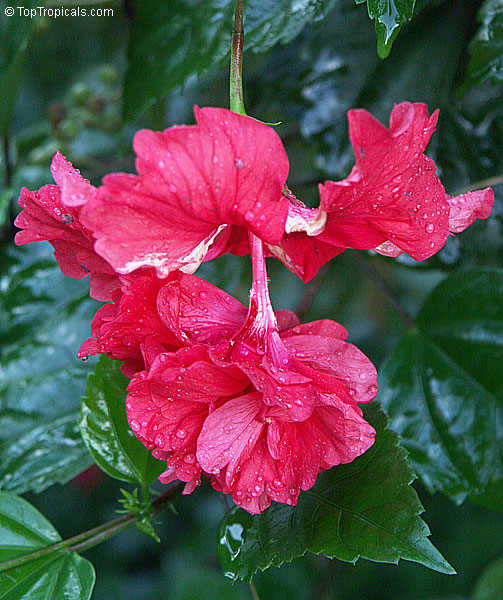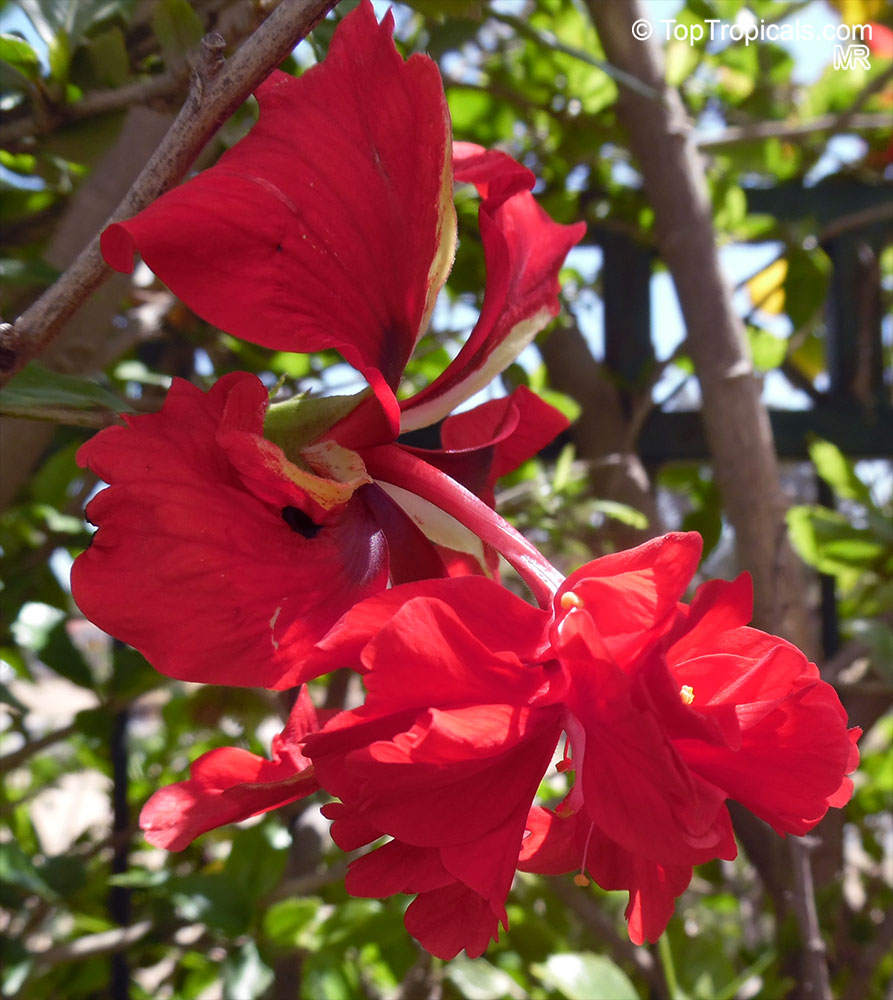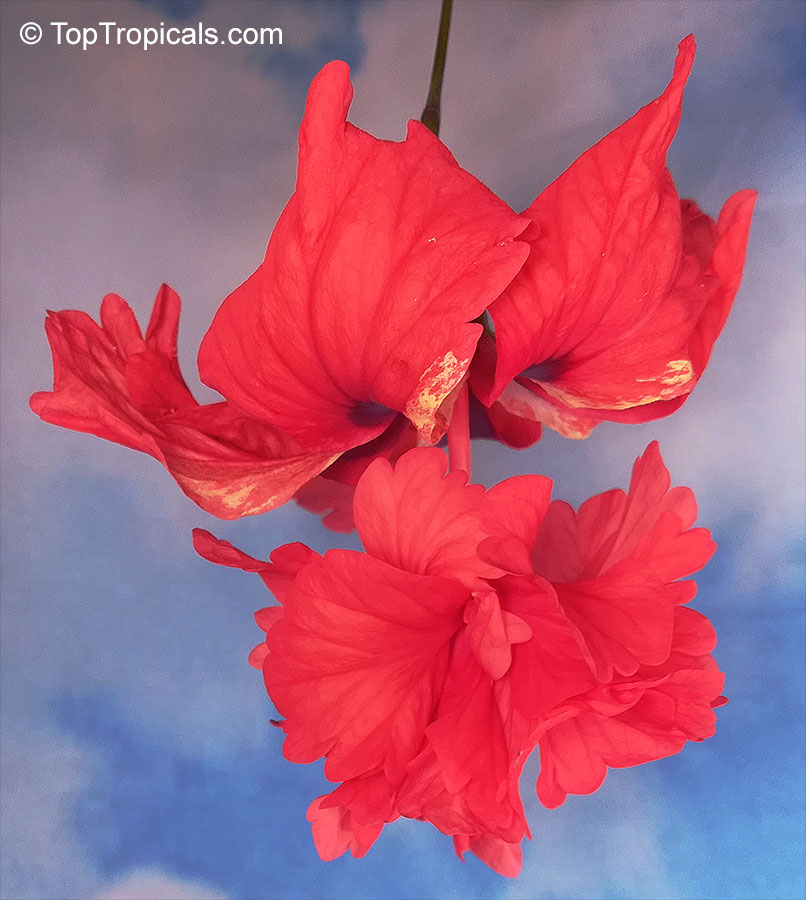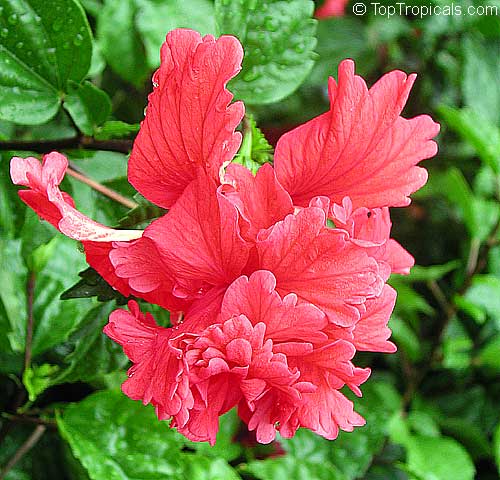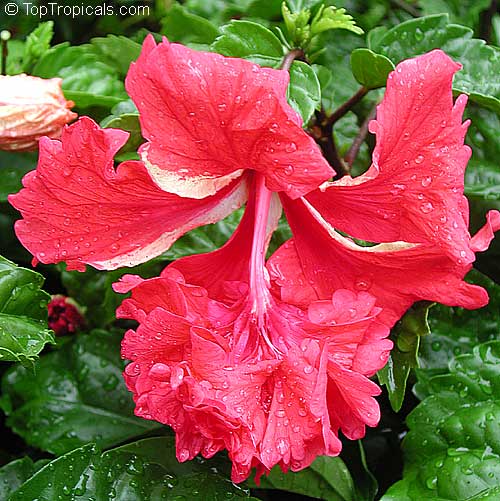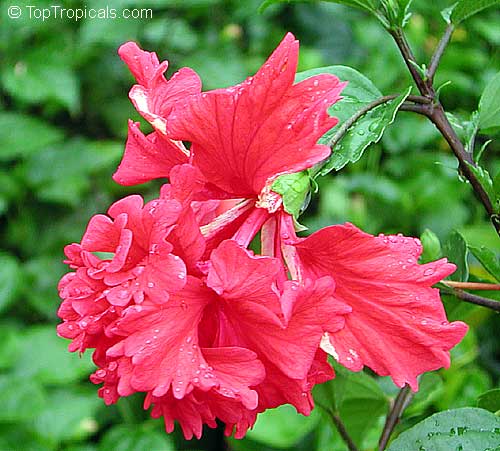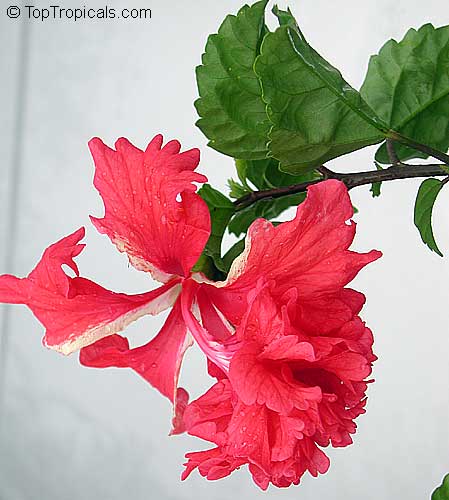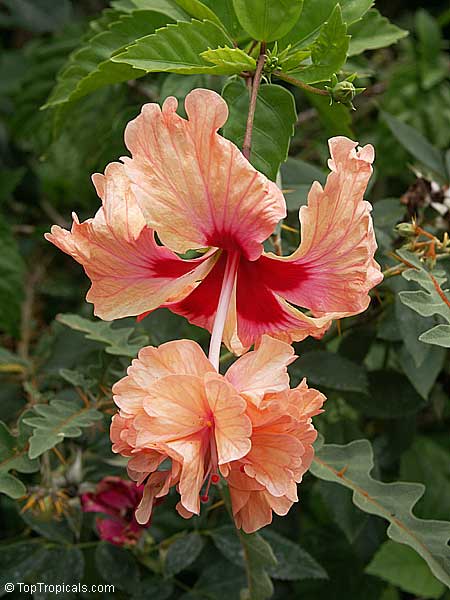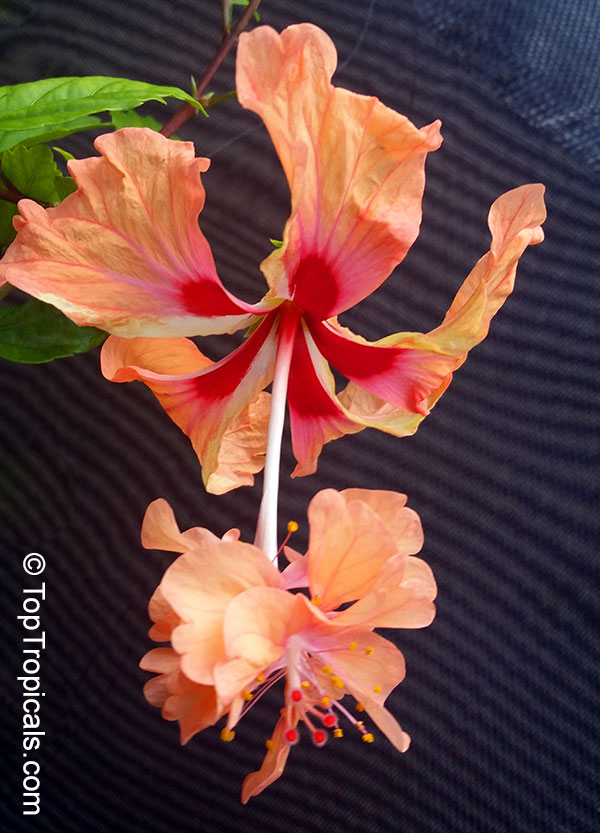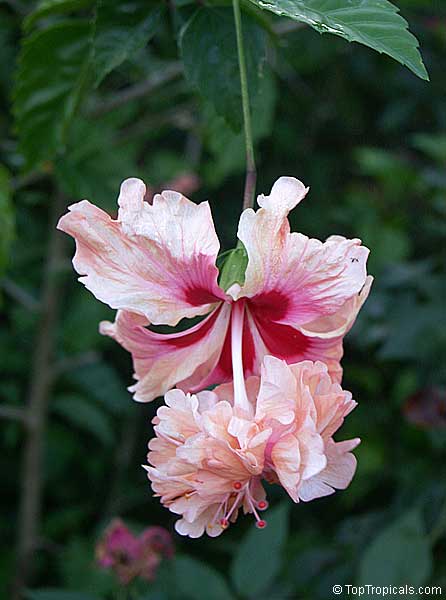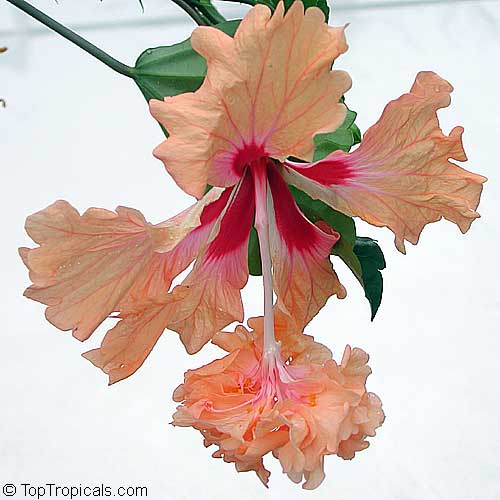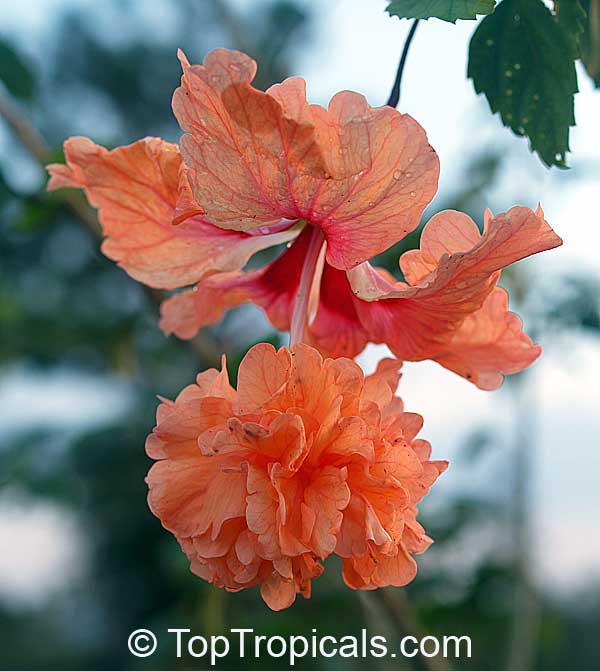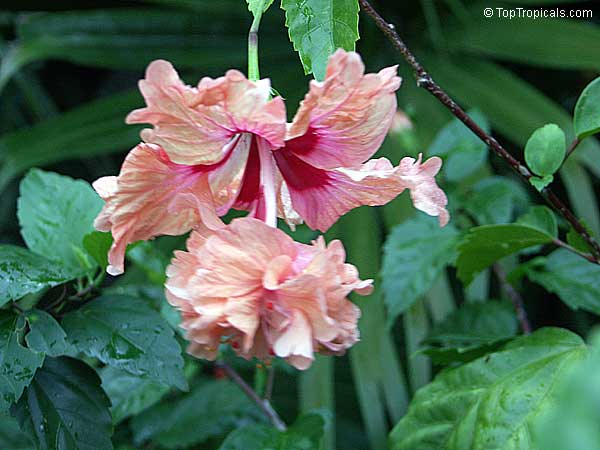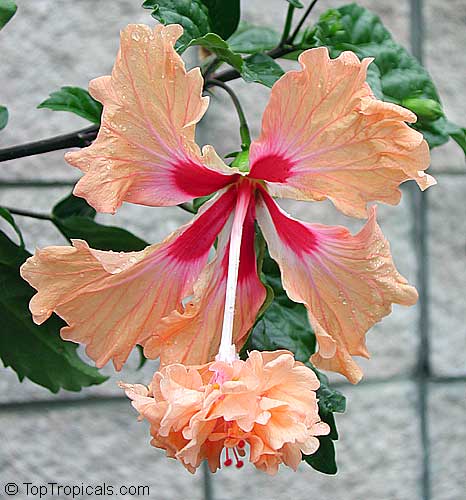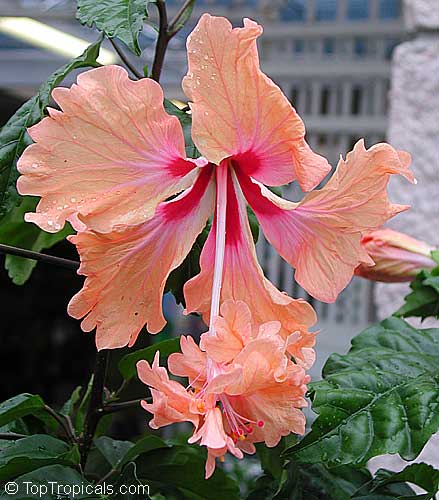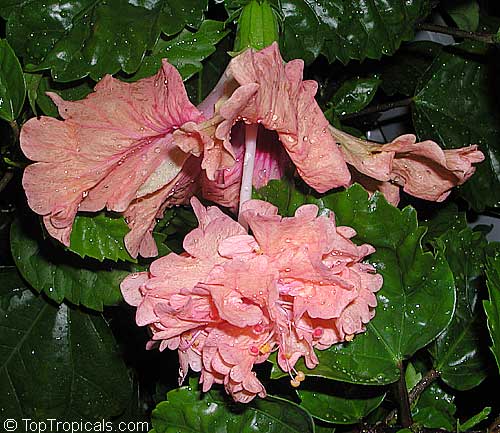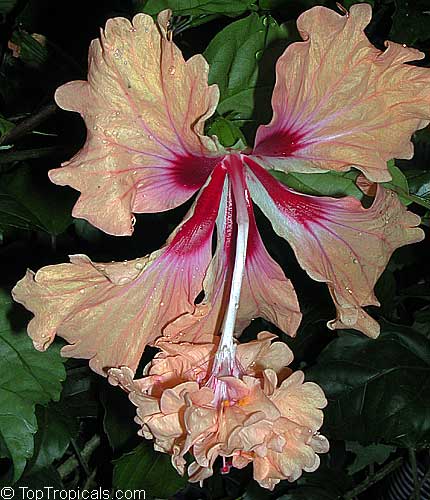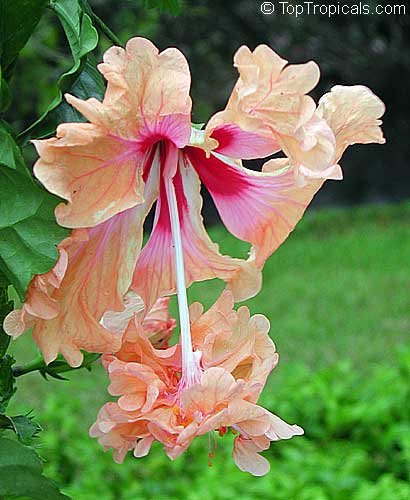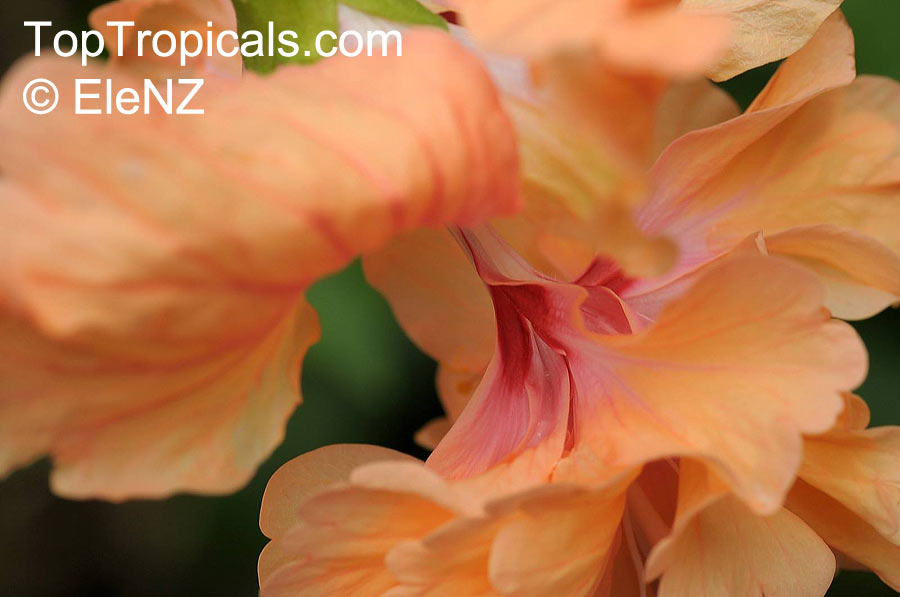Hibiscus - Plant Encyclopedia Results
Top Tropicals Plant Encyclopedia
| Number of plants found: 58 | Next | 
|
Go to page: | 1 | 2 | 3 | 4 | 5 | Last |
Botanical names: Abelmoschus esculentus, Hibiscus esculentus
Common names: Okra, Bamia, Gombo
Family: Malvaceae
Origin: Africa








Abelmoschus esculentus, commonly known as okra, is a flowering plant that is native to Africa. It is a large, fast-growing shrub, growing 5-10 ft tall and producing beautiful white, off-white, and yellow-orange flowers. This plant runs on a shorter lifecycle than most other shrubs, taking only 120-165 days to mature.
Okra does best when grown in warm climates, where it can receive strong direct sunlight, and regular watering. It has adapted over time to thrive in USDA hardiness zones 9-11. As it is a climacteric crop, it benefits greatly from warm, humid days and cool nights.
Regular water needs will depend on the local climate, but okra requires moderate regular watering, even during seasonal to periodical droughts. Soil with a high drainage level and well-aerated conditions will help the plant thrive and reach its full potential.
The plant produces striking large edible seeds within green, finger-like pods. Young, tender okra can be used in stir-fry or soups either blanched or pickled, and raw okra is often used in cold salads. When cooked, it is similar to asparagus. In terms of taste, some describe it to be similar to a combination of mushrooms and eggplant.
Okra is packed with nutrients, including vitamin C, calcium, and potassium. It also contains a healthy amount of dietary fibers, which can help maintain healthy digestion. Health benefits of okra also includes its ability to strengthen the immune system, lower stress, and improve skin and hair health.
In terms of yield, the plant can produce up to few hundred pods per plant, depending on the variety and local climate conditions. Therefore, okra is a great choice whether you are looking to have some fresh fruits in your household.
Botanical names: Abelmoschus moschatus, Hibiscus abelmoschus
Common name: Musk Mallow
Family: Malvaceae
Origin: South East Asia










Valued as an ornamental plant, due to its colorful and attractive flowers. The leaves are alternate, rough, hairy, heart-shaped or 3-5 lobed with serrated margins. Flowers are Hibiscus-like.
Cultivated for aromatic oil from seeds. Young leaves, shoots, and unripe seedpods are cooked as a vegetable.
Botanical names: Alyogyne hakeifolia, Hibiscus hakeifolius, Cienfuegosia hakeifolia, Fugosia hakeifolia, Alyogyne lilacina
Common names: Red-centred Hibiscus, Desert Rose
Family: Malvaceae








A.hakeifolia is a medium, much-branched upright shrub reaching about 10Ft in height. The leaves are dark green, glabrous, comprised of very narrow linear segments. The individual lobes make the foliage 'needle-like'. The plant produces an abundance of blooms each season. There are mauve, yellow and pink forms. Like its relative, Hibiscus, the individual flowers last only 1-2 days but new flowers continue to open over a long period, generally from November until March. The blooms are 2" to 6" long, tubular in shape, not opening widely and they usually have a dark red central spot. As A.hakeifolia is a desert plant, it is well suited to a warm, dry climate. It is intolerant of bad drainage but is adaptable and sufficiently hardy in cool moist climates such as south-eastern Australia. It is less hardy than Alyogyne huegelii in climates such as the subtropics with wet summers. A well-drained sunny spot is ideal although plants will grow in semi-shade. Plants perform best when they receive sunlight for most of the day and have some wind protection as large plants are subject to wind damage. The plant may develop into a well-shaped shrub without any need for pruning but it can be pruned to improve the shape if desired. A.hakeifolia tolerates mild frosts but some protection may be required from heavier frosts. Propagation from seed is relatively easy and no special pretreatment is needed. Cuttings also strike readily.
Botanical names: Alyogyne huegelii, Hibiscus geranifolius
Common name: Blue Hibiscus
Family: Malvaceae
Origin: Australia







Alyogyne huegelii is in cultivation, primarily in Australia and the SW USA, but also in Europe, where it is grown as a conservatory plant. In the former areas is a hardy and adaptable shrub, which is lime, drought and frost tolerant. It requires a well drained soil, but can be grown in sand, loam or clay soils. It can be grown in full sun, or in partial shade. Protection from strong winds is desirable. It is described as suitable for USDA zones 9 and 10, though in wet areas it may be necessary to grow it in containers, or to graft it onto other species of Hibiscus. Although it has a degree of frost tolerance, and has been reported to tolerate 12C of frost for short periods without permanent damage, it is not be suitable for growing in the ground in temperate climates, either due to longer and deeper periods of frost in continental climates, or to winter wet in maritime climates. In such climates there is the option of growing the plant as a conservatory or patio shrub. In mild areas growth as a wall shrub with a sheltered sunny aspect and a well drained soil it may survive for a few years, but will probably be seen off by the first cold or wet winter. Little watering is required, especially if the plants are well mulched. Once established supplementary watering should be required only during extremely dry condition, but is tolerated provided the plants are in a well-drained position.
Botanical name: Hibiscus acetosella
Common names: African Rosemallow, Maple Sugar, Red Hibiscus, Cranberry Shield
Family: Malvaceae
Hardiness: 20°F









This spectacular hibiscus has attractive maple shaped dark red foliage and mauve flowers. Leaves are edible, full of vitamin C, and great for salads. It forms an upright bush, blooms late in the season. Flower is very similar to Hibiscus cannabinus.
Ordering seeds info
RECOMMENDED SUPPLIES:
Seed Germination Mix #3, professional grade
SUNSHINE-Epi - Seeds and cuttings booster
SUNSHINE Bombino - Young Plant Booster
Recommended Fertilizer: SUNSHINE Robusta - Rapid Growth Booster
Botanical name: Hibiscus arnottianus
Common names: Hawaiian White Hibiscus, Hau hele, O'ahu White Hibiscus
Family: Malvaceae
Origin: Hawaii







Hibiscus arnottianus (Hawaiian White Hibiscus) is an evergreen shrub or small tree that grows 5 to 10 feet tall and wide, although some specimens may reach up to 20 feet tall. It does best in full sun or semi-shade, with slightly acidic, well-drained soil. Water regularly, but avoid over-watering. Fertilize in the early spring with a balanced fertilizer. Prune to shape after flowering.
In USDA hardiness zone 9-11, Hibiscus arnottianus may be grown in pots and brought in during winter months. In order to survive in cold environment, it is ideal to locate it in a sheltered area such as a patio or under a tree. The pot should have some drainage holes in it and should be filled with a well-draining soil mix. Additionally, keep in mind that Hibiscus arnottianus is a tropical plant, it won't survive freezing.
Hibiscus arnottianus is a endangered Hawaiian endemic plant. It is native to the moist to wet forests of the mountains of Moloka'i and O'ahu.
Botanical name: Hibiscus cannabinus
Common names: Kenaf, Java Jute
Family: Malvaceae
Origin: Africa









Hibiscus cannabinus grows beautiful palmate leaves. It produces very beautiful dark red, almost purple flowers. The common name applies to the fibre obtained from this plant.The leaves and roots are edible, and they are used along with the seeds in herbal medicine for the treatment of coughs.Similar species - Hibiscus furcellatus.
Kenaf seeds yield an edible vegetable oil.
Very fast growing, forms a large bush in one season. Tolerates dry conditions. Grow your edible landscape in no time!
With proper care and protection, this plant can provide a striking display of color and texture in the garden year after year.
Trimming is beneficial to keep a compact and bushy shape.
This species is often confused with H. furcellatus and sometimes offered in trade under that name.
Learn more about edible hibiscus: Most useful Hibiscus plants.
Recommended Fertilizer: SUNSHINE Megaflor - Bloom Nutrition Booster
Last one
Ordering seeds info
RECOMMENDED SUPPLIES:
Seed Germination Mix #3, professional grade
SUNSHINE-Epi - Seeds and cuttings booster
SUNSHINE Bombino - Young Plant Booster
Botanical name: Hibiscus coccineus
Common names: Scarlet Hibiscus, Scarlet Rose Mallow, Swamp Hibiscus
Family: Malvaceae
Origin: Southeastern United States








This large shrub grows 5-10 feet (1.5-3 m) tall and wide. It has large, deeply serrated, palmate leaves and blooms in mid to late summer. The magnificent red, crimson, or vinous flowers have irregularly shaped petals and are very attractive to butterflies and hummingbirds.
Scarlet Hibiscus prefers full sun in warm climates and semi-shade in cooler regions. It is a moderately drought tolerant plant once established, although it does best with regular water. In cold climates it is best grown in a container which can be moved indoors in cold winters. In these areas, the container should be kept well drained, and the soil lightly moistened, ensuring that the pot does not dry out completely.
This shrub is best propagated from cuttings of perennial wood taken in spring or early summer; however, healthy plants can be readily purchased from garden centers. Once established, scarlet hibiscus is a low-maintenance plant that is pest- and disease-free. It is also an excellent choice for naturalizing as it easily self-propagates.
Botanical name: Hibiscus El Capitolio Group
Common name: Bloody Mary Hibiscus
Cultivar: Bloody Mary
Family: Malvaceae







Hibiscus El Capitolio Bloody Mary is a rare and striking variety with pendant flowers featuring a double skirt of ruffled, vinous-red petals. This evergreen to semi-evergreen shrub reaches 5 to 10 feet tall with arching branches, perfect for sunny or semi-shady spots, even seaside locations. Thriving in USDA Zones 9-11, it tolerates moderate water, flooding, and needs well-draining soil. Its dramatic crimson blooms, borne in pairs, peak in summer, adding year-round beauty to any garden.
Recommended Fertilizer: SUNSHINE Megaflor - Bloom Nutrition Booster
Botanical name: Hibiscus El Capitolio Group
Common name: Tequila Sunrise Hibiscus
Cultivar: Tequila Sunrise
Family: Malvaceae








Hibiscus El Capitolio Tequila Sunrise is a stunning showstopper of a shrub. Reaching heights of 5 - 10 feet, this large shrub is a hybrid of hibiscus and has pendant double-skirted flowers. It is easy to grow and fast-growing, making it the perfect choice for any gardener looking for a showy shrub to add to their garden.
This hybrid is highly resistant to drought, heat and diseases, making it a low-maintenance choice for any gardener. Plus, it can be easily propagated from cuttings, making it even easier to care for. It can also be trained into a standard tree shape if desired, but usually grows into a large multi-branched woody shrub.
Hibiscus El Capitolio Tequila Sunrise blooms almost constantly and can produce both pink and yellow or orange flowers. The blooms are quite showy and will bring color to any garden. Plus, it is a versatile plant that can be grown in different climates and soils, as it is flood and seaside salt tolerant.
When it comes to caring for Hibiscus El Capitolio Tequila Sunrise, the shrub prefers full sun or semi-shade and will need to have the soil kept moist. The mature plant is cold hardy and can tolerate temperatures down to 30s F for a short time, making it suitable for USDA Zone 9 - 11. If you live in a colder region, you can grow it in a pot and bring it indoors over the winter.
Overall, Hibiscus El Capitolio Tequila Sunrise is a beautiful and low-maintenance shrub that will bring color and life to any garden. With its ability to tolerate different climates and soils, it is a great choice for any gardener.
| Next |  |
Use link to repeat this search:
https://toptropicals.com/cgi-bin/garden_catalog/cat.cgi?find=Hibiscus&search_op=and&keyword_op=and&language=e&number=10
&no_change_lang=1&user=tt&sale=1&first=0
